Taking Planning Forward Third Edition 2017 - 2018 PhD Community Highlights and Research Projects at the Bartlett School of Planning



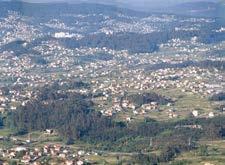

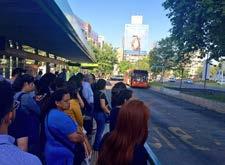

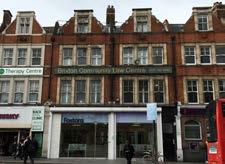

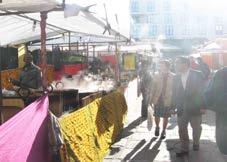




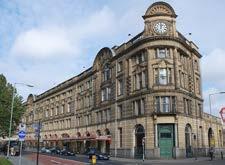
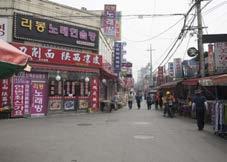
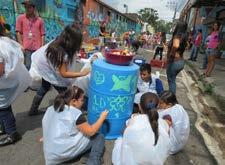
5 9 13 16 6 10 14 17 7 11 15 4 8 12 1 2 3
Contents
The Bartlett School of Planning .............................ii
Foreword to the third edition.......................................iii
Forewords to the first and second editions.....iv
Preface for third edition..........................................vi
Community Highlights.........................................2
Collective Initiatives...........................3
Conference Contributions...........................7
Recent Publications...........................13
Individual Research Projects...........................16
1. The contribution of social capital to the urban ecological resilience of self-help settlements. The case of Nezahualcoyotl, in the Metropolitan Area of Mexico City. Alejandro Rivero Villar ......................................17
2. Invisible city: A framework to understand multisensory perception in urban public space. Alexandra Gomes .......19
3. How and why do private developers engage in green building practice? The case of Bangkok, Thailand. Alizara Juangbhanich .........................21
4. The Urban Design Principles for Southeast Asian Cities: An Approach from the Metaphor of Urban Footprints. Anon Chaimanee...................................23
5. Urban and social equity impacts from transport: Evidence and approaches from Santiago de Chile. Beatriz Mella Lira .................................................25
6. Searching for an urban sustainability fix in China: A case study of the Pearl River Delta Greenway Project. Calvin King Lam Chung ...................................................27
7. Is English devolution fit for purpose? David Kingman .......29
8. The Morphology of Urban Voids: A Metabolic Approach to Cohesion. The Case of Eleonas in Athens. Dimitris Panayotopoulos .......31
9. Transit Oriented Development Land Policy for Public Transport Funding. Bonvino Gualitero...............33
10. Planning and design of suburban fortunes: Urban policies and suburban socio-economic and spatial transformation in Tokyo Prefecture under three-tier governmental system. Hiroaki Ohashi ...........................35
11. The mechanism of social capital in the participatory planning with diversity: The foundation phase of community-led regeneration of Seoul, South Korea. Hyunji Cho ....................................37
12. Exploring the impact of external knowledge spillover on a catching-up economy. Ilwon Seo .....................39
13. The Role of Built Environment Quality in FDI Attraction: The Case of Paris Ile-de-France, 2010-2015. Jacob Thomas Simpson............41
14. Policing and politicising austerity urbanism in London. Joe Penny ....................................................43
15. Fear of Crime beyond the Walls. Effects of Gated Communities in Neighbouring Public Spaces. The Case of Greater Metropolitan Area of Costa Rica.Karla Barrantes Chaves .............................................45
16. Everyday infrastructures in the in-between territories. The potential of decentralised infrastructures in Santiago de Compostela metropolitan area. Lucía Cerrada Morato ......47
17. Exploring the Relation between Transport and Social Equity: Empirical Evidence from London and Beijing. Mengqiu Cao .................................49


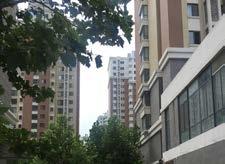


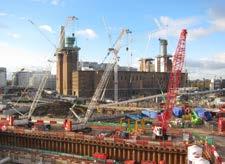


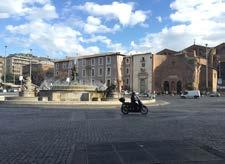
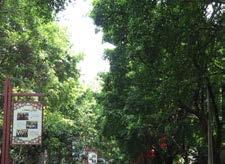
24 22 25 23 26 27 20 21 18 19
18. Landscape Character Conservation through Local Communities’ Participation: The Case of Colombian Cultural Landscapes. Miguel Hincapié Triviño ........51
19. Social Equality in Urban Conservation: Housing in Mexican Historic Centres of Mexico City and Guadalajara. Mónica López Franco .....53
20. The construction of the housing market: National housing discourse and market mediation. Phoebe Stirling ................................................................55
21. Migrant Integration in Peri-urban Beijing. Siyao Liu ..57
22. Vacant land in London: Narratives about people, space and time. Sonia Freire Trigo ............................59
23. Clusters of Urban Renaissance and the New Geography of Innovation: A case study of Rome. Stefania Fiorentino ......................................................61
24. Governance in housing delivery networks: The case of two pathways of low-income housing programmes in Thailand. Umnaj Thananantachai ..............................63
25. Building the entrepreneurial city: Local politics transformation and Flagship Culture-led Redevelopment in Xi’an, China. Yixiang Sun ...........................................65
26. We are Designing Transport Resilience for whom and for what? Understand Public Transport System Resilience from Joint Perspectives. Yuerong Zhang.....67
27. Migrants’ subjective wellbeing in Urban China. Yuqi Liu .................................................................69
References ....................................................................71
Credits ..................................80
i
The Bartlett School of Planning
The Bartlett School of Planning is a world centre for learning and research about the form, planning, design and management of cities. Our location, history and expertise have made our programmes and research among the most stimulating and sought-after in the field of planning. We are part of The Bartlett: UCL’s global faculty of the built environment.
BSP staff currently supervising PhD candidates:
Dr Sonia Arbaci / Dr Yasminah Beebeejaun / Professor Matthew Carmona / Dr Elisabete Cidre / Dr Ben Clifford / Dr Claire Colomb / Professor Harry Dimitriou / Professor Michael Edwards / Professor Nick Gallent / Dr Iqbal Hamiduddin / Dr Robin Hickman / Dr Nikos Karadimitriou / Dr Qiulin Ke / Professor Claudio de Magalhães / Professor Stephen Marshall / Dr Susan Moore / Professor Nick Phelps / Professor Mike Raco / Professor Yvonne Rydin / Dr Pablo Sendra / Dr Michael Short / Dr Jung Won Sonn / Dr Tse-Hui Teh / Professor John Tomaney / Dr Catalina Turcu / Dr John Ward / Dr Joanna Williams / Professor Fulong Wu / Dr Filipa Wunderlich / Dr Fangzhu Zhang
BSP PhD candidates 2017/18:
Alejandro Rivero Villar / Alexandra Peça Amaral Gomes / Alireza Kolahi / Alizara Juangbhanich / Anon Chaimanee / Arifin
Zaenal / Beatriz Mella Lira / Bong Kyung Jeon / Brian Garcia / Calvin King Lam Chung / Carina Schneider / Chien-Ling Lo / David Kingman / Derry O’Connell / Daniel Fitzpatrick / Dimitris Panayotopoulos / Dongho Han / Elena Besussi /
Elisabeta Ilie / Feng-Shu Chang / Gualitiero Bonvino / Hiroaki Ohashi / Hitomi Roppongi / Hyunji Cho / Ilwon Seo / Jacob Simpson / Ji Hyun Kim / Jingyi Zhu / Joe Penny / Jorge Martín Sainz de Los Terreros / Ju Eun Kim / Juan Alberti Vazquez / Justinien Tribillon / Karla Barrantes Chaves / Katayoun Karampour / Khairul Rizal / Lorna Qesteri / Lucia Cerrada Morato / Maria Eleni Petrakou / Marco Dean / Mengqiu Cao / Michael Manlangit / Miguel Hincapié Triviño / Mónica López Franco / Nan Li / Paul Hildreth / Pheobe Stirling / Reetuparna Sarkar / Richard Timmerman / Ruth Sepulveda Marquez / Seamus Clearly / Siyao Liu / Sizhe Chen / Sonia Freire Trigo / Stefania Fiorentino / Steve Chambers / Terpsithea Laopoulou / Tianke Zhu / Umnaj Thananantachai / Vafa Dianati Maleki / Veeramon Suwannasang / Weilong Zhang / Xiangyu Wang / Xiaoxuan Lan / Xing Gao / Yixiang Sun / Yuerong Zhang / Yuqi Liu
Further details of past and current BSP MPhil/PhD research students and their topic of research at: https://www.ucl.ac.uk/bartlett/planning/people/mphilphd-students
ii
Foreword to the Third Edition
Once again, the research student community within the Bartlett School of Planning have shown in this publication the diversity, originality and scientific excellence of their research activities. These young scholars are at the forefront of research in planning studies and even pushing that frontier outwards with their work. New problematics are being investigated, topical issues are being re-examined and innovative theoretical terrains are being traversed. What is particularly noteworthy is that the links to practice and policy are never far away. This is research that, once completed, has the potential to change our planning, design and management of the built and natural environment. Last year the Bartlett School of Planning inaugurated an
annual BSP Postgraduate Research Day at which students approaching the important milestone of upgrade present their research plans during the day and, at a public evening event, students approaching completion and submission of their thesis report on their findings. This evening event, in particular, highlights this contribution of the research student community to planning studies and will be an important landmark each year for the School, one to which all are warmly invited. Please look out for details on the BSP website.
Yvonne Rydin London, April 2018
Foreword to the Second Edition
In 2014, PhD students at the Bartlett School of Planning came together to catalogue the range of research being undertaken in our school during its Centenary Year. Peter Hall, who wrote the foreword to the first edition of Taking Planning Forward, called it an ‘extraordinary collection of essays’ highlighting the range of projects and places being researched by the school’s PhD community. Many of those projects are now complete but a great many others have commenced. The school’s 60 plus PhD students continue to work the frontiers of planning research, opening up new avenues of enquiry and addressing some of the most pressing questions of urban innovation and entrepreneurialism, neighbourhood change and social equity, housing market processes and housing justice, urban design quality, and future infrastructure need and development. Their projects have the same diverse geographical foci flagged by Peter three years ago, though many are about London and the challenges it will face in the next century.
The 2017 edition of Taking Planning Forward contains 26 accounts of projects in progress or recently completed. These range from studies of green building in Thailand and inequities arising from transport access in Chile, through examinations of gated communities in Costa Rica and urban growth and transformations in China, to austerity urbanism and housing market dynamics in London. It is necessarily only a snapshot of the school’s research, but nevertheless indicative of the diverse interests of both students and planning staff members. The publication of this new edition coincides with the launch of the ‘BSP Expo’ in May. The Expo will be an annual gathering of current and former staff members and students and the school’s many friends and partners. It will be a celebration of student success, of which the work of our PhD students is a very significant part.
London, March 2017
iii
Nick Gallent
Foreword to the First Edition
In celebrating the centenary of the Bartlett School of Planning, this extraordinary collection of essays eloquently demonstrates how far our School has travelled. They all come from students on our PhD programme – now a major part of our offering – and show the range, depth and originality of the work our research students are actively undertaking, on topics here in London and more widely across the world. It seems difficult now to comprehend that when Stanley Adshead was appointed as first UCL Professor of Town Planning, in September 1914 – one month into World War One - the School offered a part-time College Certificate in Town Planning to a handful of students. Only half a century later, in the 1960s, when Richard Llewelyn Davies took charge and created the modern Bartlett, did research became at all significant. And it is only in the last decade that the PhD programme has grown to its present astonishing size and range of activity: 60 PhD students, actively engaged on research with huge potential for
improving our understanding of the world we are planning for, and the ways in which we can plan better.
The 23 essays, carefully chosen by Rodrigo Cardoso to represent the widest possible cross-section, give a picture of the variety of topics and geographical foci: from London’s Silicon Roundabout to Taiwan, from the highly abstract to the extremely concrete, from temporary urban events to long-term urban change. But what unites them is their sense of purpose: this is research not for its own academic sake – though it clearly aims to achieve that hallowed academic objective, “a significant contribution to knowledge” – but to achieve a practical end in the real urban world we live in and seek in multiple ways to improve. This is serious research to a purpose: a wonderful testament from a great professional school at the height of its powers.
Peter Hall London, May 2014
iv
A visual map of recently completed and ongoing PhD research
H yunji Cho
Miguel Hincapié Triviño
Phoebe Stirling
Housing
Alexandra Gomes
Urban design
Sonia Freire Trigo
Siyao Liu
Urban regeneration
Joe Penny
Dimitris Panayotopoulos
Justinien Tribillon
contribution
David Kingman
UK
Europe
Zheng Wang
Americas
Beatriz Mella Lira
João Ferreira Bento
Monica López Franco
Regional
Yuqi Liu
Alejandro Rivero
Tingting Lu
Nan Li
Karla Barrantes Chaves
Jihyun Kim
Jorge Martín Sainz de los Terreros
Ilwon Seo
Hiroaki Ohashi
Yixiang Sun
Lucía Cerrada Morato
Yingcheng Li
Umnaj Thananantachai
Ine Steenmans
Alizara Juangbhanich
Derry O'Connell
Calvin King Lam Chung
Stefania Fiorentino
PhD Projects at the Bartlett School of Planning
location
topic
scale researcher research keyword
This poster presents 32 of the recently completed and ongoing research projects undertaken by members of the doctoral community at the Bartlett School of Planning. It lays out the projects in the form of a sociogram to capture the intricate linkages among them in terms of their topic, location, scale and nature of contribution. Details of many of them can be read in the second edition of the publication ‘Taking Planning Forward’.
Sociogram of recently completed and ongoing research projects at the Bartlett School of Planning
Contribution
Location
Topic
Scale
Research
Keywords
Researcher
Urban infrastructures Urban sustainability
and mob ility Suburban
development Governance Urban transport
development
Mengqiu Cao Actor-Network Theory Affordances Block Morphology Boundary Club Theory Collaborative Collective Identities Cultural Representations Decision Support Experiential Gated Communities Land Use Landscape And Infrastructure Legitimacy Neighbourhoods Node-Place Participation Publicness Railway Station Safety Small Towns Strategy Suburbanisation Tools Translation Urban Boundaries Urban Imaginaries User Activity Organisational Behaviour Developer Behaviour Corporate Environmentalism Green Building Bangkok Clusters Urban Economies Creativity Capitalism Urban Voids Morphology Metabolism Cohesion Housing Markets House Price Inflation Social Construction Market Discourse Urban Resilience Social Networks Climate Change Self-Help Settlements Lefebvre Thematic Analysis Battersea Power Station Royal Docks Urban Sustainability Fix Eco-State Restructuring Urbanisation Land Development Greenway Devolution Development Rebalancing City-Regions North-South Divide Urban Conservation Values Significance Transference Travel Vulnerability The Capabilities Approach London And Beijing Sprawl In-Between Territories Infrastructures Post-Networked City Sustainable Multi-Sensory Sensescapes Urban Space Perception Framework New Public Management New Public Governance Thailand Megalopolis Knowledge Collaboration Urban Network Polycentricity The Yangtze River Delta Region Cultural-Led Regeneration Entrepreneurialism Local Governance Urban Policies Architectural Policies Design Governance Europeanization Design Quality Urban Design Social Integration Neighbourly Relations Intergroup Relations Suburban Shrinkage Suburban Revitalization Urban Policy Spatial Planning Economic Development Immigrant Group Community-Led Regeneration Participatory Planning Subjective Wellbeing Neighbourhood Deprivation Sustainable Development Urban Design Quality Landscape Conservation Urban Heritage Bogota Transport Planning Capability Approach Social Equity Transport Project Assessment Social Inclusion Knowledge Production Catching-Up Regional Innovation Austerity Neoliberalism Urban Entrepreneurialism Financialisation Politicisation Migrant Integration Segmented Assimilation Chinese Migrants Neighbourhood Governance Urban Anthropology Social Capital Public Space Rural Migrants Social Justice Urban China China
Theoretical
Conceptual/
Empirical
Methodological City
Neighbourhood/District Region Asia
The Bartle tt School of Planning
v
Preface for the Third Edition
Taking Planning Forward returns in its third edition for a review of the new and exciting achievements of the PhD community in the Bartlett School of Planning (BSP) since the release of its second edition in May 2017.
Extended abstracts of research projects pursued by PhD students in the BSP continues to form the core part of this book. Apart from reproducing 17 abstracts debuted last year by our continuing students, this edition welcomes 10 new and revised ones, which reflect a combination of aspiration of new students and progress in ongoing inquiries. Themes which have received much greater attention from our community include sociohistorical roots of geographically varied principles of urban design, relationships between built environment quality and foreign domestic investment, and resilience of public transport system, to name but a few. Readers with sharp eyes will also notice the addition of a summary of recent publications from members of the BSP PhD community, a move to celebrate their recognised scholarly and professional contributions to the field of planning.
‘Taking planning forward’ is not only a goal pursued by PhD students in the BSP individually, but also collaboratively within and beyond our base in Central House. To better highlight the latter, this edition launches a new section to recap the wide range of activities to which members of our PhD community have contributed in various capacities. Some of these activities have been a staple in the BSP, such as the ‘Lonely Planner’ talk series, which was first run in 2009. Others, like the Socially Just Planning Doctoral Network, have a relatively short history, but have quickly established its reputation in the Bartlett and other institutions. It is through these activities that more dialogues and synergies are promoted not only among we the BSP PhD students, but also between us and the wider academic community.
Speaking of collaborative endeavours, this book could not have been published without the support from many people across the BSP. To begin with, we would like to thank Professor Nick Gallent, head of the BSP, for his sustained support to this publication initiative. We are
heavily indebted to Professor Yvonne Rydin, tutor for BSP PhD students, who have heralded and supported various activities for the development of the BSP PhD community. Many of our research works and events reported in subsequent pages rest upon the administrative support from Ms Lisa Fernand and her team in the BSP office, to whom we are most grateful. Our gratitude also goes to convenors of the BSP Expo 2018, in which this edition will be formally launched. Last but not least, a big thanks to all PhD students in the BSP, whose hard work in taking planning forward over the last year lies at the heart of this book.
The Editorial Team
Karla Barrantes Chaves
Calvin King Lam Chung
Miguel Hincapié Triviño
Alizara Juangbhanich
Dimitris Panayotopoulos
April 2018
vi
Community
Highlights C oll ECT iv E ini T iaT iv ES C onf ERE n CE C on TR i B u T ion S RECE n T P u B li C aT ion S Part 01
Collective Initiatives
The Bartlett School of Planning encourages a lively research culture, and this has been reflected in the range of events and activities organised by members of the PhD Community. They aim to stimulate dialogue among BSP staff, students, alumni as well as the wider academic community.
In this edition of Taking Planning Forward, we showcase four recurrent initiatives: the Socially Just Planning Seminars organised by the Socially Just Planning Doctoral Network, the ‘Lonely Planner’ talks, our PhD Away Days, and the BSP Postgraduate Research Day launched by Professor Yvonne Rydin, BSP Graduate Tutor for Research Students.
3
Socially Just Planning Seminars
Organised by the Socially Just Planning Doctoral Network
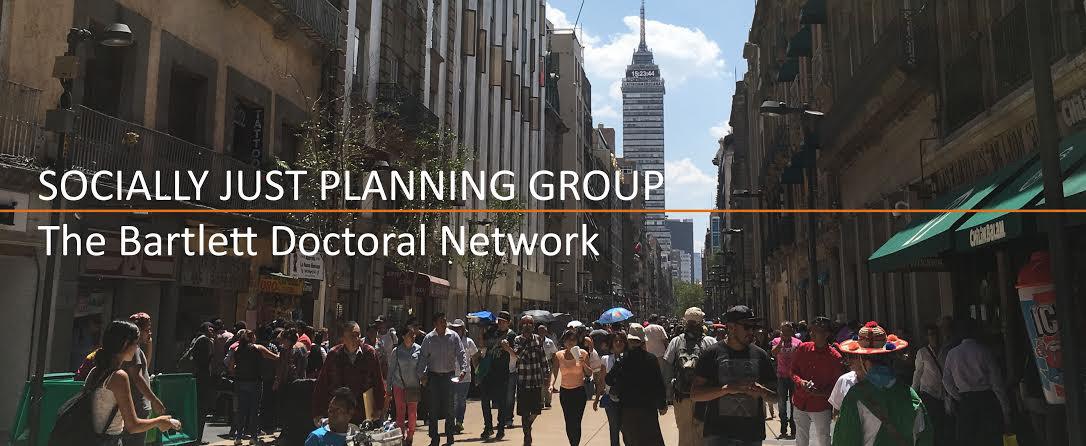
The Socially Just Planning (SJP) Doctoral Network was established in 2017 with an aim to bring attention of the PhD and The Bartlett community about the significance of improving equity and quality standards in planning projects, initiatives and research, thereby contributing to further development of the idea of social justice around the field of planning. This has been done through promoting discussions of on-going research projects and initiatives in the fields of transport, regeneration and public spaces as three different, yet related, domains for socially just urban planning.
The Network follows in the footsteps of the Socially Just Transport Doctoral Network, founded in 2015 with support from the Bartlett Doctoral Initiative Fund, which sponsors PhD student-led initiatives in the Bartlett to promote cross-faculty research collaboration. With additional focus on regeneration and public spaces, the Network hopes to encourage more PhD students, as well as staff, from the Bartlett and other faculties from UCL and beyond to develop links and share expertise with their peers on promoting social justice within planning.
Central to the Network is a series of Socially Just Planning Seminars, which take turn to cover the three core themes of transport, regeneration and public spaces. With nine seminars this year, each of them is pivoted around one or more invited presentations, followed by a panel discussion involving all attendees where relevant themes are explored to contribute to the discussion of social justice within planning studies.
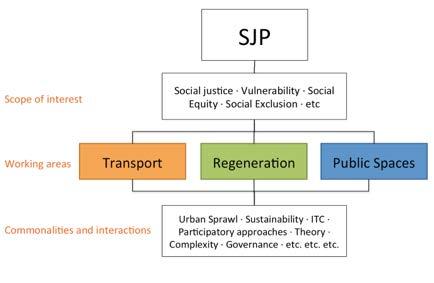
Supervised by Dr Elisabete Cidre, the Network is currently coordinated by Monica Lopez Franco with support from Beatriz Mella Lira and Karla Barrantes, who respectively lead on networking effort in their specialising fields of regeneration, transport and public spaces.
For more details of the Network, visit https://www.ucl.ac.uk/bartlett/people/bartlett-doctoral-networks/socially-justplanning-doctoral-network. You can also keep in touch with the Network through Facebook (https://www.facebook.com/ sociallyjustplanning/) or Twitter (@just_planning)
4
Lonely Planner Talks - 21 November 2017
Open to all audiences, the ‘Lonely Planner’ is a series of informal talks by BSP PhD students on their personal encounters with the culture, environment and planning issues of where they have lived or worked. Experiences from different parts of the world are brought to life through multi-media presentations, followed by discussions and a post-talk meal held at a restaurant linked to the featured culture wherever possible. The initiative was first brought forward by the BSP PhD community in 2009, and has run for 10 years in a row.
For this academic year, we were delighted to have three of our new MPhil/PhD candidates that have enrolled in September 2017 – Jingyi Zhu, Ruth Sepulveda Marquez, and Carina Schneider – sharing with us their international experiences from China, Chile, Germany, and the United Kingdom. This was the first year for a combined Lonely Planner session to be held where each presenter brought their local cuisine with them for a pot-luck dinner.
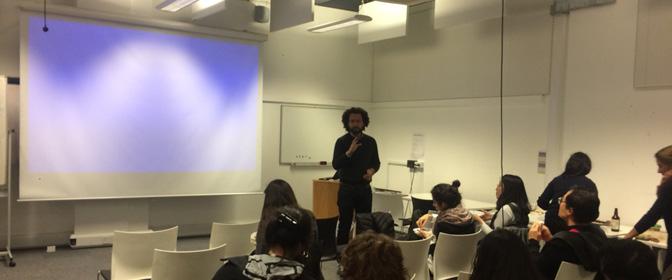
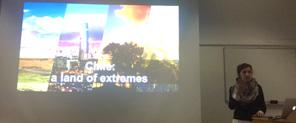


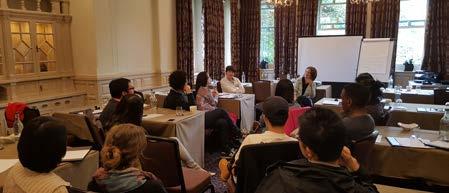
PhD Away Days - 9–10 June 2017
On 9 and 10 June 2017, about 20 BSP PhD students gathered in Woodlands Park Hotel in Cobham for their much anticipated annual PhD away days. The two-day retreat in the stately 19th century mansion consisted of a combination of outdoor team building activities and conversations on academic and professional development. The group was delightedly joined by Dr Lingqian Hu from University of Wisconsin-Milwaukee, who was then visiting the BSP, and two BSP alumni, Dr Sarah Cary from British Land, and Dr Ine Steenmans from UCL Department of Science, Technology, Engineering and Public Policy. They and our very own Richard Timmerman, a practising planner for years before returning to the BSP for his PhD studies, shared with the participating students their insights on how to plan and prepare for a successful career in the academia and beyond.
Postgraduate Research Day - 7 June 2017
The very first BSP Postgraduate Research Day was organised on 7 June 2017. Launched by Professor Yvonne Rydin, BSP Graduate Tutor for Research Students, the oneday event celebrates the work of BSP research students across all stages of progression, and further promotes dialogue and rapport across members of the school in their research endeavours. The daytime programme consisted of a series of presentations by students preparing for their PhD upgrade on their proposed research, with questions and feedback from peers and staff. Opened to the wider audience, the evening programme featured talks by students approaching completion of their doctoral studies on key findings from their inquiries, followed by discussion over refreshments.

Conference Contributions
Every year, PhD students in the BSP participate in academic conferences around the world, sharing their research on urban planning and related disciplines. Over the past year, many of them have attended and presented in meetings organised by American Association of Geographers (AAG), Association of European Schools of Planning (AESOP), Regional Studies Association (RSA), the UK-Ireland Planning Conference, as well as those organised and supported by the School and Bartlett faculty. Here is a summary of the presentations delivered by current and recently graduated members of the BSP PhD community in these events.
7
AAG 2017 & 2018
American Association of Geographers Annual Meeting
The annual meeting of AAG in the United States hosts thousands of geographers, GIS specialists, environmental scientists, and – not to be missed – planners from around the world sharing the very latest in research, policy, and applications with a spatial interest. The BSP PhD community have maintained a strong presence in both its 2017 meeting in Boston and 2018 meeting in New Orleans.
• AAG 2017 - 5 – 9 April 2017 | Boston, MA
Bong Kyung Jeon
Calvin King Lam Chung
Dimitris Panayotopoulos
Ilwon Seo
Rachna Gupta Lévêque
Siyao Liu
The role of local public intermediaries in the revival of the Daegu textile industry in Korea
Urban sustainability fix, city-regionalism, and China’s greenway boom
The morphology of urban voids: A metabolic approach to cohesion. The case of Eleonas in Athens
The urban dimension of technology adoption: Analysis of Patent Licensing in China
Governing for resilience: Responding to the uncertainties of urban densification
Neighbourhood diversification and variegated integration of migrants in urban Beijing
Stefania Fiorentino Makers, entrepreneurialism and urban renaissance
Zheng Wang
•
The multiple roles of the state in mega urban developments in China – Reflections from Shanghai Lingang
AAG 2018 - 10 – 14 April 2018 | New Orleans, LA
lwon Seo
Exploring the linkage of inward technology acquisition and regional innovative capacity
Joe Penny Discussant for the session ‘Reimagining the Local State: theoretical and empirical transitions in local government’
Stefania Fiorentino Urban creative labs sharing the new urban economics’ challenges. Co-working and coplanning the city of Rome
Tatiana Moreira De Souza
Urban development, small business communities, and the entrepreneurialisation of English local government
More on AAG: http://annualmeeting.aag.org/
AAG 2017 Annual Meeting programme: http://www.aag.org/galleries/conference-files/AAG_2017_Printed_Program__ FULL.pdf
AAG 2018 Annual Meeting programme: http://www.aag.org/galleries/conference-files/ AAG_2018AnnualMeetingProgram_Final.pdf
8
AESOP 2017 - 11 – 14 July 2017 | Lisbon, Portugal Association of European Schools of Planning Annual Congress
The AESOP Annual Congress 2017 was held in Lisbon under the theme ‘Spaces of Dialog For Places of Dignity: Fostering the European Dimension of Planning’. Members of the BSP PhD community contributed to this important forum of exchange in Europe on research, education and practice in planning through a range of presentations on their latest projects.
Alexandra Gomes Sensescapes as ‘brush strokes’ of an urban canvas: From soundscapes to a multi-sensory framework of analysis of urban space
Edward Jones Revealing local economies in suburban London: Developing effective methodologies to support planning policy
Gualtiero Bonvino Transit Oriented Development land policy for transit funding in times of austerity – The cases of Rome and Turin
João Ferreira Bento The impace of Europeanization processes on the development of National Architectural Policies in the EU
Katayoun Karampour Municipal funding tool and development process
Patricia Canelas Place-making with concentrated ownerships
Stefania Fiorentino Urban Renaissance and the New Economic challenges. Co-working and co-planning the city of Rome
Sonia Freire Trigo Urban public space as a common pool resource: Managing publicness through clubs
More on AESOP 2017: http://aesop2017.pt/ Conference programme: http://aesop2017.pt/images/Congresso/abstracts/Abstracts%20Book%20AESOP2017%20 FinalVersion.pdf
RSA Annual and Winter Conference 2017 Regional Studies Association
BSP PhD students have often participated in the programme of conferences run by the RSA throughout the year to disseminate their research on various pressing issues with balanced and sustainable regional development. In 2017, they presented their latest work in the association’s Annual Conference in Dublin as well as its Winter Conference in London.
• RSA Annual Conference - 4 – 7 June 2017 | Dublin, Ireland
Calvin King Lam
Chung Green infrastructure for China’s new urbanisation: A case study of greenway development in Maanshan
Martin Arias Bargaining development in an extractive GPN: Unpacking power asymetries in the Chilean copper mining case
Paul Hildreth Place, economy and manufacturing in the ‘city’ and the ‘region’
Stefania Fiorentino The Roman edition of the Maker Faire: An entrepreneurial or an institutional exposure?
Yingcheng Li Functional polycentricity and urban networks of knowledge collabation within and beyond the Yangtze River Delta Region in China
9
• RSA Winter Conference -
16 – 17 November 2017 | London, UK
Paul Hildreth What better provides an insight into place – firms or industrial clusters? A case study from the Mersey Dee cross-border economy
More on RSA Annual Conference 2017: http://www.regionalstudies.org/conferences/conference/rsa-dublin-2017 RSA Annual Conference 2017 Abstract Book: http://www.regionalstudies.org/uploads/documents/2017_Dublin_ Abstract_Book.pdf
More on RSA Winter Conference 2017: http://www.regionalstudies.org/conferences/conference/rsa-winter-2017
RSA Winter Conference 2017 Abstract Book: http://www.regionalstudies.org/uploads/documents/Abstract_Book.pdf
UK-Ireland Planning Research Conference 2017 11 – 13 September 2017 | Belfast, N. Ireland
The UK-Ireland Planning Research Conference 2017 was held at Queen’s University Belfast. The theme of the conference was ‘Transcending Boundaries: Global Flows and Spatial Justice’, which provided a particular opportunity to explore the ways in which planning, development and spatial analysis engages with the multi-level and complex flows of people, finance, environmental assets and other resources across space.
A number of BSP staff and PhD students participated in the pre-conference PhD workshop and presented at the event, including Chien-Ling Lo on ‘The role of regeneration policies on the economic sustainability of property market: A case study of Manchester’.
More on the conference: https://www.qub.ac.uk/sites/PRC2017/ Conference programme: https://www.qub.ac.uk/sites/PRC2017/files/Filetoupload,768775,en.pdf
2017 Bartlett Doctoral Conference on Sustainable Built Environment 23 June 2017 | London, UK
In the summer of 2017, Dr Alex Opoku of the Bartlett School of Construction & Project Management hosted the Bartlett Doctoral Conference 2017 on ‘SDG2030: Re-Engineering the Built Environment towards the Sustainable Development Goals’. The event sought to bring together PhD students at the Bartlett to share their research on shaping a sustainable built environment. The conference was opened to all UCL staff and students. Two of our BSP colleagues presented their work on sustainability under the following titles:
Alizara Juangbhanich
How and why do private developers engage in green building practice: The case of Bangkok, Thailand
Chien-Ling Lo The role of regeneration policies on the economic sustainability of property market: a case study of Manchester
More on the conference: https://www.ucl.ac.uk/bartlett/events/2017/jun/2017-bartlett-doctoral-conference
10
2017 International Conference on China Urban Development
5 – 6 May 2017 | London, UK
Organised by the China Planning Research Group (CPRG)
Co-chaired by Professor Fulong Wu and Dr Fangzhu Zhang, the BSP’s China Planning Research Group (CPRG) hosted the 2017 International Conference on China Urban Development, one of the largest of its kind organised outside China. The two-day conference attracted over 230 participants from 17 counties and regions to take part in debates spanning across a wide range of economic, social and environmental issues which define the trajectory of China’s urbanisation. Members of the BSP PhD community not only played an active role with the conference’s organisation, but also presented their research work under the following titles:
Calvin King Lam
Chung China’s greenway development: Where sustainability meets territoriality
Ilwon Seo Discussant for the session ‘Reimagining the Local State: theoretical and empirical transitions in local government’
Mengqiu Cao Transport, social justice and the capabilities approach: Empirical evidence from Beijing
Siyao Liu Migrant integration in Beijing -- Transition from migrants to residents
Tianke Zhu Understanding heterogeneous suburbs in China: A case study of Jiangning New Town
Tingting Lu
Beyond club theory: Rationalising new residential development in urban China University College
Weilong Zhang Urban village redevelopment in China: A case study of Guangzhou
Yingcheng Li Megalopolis unbound: Knowledge collaboration within and beyond the Yangtze River Delta Region in China
Yixiang Sun Institutional rescaling and community engagement in local state-led urban entrepreneurial place making: A case study of Qujiang New District in Xi’an, China
Yuqi Liu Growth of rural migrant enclaves in Guangzhou, China: Agency, informality and social mobility
The subjective wellbeing of migrants in Guangzhou, China: The impacts of the social and physical environment
Zheng Wang The multiple roles of the state in mega urban developments in China – Reflections from Lingang
For highlights of the conference: https://urban-china.org/urbanchina2017/ Conference programme: https://fulongwu.files.wordpress.com/2017/03/ucc-brochure4.pdf Conference abstracts and participants: https://fulongwu.files.wordpress.com/2017/04/ucc-abstracts.pdf
For updates of events and publications of CPRG: https://urban-china.org/ or subscribe to the group’s event mailing list at http://eepurl.com/-L-l9
Text and information drawn from AESOP, AAG, Queen’s University Belfast, RSA, CPRG and UCL online pages.
11
12
Recent Publications
Though busy doing their fieldwork and writing their theses, many in the BSP PhD Community have managed to contribute to scholarly and professional conversations on various issues of planning in the form of journal articles, book chapters and more.
For more details on the publications and works delivered by past and current members of the BSP PhD community, visit: https://www.ucl.ac.uk/bartlett/planning/people/ mphilphd-students
13
Canelas, P. (2018). Place-making and the London estates: Land ownership and the built environment. Journal of Urban Design. https://doi.org/10.1080/13574809.2018.1433531
Cao, M., Chen, C-L., Hickman, R. (2017). Transport emissions in Beijing: A scenario planning approach. Proceedings of the Institution of Civil Engineers - Transport, 170(2), 65–75.
Cao, M., Hickman, R. (2017). Car dependence and housing affordability: An emerging social deprivation issue in London. Urban Studies. https://doi.org/10.1177/0042098017712682
Chung, C. K. L., Zhang, F., & Wu, F. (2018). Negotiating green space with landed interests: The urban political ecology of greenway in the Pearl River Delta, China. Antipode. https://doi.org/10.1111/anti.12384
Gomes, A. (2018). A framework of analysis for urban sensory aesthetics: Looking at sensescapes as ‘brush strokes’ of an urban canvas. In K. E. Y. Low, & D. Kalekin-Fishman (Eds.), Senses in cities: Experiences of urban settings (pp. 137–153). Abingdon, Oxon: Routledge.
He, S., Chung, C. K. L., Bayrak, M. M., & Wang, W. (2018). Administrative boundary changes and regional inequality in provincial China. Applied Spatial Analysis and Policy, 11(1), 103–120.
Hickman, R., Cao, M., Mella-Lira, B., Fillone, A., & Biona, J. B. (2017). Understanding capabilities, functionings and travel in high and low income neighbourhoods in Manila. Social Inclusion, 5(4), 161–174.
Hincapié Triviño, M. (2018). Review of the book Attracting visitors to ancient neighbourhoods. Creation and management of the tourist-historic city of Plymouth, UK, by D. Barrera-Fernandez. Journal of Urban Design, 23(1), 161–162.
Jeon, B. K. & Phelps, N. A. (2018). From ugly ducklings to beautiful swans? The role of local public intermediaries in the revival of the Daegu textile industry. Geoforum, 90, 100-107.
Liu, Y., Zhang, F., Liu, Y., Li, Z., & Wu, F. (2017). The effect of neighbourhood social ties on migrants’ subjective wellbeing in Chinese cities. Habitat International, 66, 86–94.
Martín Sainz de los Terreros, J. (2018). Welcoming sound: The case of a noise complaint in the weekly assembly of el Campo de Cebada. Social Movement Studies. https://doi.org/10.1080/14742837.2018.1456328
Penny, J. (2017). Between coercion and consent: The politics of “cooperative governance” at a time of “austerity localism” in London. Urban Geography, 38(9), 1352–1373.
Penny, J. (2018). The ‘cooperative’ or ‘cop-out’ council? Urban politics at a time of austerity localism in London. In T. Enright, & U. Rossi (Eds.), The urban political: Ambivalent spaces of late neoliberalism (pp. 147–169). Cham, Switzerland: Palgrave Macmillan.
Raco, M., & Moreira de Souza, T. (2018). Urban development, small business communities and the entrepreneurialisation of English local government. Town Planning Review, 89(2), 145–165.
Zuñiga, M.; Barrantes, K., Brenes, M., Zamora, L., Nuñez, O., Sanchez, L., & Castillo, M. (2017). Observación directa de ambientes de aprendizaje en centros educativos costarricenses con distinto desempeño. [Classroom observation of learning environment in Costa Rican High Schools with different performance level] State of Education 2017. State of the Nation Program. San José, Costa Rica: CONARE. URL: http://estadonacion.or.cr/files/biblioteca_ virtual/educion/006/primaria-y secundaria/Zuniga_et_al.pdf
14
Individual Research Projects
Part 02

1. The contribution of social capital to the urban ecological resilience of self-help settlements. The case of Nezahualcoyotl, in the Metropolitan Area of Mexico City.
Alejandro Rivero Villar
Alejandro is a PhD candidate working under the supervision of Dr Catalina Turcu, and Dr Nikos Karadimitriou. Before starting his PhD, Alejandro worked in a variety of projects as a national consultant for the UN-Habitat office in Mexico, and as a public planner in the government of the Mexican state of Morelos. He has degrees in Urbanism from the National Autonomous University of Mexico (UNAM) and an MSc in Sustainable Urbanism from the Bartlett School of Planning. His research is sponsored by a doctoral grant of Mexico’s Science and Technology Council (CONACyT).
keywords: urban resilience, social capital, social networks, climate change, self-help settlements. email: alejandro.rivero.10@ucl.ac.uk
17
This research investigates the contribution that social networks –as agents of social capital– make to the urban resilience of self-help settlements (self-produced settlements by low-income groups that lack adequate infrastructures and services, often occupying areas of high risk) at the municipal scale. Selfhelp settlements are widely acknowledged as intrinsically vulnerable to the effects of climate change and are foreseen to be the predominant form of urbanisation in the Global South for the 21st century (UN-HABITAT, 2006). UN’s recent adoption of the ‘Sustainable Development Goals’ have placed the resilience of self-help settlements at the top of the global development agenda (UNGA, 2015).
Urban resilience is the continued adjustment of cities in an evolutionary fashion through their histories in face of environmental uncertainties and nonlinearities. Urban resilience depends on cities’ ability to transform in relation to those factors driving vulnerability and risk. It is acknowledged that societies have inherent capacities to overcome vulnerabilities, which are bound with their ability to act collectively. Thus, urban resilience scholars recognise the social dimension as central to explain how the inhabitants of a city can act collectively in identifying the sources of their vulnerability, and forward pertinent transformations to increase the resilience of the city.
Central to urban resilience’s social dimension is the concept of social capital, which refers to the social rules of trust and reciprocity embedded in social networks that enable them to act collectively. In the context of urban resilience, social capital can explain how social groups living in self-help settlements organise from the bottom to achieve community goals (e.g. accessing adequate services and infrastructures) and overcome the sources of their vulnerability.
This research takes as case study the social networks involved in the achievement of the collective goals that shape the urban resilience of Nezahualcóyotl (Neza), a self-help settlement located in the metropolitan area of Mexico City. Neza is considered a successful case of community-driven transformation in response to challenging environmental conditions. In its history, Neza faced multiple hazards, both environmental (the settlement is located on the drained bed of a salty lake, prone to flooding and sand storms) and institutional (at
the moment of its formation, the area lacked formal government structures, and secure land tenure).
The investigation uses mixed research methods. Social networks were identified and analysed using the theoretical and methodological procedures of Social Network Analysis (SNA), while research on the operation of the network relies on qualitative methods; through interviews conducted with 40 former members of the identified networks. The approach of the research is historical, given that the investigation tracked the evolution of the case-study, from its beginnings (1950s) to the moment in which the main sources of its vulnerability were finally tackled (1980s).
Some preliminary findings, coming from the analysis of the identified networks, show that the identified networks have two main characteristics:
• Social networks followed a trajectory of three stages: formation, peak, and dissolution. Social networks, in the formation stage, gather participants around a particular topic, which keeps growing and gaining momentum, until social networks reach a peak in size, which allows them to achieve the pursued collective goals. Once a goal is achieved, social networks tend to dissolve.
• Social networks evolved towards its formalisation. This means that even when the observed social networks had their origins as informal, local and bottom-up, all of them followed a trajectory in which government actors assumed the most relevant positions in the networks. Even when community actors are present during all the observed period, the number of community participants decreased as government actors concentrated the most relevant positions. This means that government actors assumed the control of Neza’s social networks, and suggests that the evolution of social networks went from governance to government. This may question the relevance of governance approaches for resilience, and recognise the importance of the role of the state in global south’s resilience agenda.
It is expected that results from the analysis of the interviews will add relevant insights on the operation of networks. And ultimately contribute to the understanding of the role of social networks as agents of social capital to the resilience of self-help settlements.
Photo: Google Maps 18
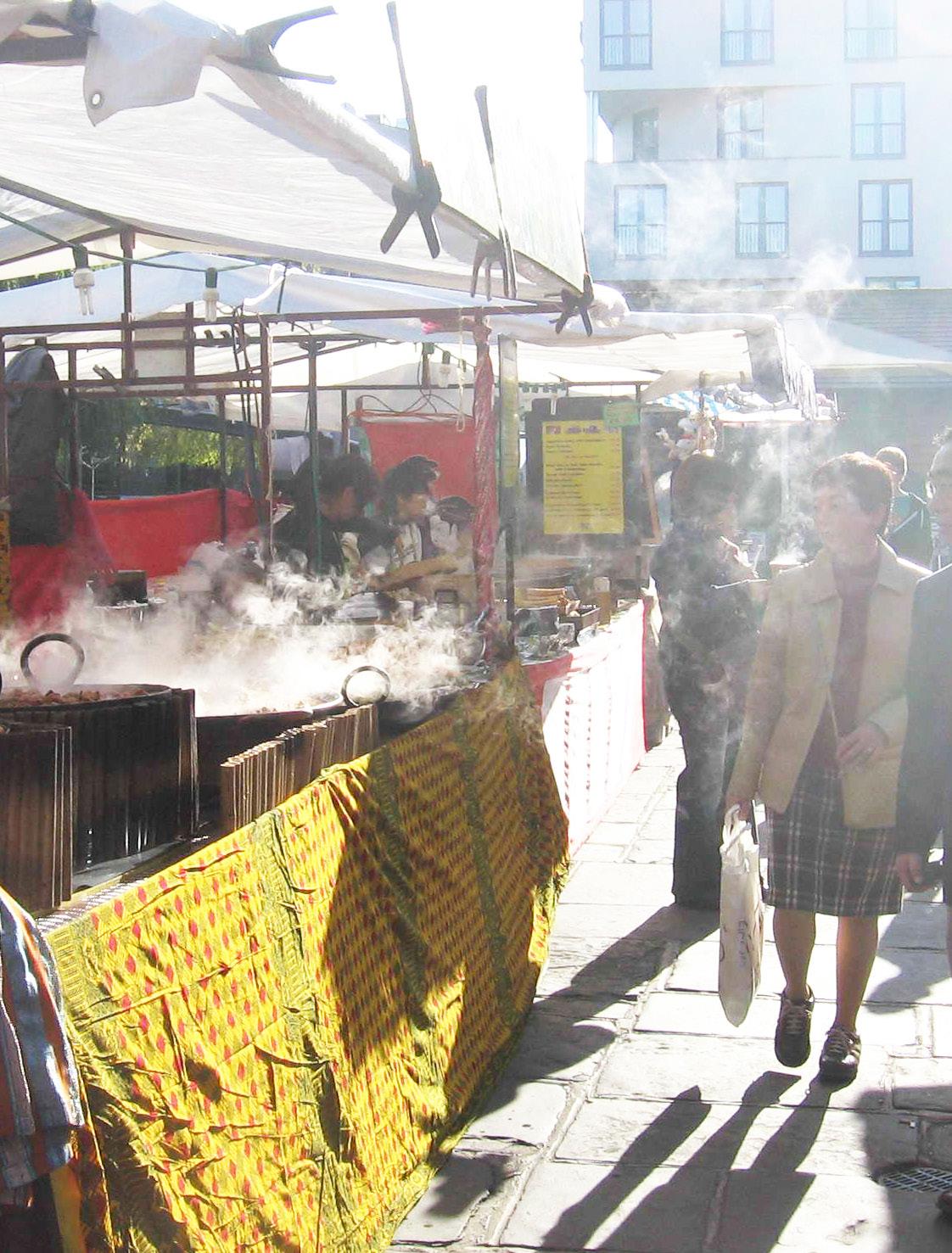
2. Invisible city: A framework to understand multi-sensory perception in urban public space.
Alexandra Gomes
Alexandra Gomes is currently finishing her PhD at UCL Bartlett School of Planning. Her thesis intends to go beyond the hegemony of vision in spatial planning and design, and contribute to the analysis of urban space through a comprehensive multisensory approach. She has also taught modules on sustainability, international planning, urban design and research and learning methods at the Bartlett School of Planning. Since 2014, she has been working as a Research Officer at LSE Cities where she is responsible for coordinating the centre’s spatial analysis across a range of projects.
keywords: multi-sensory, sensescapes, urban space, perception, framework.
email: alexandra.gomes@ucl.ac.uk
19
The study of senses in the urban realm has been strongly related to the study of the mechanism linking human-environment interaction. However, while authors in other disciplines such as environmental psychology, geography, architecture or history have been studying and discussing these questions, there is still the need for a better recognition and critical understanding of these issues in spatial planning and urban design.
Although the sensory question has been debated in urban studies since the 1960s, it has nevertheless been predominantly addressed through a mono-sensory and visual perspective. Therefore, this research intends to go beyond the hegemony of vision and to contribute to a qualitative analysis of urban space through a more comprehensive multi-sensory approach. On the one hand it looks into the urban realm and considers how different elements have been affecting the individual and the collective use of public space through the sensory regimes they can imply. On the other hand, it considers senses as mediators of human understanding and experiencing of space, highlighting the non-visual ‘sensescapes’ of the city with the intent of recognising how these affect the qualities of space.
Through the use and adaptation of more innovative urban research methods such as ‘sensetalks’ and ‘sensewalks’ (in-situ interviews) together with the exploration of ‘semantics’ and the language of sensory perception, this research will highlight the structural elements from the individuals’ experience of urban public space.
This investigation will start with the creation of a multisensory framework; going beyond the simplification of a mono-sensory analysis to a more comprehensive, descriptive (from the user perspective), and adaptable non-spatial structure that highlights key characteristics to explore when analysing the ‘sensescapes’ of any space. Supported by the multi-sensory framework it will then focus on different locations along a walking route in Bishopsgate London to explore the elements or stimuli perceived by interviewees and their qualitative characteristics, patterns, and relations. This research will then end with a more in-depth and spatial analysis of three specific locations within the case study area, and an exploration of urban realm characteristics that
have promoted the main differences in spatial qualities of those spaces: positive, negative and neutral.
While the complexity of the urban as an object makes it difficult to control variables in order to achieve the full understanding of actions and consequences, this research is nevertheless a qualitative attempt to explore possible relations between elements and individuals in the urban realm through the analysis of the content and language of street users, aiming to provide urban planners with better tools to design or redesign urban spaces. The main proposition is that a multi-sensory approach to spatial planning and urban design is capable of offering a broader understanding of space, describing its character and atmosphere; it also contributes to a more sensuously fitting new way of designing space while strengthening the identity of a place.
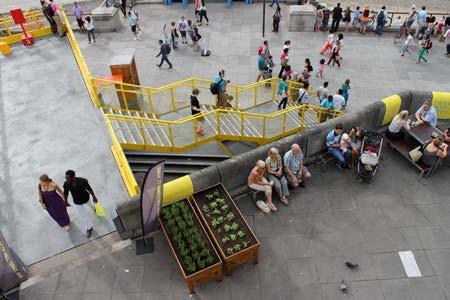
Photos:
Gomes 20
Alexandra

3. How and why do private developers engage in green building practice? The case of Bangkok, Thailand.
Alizara Juangbhanich
Alizara (Lisa) is a PhD candidate at the Bartlett School of Planning under the supervision of Dr Catalina Turcu and Professor Yvonne Rydin. Holding a background degree in architecture (Faculty of Architecture, Chulalongkorn University) and MSc in Sustainable Urbanism (Bartlett School of Planning, UCL), her interest in sustainability for the built environment ranges from green building design and practice to research in sustainable urban planning and development. Particular research interest includes exploring proenvironmental behaviour within the context of developing cities which her master’s dissertation (Exploring Behavioural Change in Car-dependency) and current PhD seek to contribute.
keywords: organisational behaviour, developer behaviour, corporate environmentalism, green building, Bangkok.
email: a.juangbhanich.11@ucl.ac.uk
21
Buildings consume up to 40 percent of global energy and account for one third of energy-related GHG emissions (UNEP, 2014). Sustainable building design and construction has been increasingly adopted as a means to alleviate growing environmental concerns with particular emphasis on green building practice. Despite the growing awareness and rapid increase in number of projects throughout the developed world, integration of green building practice in developing cities in Southeast Asia remain slow (Shafii, Ali, & Othman, 2006). Barriers in green building practice are often referred to as financial, technical, institutional or marketrelated; with repeated identification of cost premiums, lack of expertise, technology, government incentives, market demand as key concerns (see BCI Asia, 2014; Samari, Ghodrati, Esmaeilifar, Olfat, & Shafiei, 2013).
This study contends that, particularly in the context of developing cities, there is limited understanding of the mechanisms behind the behaviour of developers and their responses to green building practice that is found in existing literature. Lack of implementation and effort in green building practice are often addressed as a result of economic and technological impracticalities that limit the viability of a green building project. Academic studies and market research that sought to investigate corporate responses to green building practice have conclusively identified economic, technological, social, and political factors within the external context as key barriers and drivers of green building projects. This is to say that conditions in the contextual environment are the main – or sole – causes that constrain green building efforts. We argue that this belief is an oversimplification of the factors involved therein; one that is derived from a business-orientated perspective that prioritises the focus on financial costs and returns. We propose that developer response to green building practice is far more complex than the amalgamation of contextual factors.
Developers – as organisations – are susceptible to the influence of organisational and psychological factors that lie beyond issues of practicality (see Hoffman & Bazerman, 2005; Hoffman & Henn, 2008). Majority of the research found in green building literature ceases to explore developer behaviour under an organisational behaviour perspective and pays limited attention to the extent in which organisational structure, culture,
and ‘softer’ psychological constructs may interactively shape decisions to engage in green building practice. Consequently, organisational and socio-psychological factors in green building practice may have been overlooked. This study seeks to readdress the understanding of factors involved in developer decisions to undertake green building practice through a theoretical framework that integrates organisational behaviour theory with the literature on property development. It identifies that developer decisions to adopt green building practice are shaped by the interplay of ‘hard’ pragmatic factors found in the external environmental context and ‘soft’ psychological factors embedded within the organisation and its members, thereby hypothesising that factors rooted in the culture and cognitive constraints of top managers will play an equal – or even larger – role in shaping developer decisions to undertake green building practice.
This study therefore attempts to explore the question ‘how and why do private developers engage in green building practice?’ through a qualitative approach under an organisational behavioural framework to generate a more holistic understanding of the factors that shape responses to green building practice. It focuses on uncovering the significance that organisational and psychological constructs may have on decisions to undertake green building projects. Government policies have dedicated large amount of resources to facilitate and promote green building practice through financial incentives and subsidies. We argue that this is a topdown approach to encourage sustainable building practice; and that it may be as equally important to attend to behavioural aspects with an aim to foster efforts from a more bottom-up approach. The research draws on the case study of Bangkok to contribute a better understanding to private developers’ engagement with green building practice in the context of developing cities where sustainable urbanisation is imperative yet limitedly practiced and researched.
22
Photo: Alizara Juangbhanich

4. The urban design principles for Southeast Asian cities: An approach from the metaphor of
urban footprints
Anon Chaimanee
Anon is a first-year PhD student at the Bartlett school of Planning under the supervision of Dr Filipa Wunderlich and Dr Michael Short. His thesis intends to develop a set of urban design principles/approaches for Southeast Asian cities that is attuned to cultural background of locals, including historical background, socio-cultural formation and daily life practices. Previously, Anon has worked as a lecturer and researcher at Chiangmai University, Thailand, where he was researching and gaining knowledge in urban morphology, the image of the city and place identity of Southeast Asian cities. Anon has a degree in Architecture from Silpakorn University (Thailand) and an MA in Urban Design from Cardiff University.
keywords: urban design principles, Southeast Asia, urban footprints, urban complexity
email: a.chaimanee.16@ucl.ac.uk
23
Southeast Asian cities have a unique urban environment that expresses through the complexity in urban places in various dimensions, such as the informality and intensity on the streetscape, the reflections of religious beliefs on the social life patterns, and the socio-cultural practices of people from multicultural background (see Chifos & Yabes, 2000; McGee & Yeung, 1977; Oranratmanee & Sachakul, 2014). Within this context, people know, feel and define the urban place through multi-dimensional devices, such as the interactions between people through architecture and neighbourhoods, daily activities, socio-cultural events, clothing, arts, and so on (Askew, 2002; Sopranzetti, 2009).
As mentioned, obviously, the conceptual ideas for the image of the city and urban environment in Southeast Asia are different to the general urban design perspective. From the lens of Western urban design theories, people perceive a place by the physical settings and activities provided by urban practitioners (Canter, 1977; Lynch 1960, 1981; Relph, 1976). However, in Southeast Asia, a place is defined by the variety of means that local inhabitants give to their surroundings (see Forbes, 1996; Rigg, 1991). By this contrast, Southeast Asian cities have been facing visible conflicts between urban design practices and actualities of the urban context. The mainstream of urban design practices mainly concerned city as physical attributes, functionality and spatial uses, but lacks considerations of urbanism, sociocultural formation, values and meaning of the place. Extant analytical works, with their focus on physical elements, are not responsive to the societal and cultural complexities in the Southeast Asian urban environment.
By addressing these gaps, this research proposes a theoretical framework to study Southeast Asian cities’ urban environment from a comprehensive view through the framework of social, spatial, cultural and political aspects, exploring how these urban characteristics affect the urban environment and the image of Southeast Asian cities. In this research, ‘urban footprints’ is selected as the theoretical scope for interpreting the cities, because this urban metaphor resonates with urban notions in Southeast Asia and can facilitate a comprehensive reading of its cities based on two conceptual ideas. First, a city is the contained space of imprints from the
past, and it is full of practices and thoughts of histories travelling (Massey, 1999). Over the years, the city becomes memorable (Amin & Thrift, 2002). Second, a narrative of the city has been socio-culturally constructed, and it expresses itself through various factors including social, spatial, political and cultural aspects rather than only the physical characteristic (see Hayden, 1997; Massey, 1999).
Given the foregoing context, the study starts with determining the theoretical tools which correspond with the conceptual ideas of urban footprints to read the uniqueness of cities in a holistic approach, considering a city beyond its physical environment to acknowledge its socio-cultural formation and expressions in the urban places. The study then uncovers the uniqueness of urban environment in Southeast Asian cities through their urban history, to explore the evidence of social, spatial, cultural and political events that shaped the Southeast Asian cities in a unique way, and to identify their current environment. After that, the study involves selecting site studies from the ‘city model’ which has been studied from the 1960s by Southeast Asian scholars (see Forbes, 1997; Hall, 1955; McGee, 1967, Ricklefes et al., 2010; Rigg, 1991; Rimmer & Dick, 2009), exploring the range of prevailing urban characteristics and mapping them to the site studies. The fieldwork study will focus on everyday life practices in order to examine how unique feature of urban environment affect the image of today cities.
This research will finalise a study model that is sensitive to an urban environment with multi-dimensional complexity. It will provide a better understanding of the urban environment in Southeast Asian cities in a different perspective which, contrasting the usual urban design approach, focuses on the socio-cultural formation, meaning and expression that people give to the cities.
24
Photo: Anon Chaimanee
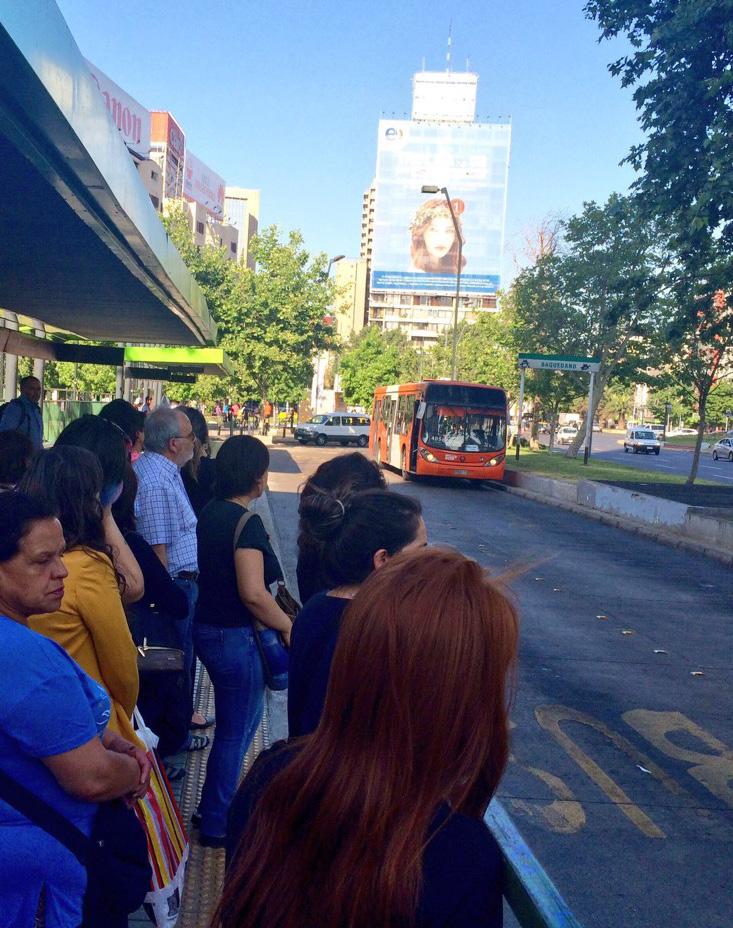
5. Urban and social equity impacts from transport: Evidence and approaches from Santiago de Chile.
Beatriz Mella Lira
Beatriz is a Chilean architect with a master’s degree in urban development from P. Universidad Catolica de Chile. She is currently pursuing her PhD under the supervision of Dr Robin Hickman. Her primary research interests are in transport planning, mobility and social equity in transportation. Beatriz has recently worked as a Visiting Lecturer at the University of Westminster and a research assistant at UCL for the British Council Newton Fund research project ‘Sustainable Cities and Resilient Transport’. Earlier in Chile, she performed as a lecturer, researcher and private consultant, leading projects related to urban infrastructure, participatory urban design and sustainable development.
keywords: transport planning, capability approach, social equity, transport project assessment, social inclusion. email: beatriz.lira.14@ucl.ac.uk
25
This research focuses on the relationship between transportation projects and social equity through a critical appraisal of the factors that allow these projects to achieve better standards of social equity. The central questions that guide the research is what are the factors that reduce the gaps of social inequality, and to what extent these factors can be incorporated into transport appraisal. The research has a strong social component, mainly structured around social and planning concepts, with specific engagement with the Capability Approach to explore transport oriented initiatives and for appraising transport projects in the context of Santiago de Chile.
Social impact assessment in transport has usually been based on the understanding of changes in physical accessibility, casualties and security. However, more complex factors for measuring the quality of trips have not been fully accomplished yet. These factors include physical and mental integrity, perceptions on wellbeing, perceptions of safety, levels of comfort, decisions over activities and use of technologies, among others. In this regard, Capability Approach (Sen, 1985; 2009; Nussbaum, 2011) has shown the potential to offer a much wider perspective on the social dimensions of equity. This approach is based not only on people’s possessions or access to resources but also the opportunities and freedoms that people have (Anand, Hunter & Smith, 2005; Beyazit, 2011; Kronlid, 2008). Nevertheless, it remains as an open question whether the use of a quantitative approach (e.g. surveys and questionnaires) based on indicators is a valid method to ascertain capabilities and opportunities of people accomplished through transport. The aim of the research is to suggest the use of new and complementary methods (for example, the utilisation of a Transport Capability Survey) as a valid starting point for a more comprehensive transport social assessment, which allows the exploration of more complex and increasingly necessary factors to improve transport user’s long-term quality of living.
The central element of the empirical research was the design, piloting and application of a survey to private and public transport users. This method has also been complemented with a qualitative analysis of indepth interviews with policy makers, local and regional authorities, and different types of users representing
various transport profiles. The survey reflects the applicability of some of the variables defined in the list of Central Human Capabilities shaped by Nussbaum and based on the study of the Capability Approach. It is suggested that, in addition to the built environment and socio-cultural factors, those factors will impact user’s propensity for taking certain transport modes. The application of the tool was made in a range of residential and destination areas to capture the diverse levels of income and accessibility to transport infrastructures of people in Santiago.
Santiago as a case study was selected because the current barriers of segregation and social inequality seem to be accentuated with long daily communing, affecting a significant portion of public transport users. This group of users coincides with the most vulnerable sector of the population in the city, who are not only disadvantaged in income terms but also more significantly impaired by barriers related to education levels, housing affordability and access to job opportunities in the city. Although Santiago’s transport issues in recent years have been placed at the forefront of public discussion, the importance of social equity in transport has not been raised yet as a priority. Most importantly, transport planning is not yet considered as an essential element able to promote fairer societies.
The research is expected to develop a suitable approach for improving the understanding of how social equity might be measured in its relation to transport. This approach will consider evidence from the users’ perspective, including their perceived levels of access to relevant daily activities; their expectations and satisfactions regarding their daily trips; and the assessment of the opportunities achieved as a result of their current accessibility. The results will also suggest the possibility of rolling out this approach as a complementary method for appraising transport projects.
26
Photo: Beatriz Mella Lira
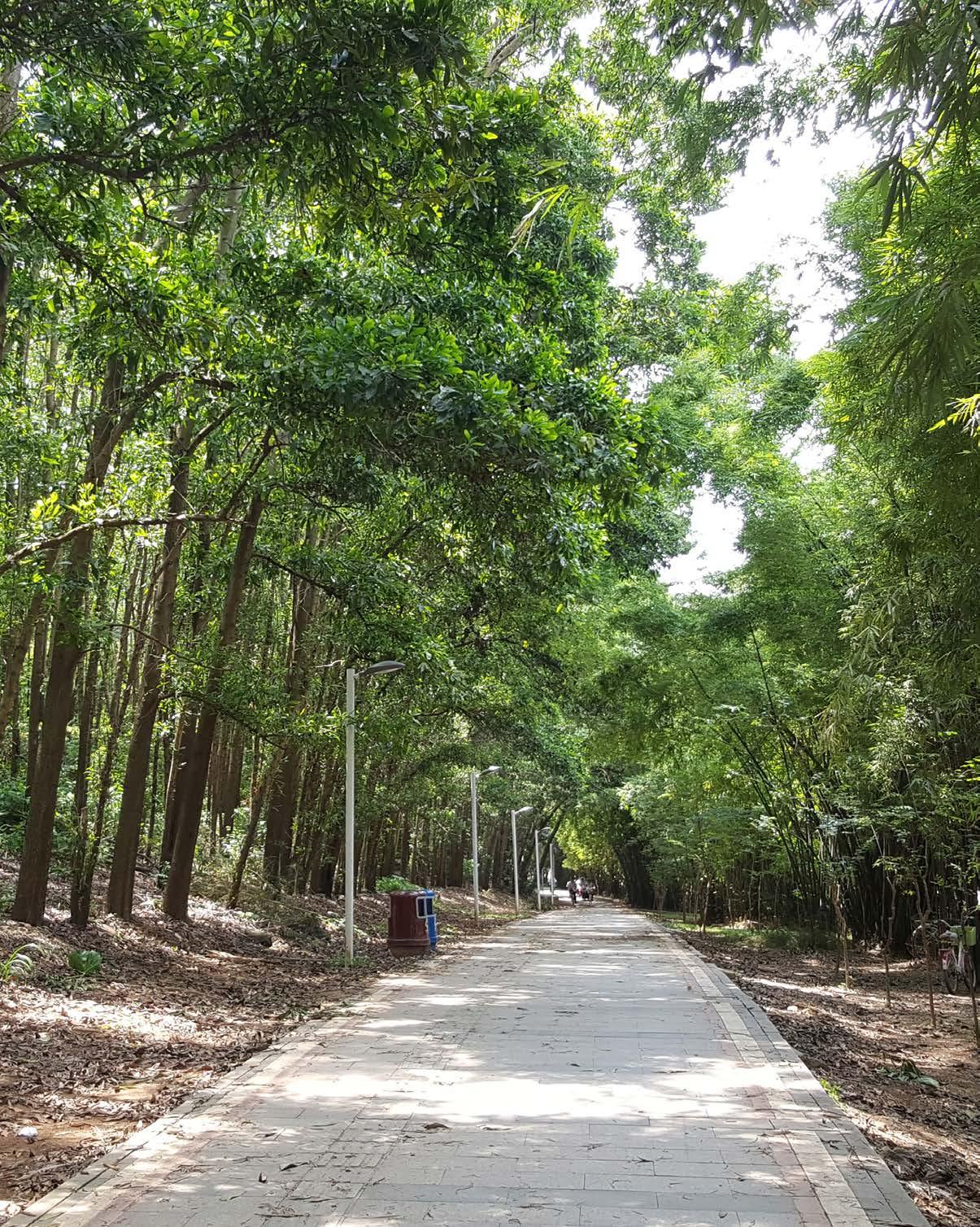
6. Searching for an urban sustainability fix in China: A case study of the Pearl River Delta Greenway Project.
Calvin King Lam Chung
Calvin is a PhD candidate at the Bartlett School of Planning under the supervision of Professor Fulong Wu and Dr Fangzhu Zhang. His current study is supported by a Sir Edward Youde Memorial Fellowship for Overseas Studies from the Hong Kong government, a UCL Overseas Research Scholarship, and a Hong Kong Research Grant from the Royal Geographical Society. His research focuses on the political economy and political ecology of urban and regional planning in China. A winner of the 2014 best paper prize of International Development Planning Review, Calvin has also published in Antipode, Cities, and Environment and Planning C. keywords: urban sustainability fix, eco-state restructuring, urbanisation, land development, greenway email: calvin.chung.14@ucl.ac.uk
27
In China, environmental demands are re-contouring the landscape of urban governance. The narrowly economic form of entrepreneurialism enshrined by many municipal governments is under attack from multiple fronts. Within the state, the central government is increasingly concerned about reducing the environmental costs of growth. Government officials have launched a series of national policies and regulations to press for eco-friendly urbanization (Chang, Leitner, & Sheppard, 2016). Outside the state, pressure is also mounting. A greener, cleaner city is needed not only for global interurban competition (Hodson & Marvin, 2007), but also in response to an upsurge of environmental activism (Economy, 2013). However, the implications of these new trends on China’s urban governance remain largely uncharted waters. Insofar as recent inquiries on flagship eco-city developments (Caprotti, 2014; Pow & Neo, 2013; Wu, 2012) shed important light on the motivations of Chinese cities to incorporate environmental goals into their development agenda, much more work is still required to capture and decipher the specific ways in which the structural intricacies of China’s urban governance have interacted with the emerging environmental requirements.
Addressing this lacuna, this research examines the development thus far of the nationally acclaimed Pearl River Delta Greenway Project (PRDGP), launched in 2010 in the Pearl River Delta (PRD) region in Guangdong province, to determine how political-economic contingencies have governed the incorporation of environmental goals into the governance of Chinese cities. This empirical focus rests on the premise that the conception and implementation of the project, as an extensive environmental intervention producing a staggering 8,909 km of greenways across the PRD as of 2015, necessarily interact with various interests and institutions of urban governance. Investigation for this research was undertaken between 2013 and 2016 in five of the nine PRD cities, including Guangzhou, Shenzhen, Zhuhai, Dongguan and Huizhou. It involved interviewing over 50 people within and outside the state who have either directly involved in or well informed about the project, reviewing pertinent government documents, media coverage and academic publications, and making observations along various sections of greenways.
This research reveals that the PRDGP represents what While, Jonas and Gibbs (2004) conceptualised as an urban sustainability fix with a ‘win-win’ mentality. Initiated by planners as an economically more attuned way to promote conservation in the PRD cities, the project has evolved since its implementation into an instrument to strategise the environment for economic benefits. One can observe three characteristic aspects of China’s emerging politics of urban sustainability from how the project has come to the ground. First, the negotiation of urban economic and environmental interests is historically embedded in a contentious process of ‘eco-state restructuring’ (While, Jonas, & Gibbs, 2010). Given the failure of two regional plans to appeal to scientific rationality for better municipal environmental care, the PRDGP was introduced through a combination of economically more persuasive discourses and politically more coercive implementation schemes. Second, ingrained economic and regulatory interests on land shape the search for an urban sustainability fix. While greenway was favoured as a remedy of green space shortage that does not consume land development quota of the PRD cities, its development has been shaped by issues on securing land use rights from rural collectives and resource management authorities, and engaging real estate developers for material support. Third, the promotion of urban sustainability is as much about the city as the countryside. Advancing the recreational frontier of the PRD’s urban dwellers into their rural hinterlands, greenways have received increasing emphasis as a catalyst of rural tourism development, leading to rural urbanisation in economic, institutional, physical as well as sociocultural terms. Meanwhile, given the symbolic and material struggles interlacing these findings, the research further proposes that an urban sustainability fix is best analysed as a threefold constellation of discursive, spatial and institutional interventions to illuminate the diverse means through which urban economyenvironment conflicts are mediated.
28
Photo: Calvin King Lam Chung
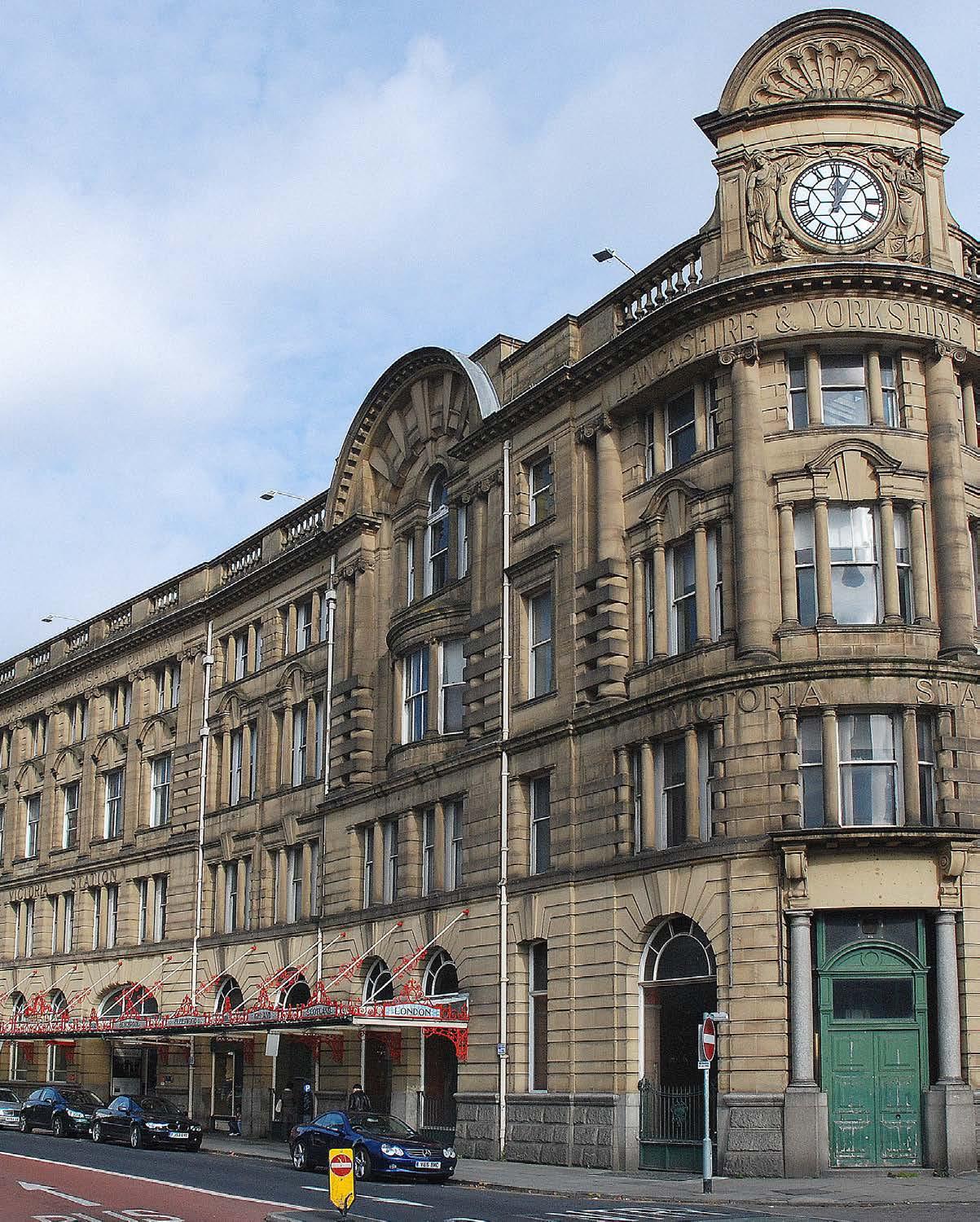
7. Is English devolution fit for purpose?
David Kingman
David Kingman is a PhD researcher at the Bartlett School of Planning who is investigating the impact of the current wave of political devolution to city regions in England on urban governance and spatial inequalities. He has previously earned a BA in Geography and an MSc in Spatial Planning from UCL, and combines his current studies with his work as a researcher for the Intergenerational Foundation, a non-profit think tank which investigates socio-economic problems affecting young people in Britain.
keywords: devolution, development, rebalancing, city-regions, North-South divide.
email: david.kingman.10@ucl.ac.uk
29
Since 2010, the UK’s Conservative-led governments have implemented a wide range of political reforms which can be broadly grouped together under the rubric of decentralisation. The latest iteration of this evolving and uneven process has involved the devolution of bespoke sets of new powers to city-regions through negotiated settlements (‘Devolution Deals’) between the leaders of city-regions and the central government.
This project seeks to investigate:
a) what this process of decentralisation actually involves in practical terms and how it has evolved over time;
b) what its main aims and motivations are, and;
c) how likely it is to achieve them.
This project begins by placing the devolution of power within England into its long-term context, examining the historical development of local welfare states under powerful city governments in industrial cities such as Manchester and Birmingham during the era of Victorian ‘municipal socialism’. It then goes on to chart how English cities were largely denuded of power during the post-war period; firstly by the attempt to create a centralized ‘cradle-to-grave’ welfare state which sought to standardize public services across the country, and then subsequently by the Thatcher government’s attempts to minimize urban-led resistance to its neoliberal agenda of state restructuring. Since 2010, Britain’s Conservativeled governments have all pledged to reverse this process of political centralisation by returning powers over a number of policy areas to local areas (in the form of political institutions which operate at a variety of different spatial scales). It is observed that two distinct forms of devolution have been pursued by the Conservatives as part of this agenda: the devolution of powers to people, through the empowerment of civil society groups such as charities and social enterprises, and the devolution of power to places through the creation of new local governance structures such as city regions and metro mayors. The devolution agenda has proved controversial, with many authors viewing devolution as a smokescreen for shrinking the state (‘austerity localism’), and others criticizing the lack of democratic participation which ordinary citizens have been offered in a process which is ostensibly about making local governance more democratic.
Initial research suggests that the main overall aims of the devolution agenda are to ‘spatially rebalance’ the UK economy away from its perceived over-reliance on London and the South East, and to counteract the perceived democratic illegitimacy of English local politics. This makes the project timely, as renewed attention is being focused upon the problem of spatially uneven development in advanced Western economies following the electoral success of Donald Trump in America and the Brexit campaign in the UK; the success of both having been attributed in part to the growth of regional inequalities. The theoretical inspiration for the current wave of English devolution appears to be a particular interpretation of ideas provided by Paul Krugman’s New Economic Geography (1991) and the New Urban Economics, which have been used to argue that cities require strong political leadership to reap the benefits of increasing returns to agglomeration. The working hypothesis of this project is that decentralisation is being designed and implemented by central government in a way that ignores the wishes of local electorates and pays insufficient attention to the place-specific factors which shape the local economy.
These issues will be investigated by applying mixed methods research to one of the city-regions which is receiving new devolved powers in order to investigate whether meaningful devolution is taking place and whether it is likely to result in reduced spatial inequalities. The goal of this project is to produce practical policy recommendations on how implementation of the decentralisation agenda could be improved in the future.
30
Photo: David Kingman
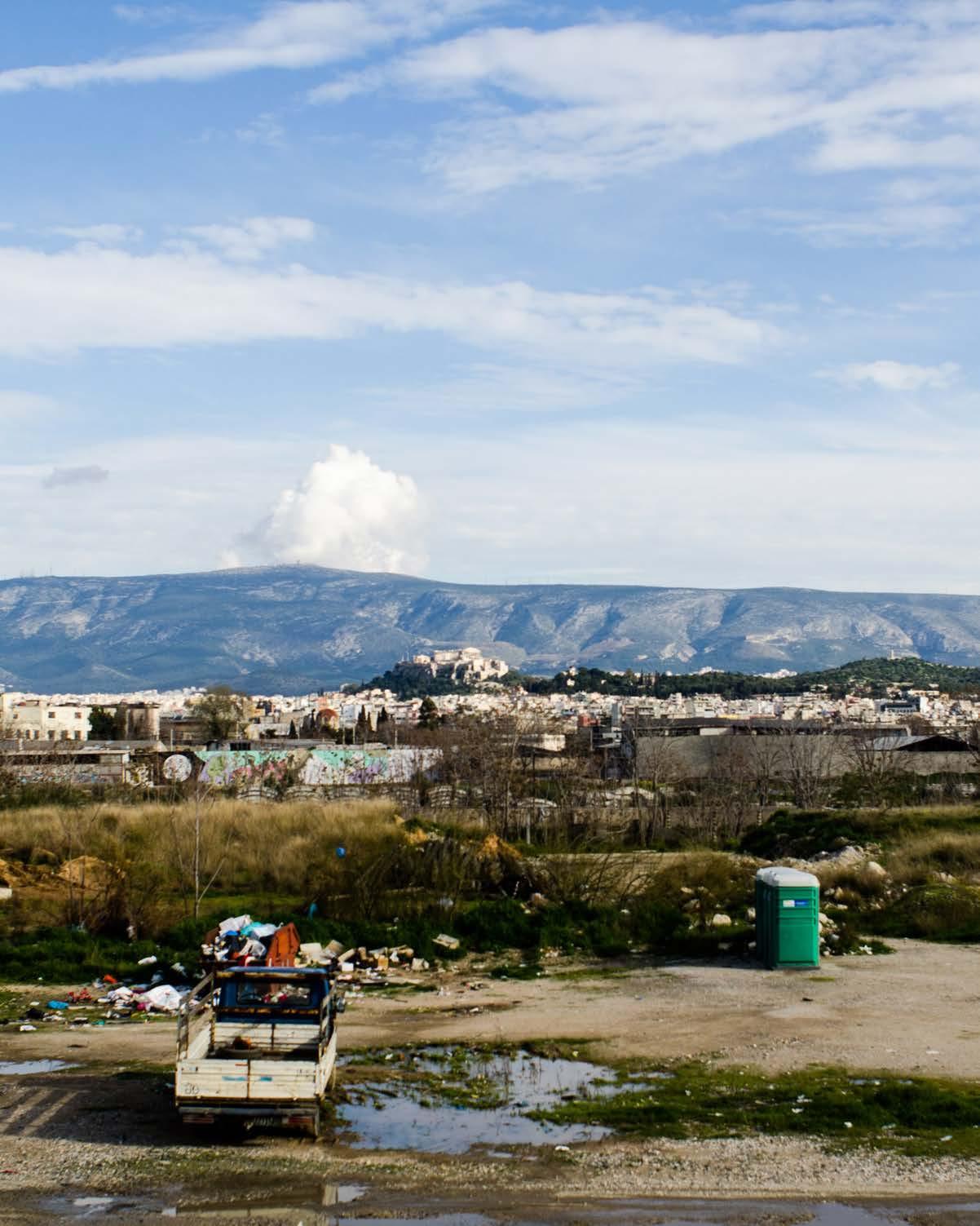
8. The morphology of urban voids: A metabolic approach to cohesion. The case of Eleonas in Athens.
Dimitris Panayotopoulos
Dimitris is a PhD student supervised by Dr Susan Moore and Dr Camillo Boano, investigating notions of ‘void’ and ‘emptiness’ in the urban setting. Trained in architecture, he finished his MA-Arch in 2015 at the Université Libre de Bruxelles (ULB) with High Distinction where he later worked in research for a year before embarking on his PhD in October 2016. He has also worked in an array of architecture offices in Brussels, Tokyo and Sendai and has done research through workshops and projects in countries around the world including Belgium, Greece, The Netherlands, India, Taiwan, China and Japan.
keywords: urban voids, morphology, metabolism, cohesion.
email: d.panayotopoulos.16@ucl.ac.uk
31
The urban form, guided among others by political decisions, historical events, and financial interests, is often shaped exclusively following very specific land-use considerations. Eventually this type of urbanisation spurs deep disparities between built and vacant zones, divides the population based on socioeconomic and infrastructural assets (Oswalt, Baccini, & Michaeli, 2003) and very often generates inhuman, redundant and marginal spaces, that are ‘urban voids’ (Komninos, 2013).
The ‘urban void’ is the central theme of this research. It is seen on one hand as a conceptual construct conveying a notion of emptiness and on the other as a physical entity revealing the absence of specific urban elements. Using the abstract notion of the ‘void’ to characterise urban situations permits a wider range of ‘lacking spaces’ (such as inactive, unbuilt, unplanned, informal or derelict areas etc.) to be included into a singular analytical framework. This research looks at the phenomena of ‘emptiness’ and exclusion from an ontological, epistemological and phenomenological standpoint to debate the meaning of the term when used for urban territories, and to investigate the relation of the ‘void’ with the city and its citizens.
Discontinuities and ‘voids’ within the urban and social spheres are at the heart of the post-industrial city where the significance of the historical urban space is replaced with inhuman and ephemeral ‘non-places’ in and around spaces of modern activity (Foucault, 1984; De Certeau, 1990; Augé, 1992; Pope, 1997). In the new ‘connected city’ driven by the optimisation of flows and commodities, a new ‘territorial unevenness’ emerges between the connected valuable spaces and the less-favoured switched-off territories of today’s highly fragmented urbanisation (Castells, 2010; Secchi & Vigano, 2011; Graham & McFarlane, 2014). Beyond the premium spaces, disfigured ones tend to become invisible, eventually becoming spatial gaps (Boyer, 1992, 1995) that deepen social and economic marginalisation (Mingione, 1995; Law & Wolch, 1993; Doron 2000).
Reconceptualising the ‘urban void’ can play a role in exploring the agency of urban spaces and their implication in the division of the social and urban spheres. In line with several authors, this research argues that urban voids
are part of as well as the result of the broader spatial, physical, political and social systems (Doron, 2000; Graham & Martin, 2001; Talocci, 2011; Foo, Martin, Wool, & Polsky, 2014).
But what is the ‘void’ in an urban context? How does it manifest in the urban context? To what extent is it possible to promote a more cohesive urban environment taking into account its form, the underlying urban flows, and its social configurations? This research will look into a single area in Athens, Greece, called Eleonas in order to answer these questions. Strategically located between the city centre and the city’s port, the fast-decaying industrial area ‘Eleonas’ has been chosen as a case study for its long historical significance in the city’s exponential growth in the 20th century (Biris, 1996), the successive stages of growth and decline it went through from antiquity, and how these shaped the incongruous landscape it is today. It will be analysed through attentive analysis of its morphology, metabolism and socio-economic configurations which will attempt to present the ‘urban void’ not as a standalone ‘other’ entity, but rather as an inherent part of urban space and the inhibitor of diverse and complex urban conditions.
Dissecting urban voids in morphological, metabolic and social components allows to consider them not only as physical enclaves but also as areas bound by constrains of urban flows and imbued with different perceptions. This conceptualisation gives the opportunity to explore how ‘voids’ are created, appropriated and possibly contested. This research aims to delve deeper into these concepts and unravel the intricate ways placemaking, spatial configurations and social dynamics are interwoven.

Photos: Dimitris Panayotopoulos 32
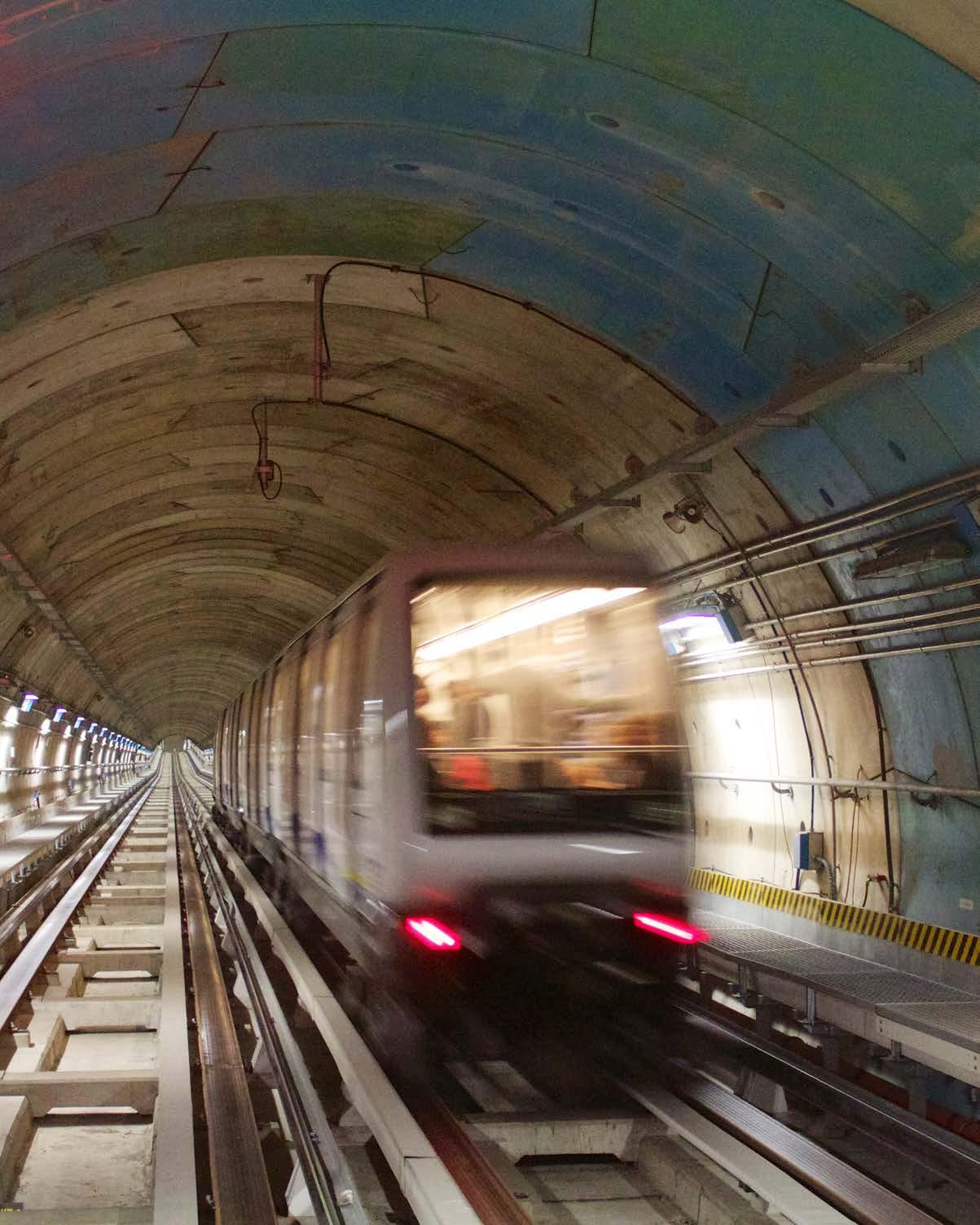
9. Transit oriented development land policy for public transport funding
Gualitero Bonvino
Gualtiero is a qualified architect and town planner, with 16 years’ experience in the private sector in Italy as researcher and consultant in planning and property development related matters. In 2009 he moved to London to start a PhD at the Bartlett School of Planning under the supervision of Professor Peter Hall and Professor Stephen Marshall. Since 2014 he is completing his dissertation under the supervision of Professor Yvonne Rydin, while working as freelance consultant, teaching assistant at BSP and lecturer at the South Bank University. His research interests revolve around land use and transport integration, property development and land policy.
keywords: transit oriented development, land policy, land value capture, public transport funding.
email: gualtiero.bonvino.09@ucl.ac.uk
33
The purpose of the research is to investigate new approaches to fund public transport infrastructures using value capture mechanisms. Particularly, it aims to explore development-based value capture approaches in joint infrastructure and (transit oriented) property development projects. Hence, the idea of Transit Oriented Development (TOD) and land policy are central to the research.
The TOD concept entails a tight integration of land use and public transport, and is considered a powerful policy to produce a more sustainable urban form. It has been generally defined as ‘a compact, mixed-use community, centred around a transit station that, by design, invites residents, workers, and shoppers to drive their cars less and ride mass transit more’ (Bernick & Cervero, 1997, p. 5). However, the funding of the basic component of this policy, usually a rail based public transport infrastructure, is often out of reach because of shrinking public finances. This is in contrast with the value created, in terms of land value, by the process of property development intensification around stations that this policy involves. Different families of ‘macro, direct and indirect’ land policy mechanisms have been invented to recapture this value (Alterman 2012, p. 762), and they are considered promising in TOD areas for the process of land capitalisation of accessibility benefits (Suzuki et al., 2015). However, they present important governance capability challenges and usually can cover only a small portion of the infrastructure cost. An exception is when extensive public land ownership is involved, which would qualify as a ‘macro’ value capture approach. Nevertheless, this is a rare circumstance since land-banking is no longer in fashion in most western countries. In the case of private land ownership, ‘direct’ value capture tools, which involve different forms of taxations, are available in many countries. These tools are often used leveraging on the compelling rationale of taxing the betterment created by the increased accessibility attributable to the new transport infrastructure (Medda, 2012).
By contrast, development-based approaches, which involve land readjustment (der Krabben & Needham, 2008) or ‘indirect’ value capture tools, where the local authority could negotiate density bonusses in exchange of extraordinary planning contributions, are neither often used, or studied. One of the reasons is that, even in the case of public land ownership, infill urban densification
is in general problematic, due to opposition from local communities fearing the congestion caused by additional development. Here is where the rationale of TOD makes a positive contribution. Indeed, a key feature of TOD is that, thanks to public transport accessibility and capacity, the otherwise negative relation between density and congestion is broken. Hence a significantly higher density becomes sustainable, unlocking the potential to create more development rights through revised land use terms, both on public and private land. If this link between additional development rights and benefits from a new public transport infrastructure can be elucidated, there would be a stronger justification to capture the value yield from the new developments for the funding of the public transport infrastructure which make them possible.
In this context of joint development of property and transport, this research aims to clarify the process of (land) value creation and challenge the rationale of current value capture mechanisms with an integrated theoretical framework, which includes land use and transport integration on one hand, and land theory and land policy on the other. It explores the difficult cases of Rome and Turin, where the scarcity of financial resources at both national and local level forced local authorities to experiment innovative development-based value capture approaches in the attempt to partially fund a new metro line through a mix of ‘macro’ and ‘indirect’ value capture mechanisms. At present, both experiments can be considered as failures. Nevertheless, there is a long enough joint planning and infrastructure development process to be investigated and to learn from. Using qualitative and quantitative analytical tools, the research examines, in the context of the Italian (prescriptive) planning system and legal framework, how planning decisions and land policies applied in TOD areas have been mobilised to fund public transport infrastructure, whether such attempts were effective, and how can this development-based funding process be improved.
The research results highlight the extreme complexity of these integrated policies which require exceptional governance capability for a long period of time, during which the projects are exposed to market fluctuations and political instability, and that the Italian land policy framework is still not supportive enough for these strategies.
34
Photo: Wikimedia Commons
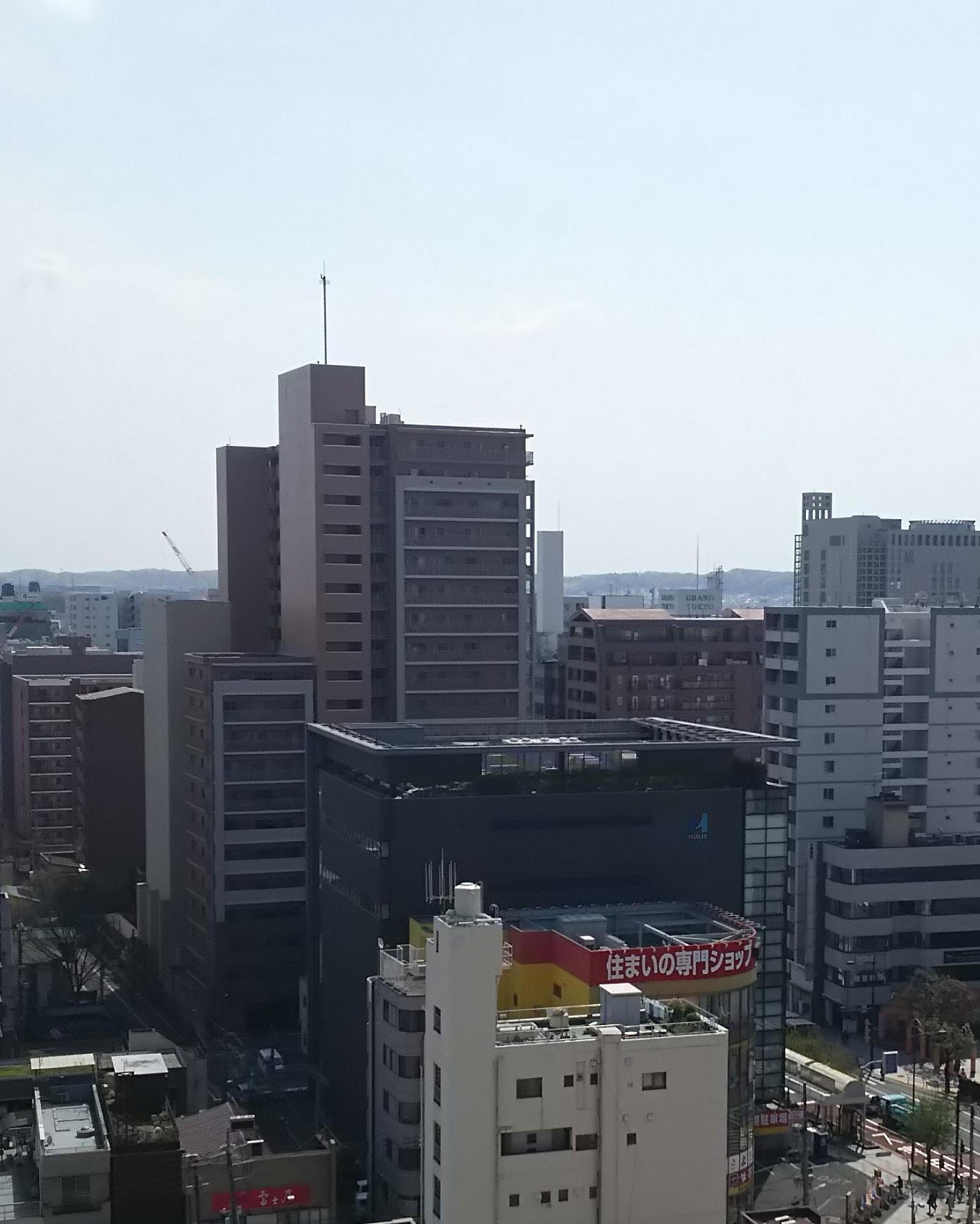
10. Planning and design of suburban fortunes: Urban policies and suburban socio-economic and spatial transformation in Tokyo Prefecture under three-tier
governmental system.
Hiroaki Ohashi
Hiroaki Ohashi is a registered Professional Engineer (Civil Engineering: Urban and Regional Planning), Approved Urban Renewal Planner and registered Real Estate Notary in Japan. He holds a MSc with Distinction (in Built Environment: Advanced Architectural Studies) and MArch (in Architectural Design) from University of London (UCL), as well as a BEng (in Civil Engineering) and MEng (in Civil Engineering) from the University of Tokyo. He has professional experiences in international and domestic consultancy services in planning at two construction consulting firms within the same company group in Japan. His international work experiences include Qatar, Mongolia, Ghana, Vietnam and China.
keywords: suburban shrinkage, suburban revitalisation, urban policy, spatial planning, economic development.
email: hiroaki.ohashi.14@ucl.ac.uk
35
The aim of this research is to identify policy and planning implications to achieve sustainability and regeneration of the suburban territory of Tokyo Prefecture which is now confronted with suburban shrinkage, and to obtain significant lessons learnt from it for the future planning of other large cities worldwide. The suburban territory of Tokyo Prefecture is officially called the ‘Tama Area’, which constitutes thirty suburban municipalities, namely 26 cities, three towns and one village. The suburban territory of Tokyo Prefecture stretches over one thousand square kilometres and accommodates a population of over four million.
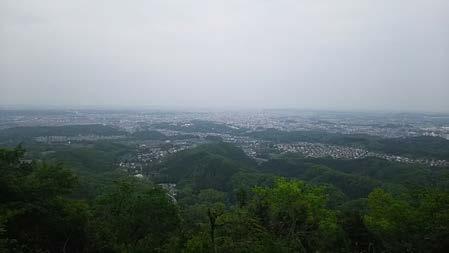
In recent decades, Tokyo Metropolis has experienced both socio-demographic transformation such as population ageing and falling birth rates, and economic restructuring such as growing high-tech industries and deindustrialisation under the situation of continuing globalisation. Since the early 2000s, political and policy stress have been shifted to the metropolitan city centre under the global competitiveness agenda. In this trend, a polycentric spatial structure of Tokyo Metropolis has been deforming under a strong back-to-the-city movement of both workplace and residence. Consequently, the suburban territory of Tokyo Prefecture, which is now at a very matured stage of urbanisation, long after massive suburbanisation during rapid economic growth, has experienced new multifaceted suburban restructuring in the specific metropolitan contexts. This suburban restructuring has incorporated different trajectories of constituent suburban municipalities depending on their geographical locations and past development paths, some of which has already showed signs of decline. Therefore, it is a big planning issue to examine this suburban restructuring in the context of stagnation
and/or decline, and clarify how urban policies should be formulated to avert further suburban decline and/or stagnation and achieve suburban regeneration.
The research will explore this suburban restructuring from the following interrelated dimensions: A) urban policy, B) economic restructuring and C) socio-demographic transformation. Using both quantitative and qualitative methods, the research will employ a two-stage analysis at different scales as follows: 1) all the suburban municipalities and 2) case studies. Firstly, the research will examine their different trajectories by exploring interactions among the three interrelated dimensions. Secondly, the research will investigate influences of urban policies and their changes, which have been implemented under the three-tier governmental system of Japan, on the suburban restructuring. Finally, the research will identify key policy and planning implications for the suburban territory of Tokyo Prefecture, and address application of these lessons to other global cities in other advanced nations and/or rapidly growing large cities in Asian countries.
The suburban territory of Tokyo Prefecture started to face shrinkage at an earlier timing than those of the other largest cities worldwide, most of which are still growing. In this trend, the contemporary suburban restructuring of Tokyo Prefecture would be conceived as one of the new frontiers of suburban phenomena across the world. Other large cities might encounter similar suburban shrinkage in either the short or long-term. Therefore, this research will attempt to provide significant insights for future urban planning debates of the global society on how to tackle suburban shrinkage and achieve suburban sustainability at a matured stage of urbanisation.
36
Photos: Hiroaki Ohashi
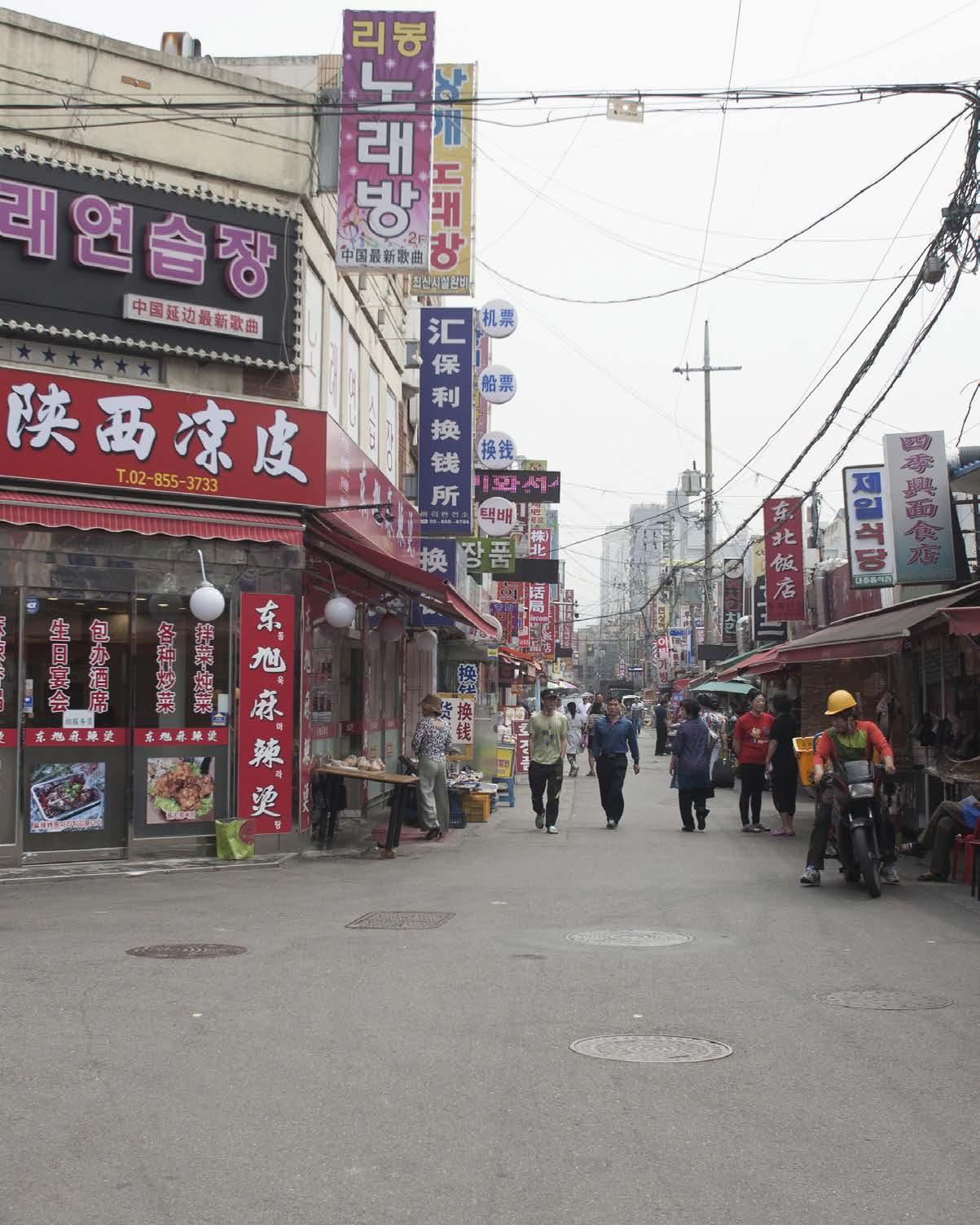
11. The mechanism of social capital in the participatory planning with diversity: The foundation phase of community-led regeneration of Seoul, South Korea
Hyunji Cho
Hyunji is a planner and researcher in urban studies in the field of participatory planning and neighbourhood dynamics. Her interest is in community activism and the micro politics in the urban area including immigrant groups. Her PhD work is under the supervision of Dr Yasminah Beebeejaun and Professor Mike Raco.
keywords: social capital, immigrant group, community-led regeneration, participatory planning.
email: hyunji.cho.14@ucl.ac.uk
37
This thesis aims at examining the construction of local communities in Korean planning system and marginalisation of immigrant groups from it. This study has a particular focus on mechanisms that were used to involve communities in planning to investigate how inclusion/exclusion of communities was formed. Many pointed out that current participatory planning often failed to engage local communities especially regarding so-called ‘hard-to-reach’ groups, such as ethnic minorities (Beebeejaun, 2006, 2012; Beebeejaun & Vanderhoven, 2010; Brownill & Carpenter, 2007; Coaffee & Healey, 2003; Fincher & Iveson, 2008; Vigar, Gunn, & Brooks, 2017). However, studies on how and why marginalisation occurred and which aspects in planning procedure made the involvement of certain immigrant groups more difficult are limited (see Beebeejaun, 2006). The case study in the neighbourhood, which had a significant Korean Chinese population, who shared ethnicity with Korean but was located in disadvantaged positions as low-income immigrant groups, will help us understand the complex dimensions of the unequal social status of the groups and its influence on the unequal participation.
This paper is based on mixed methods research, including document analysis, social network analysis, non-participant observation, and in-depth interviews, in the Garibong-dong community-led regeneration project in Seoul, South Korea during the period 2015-2017.
To explore processes of participation, this thesis was designed to investigate how social capital is formed in neighbourhoods and how that social capital was operated in participatory planning. Particularly, the thesis integrates the concept of recognition within an analytical framework of social capital to investigate how wider social perception toward immigrant groups influence their access to social capital. By including the dimension of recognition, this study explores the marginalisation of immigrant groups in processes of building relationships within a consideration of how broader social exclusions related to the practices of everyday life.
This framework explores several important questions regarding the formation of social capital in the context of heterogeneous urban communities. Researchers argued that social capital, which has developed in neighbourhoods, facilitated participatory planning by drawing voluntary participation through the networks.
However, the social capital remained a highly contested concept by reason that the view overlooked the wider social structure in which the participants are located (Harriss, 2002; Portes, 1998). The actors in the previous social capital studied was frequently understood as atomised units based on the assumption that individual face-to-face contacting can build overall social trust. It similarly appeared in interethnic relationships by focusing on the barriers between the groups based on their cultural differences such as language skills and different cultural norms. However, it is still questionable whether the gap between different ethnic groups occurs only due to the cultural differences that the actors can overcome through individual contacts. Immigrant groups face wider limitations to approach mainstream societies by their legal, economic status, and social subordination based on the cultural understanding of their contested group identities.
The findings show that the formation of social capital in participatory planning is highly influenced by the social positions of participants. This thesis aims at shedding new light on the value of social capital, which has a possibility to elucidate the complex mechanisms forming group boundaries among participants. Social capital forms in-group/out-group by building social trust/ limiting the trust networks and reflects it to planning processes. The framework elucidates the formation of groups among local communities in the interplay between wider social structure and face-to-face interactions. The participants in participatory planning cannot be predicted by a pre-fixed understanding of ‘community’ in planning policies, or they cannot be understood by mere scaling up social interactions, in the sense of the frequency of encounters, from local neighbourhoods. The local participants produced the meaning of in-group and outgroup relationships in the practice of participation. The processes involved judgements about each other as a social partner, and it was sometimes based on the embedded group identities of participants. The formation of networks and the mobilisation of them in planning procedure have been shown through the processes of social capital, and these processes deeply embed social recognition of participants.
38
Photo: Hyunji Cho

12. Exploring the impact of external knowledge spillover on a catching-up economy
Ilwon Seo
Ilwon is a researcher at the Bartlett School of Planning carrying out his PhD under the supervision of Dr Jung Won Sonn and Dr Soong Moon Kang. He worked as a policy researcher at the Ministry of Science, ICT and Future Planning (MSIP) and the Korea Research Institute of Standards and Science (KRISS) in South Korea after finishing his first PhD at the Korea Advanced Institute of Science and Technology (KAIST). His research interest includes knowledge diffusion, technology commercialisation, and innovations in the catching-up economy.
keywords: knowledge production, catching-up, regional innovation, China.
email: ilwon.seo.15@ucl.ac.uk
39
The localised knowledge has been widely accepted as the main factors for regional innovation and growth. In a global context, the economic development strategy of a late-coming country is narrowing the gap in knowledge stock by absorbing the most advanced technologies. Importation of foreign technology makes sense because innovation is costly, risky and path-dependent. This strategy, however, is not always successful because technology diffusion and adoption are neither costless nor simple. This is why the role of indigenous or acquired innovation and its domestic diffusion process in the catching-up process have to be illuminated.
Knowledge diffusion is subject to the interactive choices between demanders and suppliers. The ability to trace the process is mostly limited to the insiders of innovation milieu, leaving the transactions mainly within informal networks. These characteristics make it hard for researchers to access the diffusion process. An in-depth understanding of inter-region knowledge flows pattern can help innovation actors develop innovation strategy and better exploit external technological opportunities. This, in turn, will facilitate them to gain competitiveness in both domestic and overseas markets. Therefore, a study investigating cross-region technology exchange patterns is fundamental to advance the understanding of technology transfer.
This research explores how the late-coming country is absorbing, transmitting, and reproducing the acquired knowledge; reveals the geographical and technological mechanisms behind the diffusion; and assess the economic contribution to the catching-up process based on Chinese knowledge diffusion data.
Based on patent transfer records among Chinese cities, this research addresses three topics. The first topic explores how geographical factors influence the domestic knowledge diffusion and how these impacts have changed over the time. It will also find the underlying factors behind both demand and supply sides such as overseas technology adoptions and patent growth rates. The second topic argues the technological aspects of domestic knowledge flows, analysing which technical sectors are leading, exploring the changes between time periods, and revealing the dynamics of technology
transitions. The last topic considers the economic linkages between acquired knowledge and regional growth. These questions will answer the rarely attempted question how the external knowledge is transformed into the local innovation in a systematic and quantitative way.
The combination of Chinese inter-city patent licensing database derived from 33,570 patent licensing records among 181 Chinese cities with the International Patent Code (IPC) in patent application information, is constructed on a prefecture level. The inter-city level knowledge flows are analysed with network analysis, regression estimation and multivariate analysis. This, in turn, will facilitate other developing countries to gain insights on both domestic and overseas technology acquisition strategy.
Image: Ilwon Seo 40
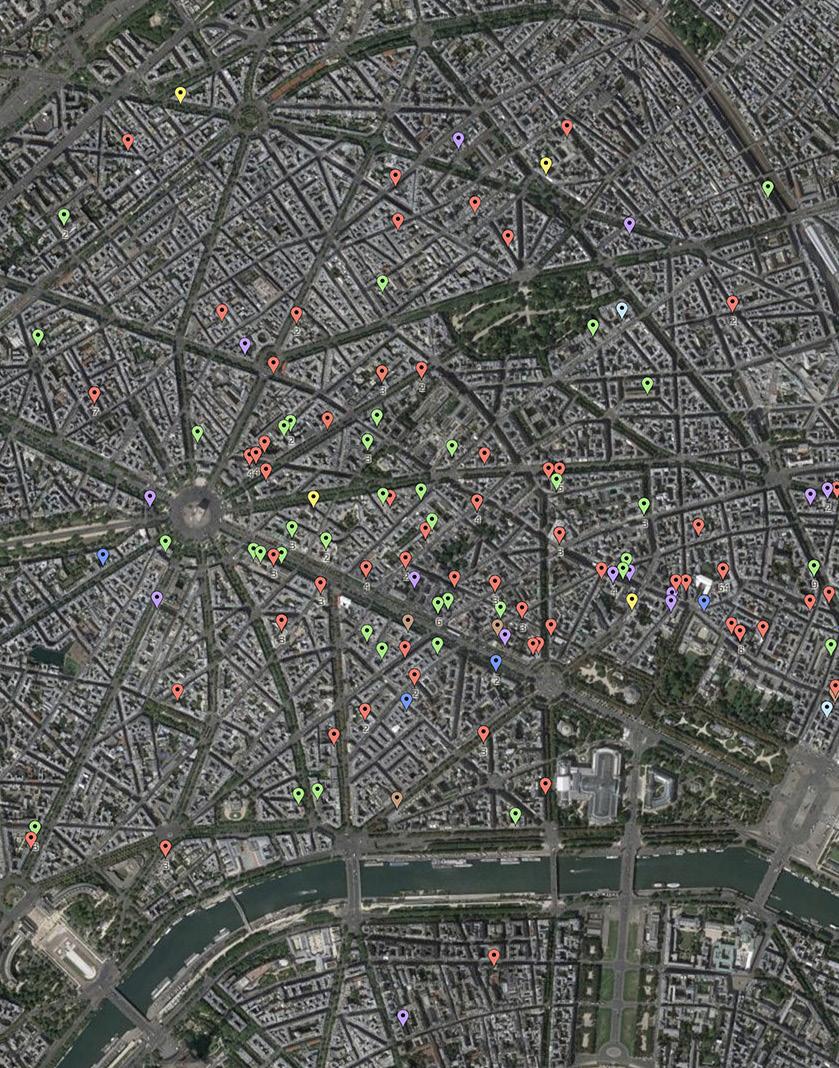
13. The role of built environment quality in FDI attraction: The case of Paris Ile-de-France, 20102015
Jacob Thomas Simpson
Jacob has been working in the fields of planning, property investment and economic development since completing a Bachelor’s in Urban Design and Architecture Studies at NYU and a Master’s of City Planning at MIT. His most recent experience with a local authority in Greater Paris has driven his interest in researching the spatial organisation of foreign firms in large metropolitan regions, the subject of his PhD. Jacob teaches courses in territorial marketing at the Sorbonne as well as architectural history for various American universities in Paris.
keywords: foreign investment attraction, built environment quality.
email: jacob.simpson.16@ucl.ac.uk
Many factors come into play in the choice of location for a multinational enterprise (MNE), from its proximity to local markets and available workforce to the quality of its infrastructure, amenities and public services. As more and more companies go global, their demands for ideal work environments grow, creating greater competition among countries attempting to attract them. Annual reports of the United Nations Conference on Trade and Development showing increasing diversity of destination countries confirm trends observed at national and regional levels. Whereas only a handful of western countries witnessed MNE investments in the 1980s and 1990s, this number has greatly increased, and with it the criteria for consideration.
Public policies in favour of new sources of income and employment have been facilitating Foreign Direct Investment (FDI) for some time, without scrutiny of the built environment as an input or an output of location decisions. In an era of rising scepticism over the benefits of globalisation and neoliberalism, there is need for greater understanding of the relationship between FDI and the physical quality of urban spaces. Academic economic geography and international business and practice and policy-facing literature on investment promotion and site selection have long investigated the role of location in the attraction and development of FDI, but have typically focused on the ‘tangible’ factors that determine location. The theory of agglomeration, which scholars have increasingly applied to international business specifically, places greater emphasis on the ‘intangibles’ that may drive location. However, this literature has typically focused on knowledge and labour market externalities to the exclusion of considerations of qualities of the built environment.
This research aims to evaluate the extent to which the quality of the built environment is important to FDI. In the absence of extant theory and hypotheses on how the specific attributes of spaces attract MNEs to new business locations, empirical research is necessary. With data on inward investment to the Paris region readily available, exploratory data analysis techniques will be used to relate the built environment characteristics of new MNE locations to their economic sectors, nationalities and facility types. Interviews with property professionals and MNE decisionmakers will seek greater understanding of the role that
quality of built form plays in the site selection process. The results could lead to policy recommendations about how particular qualities of the built environment could be better mobilised in FDI promotion.
42
Photo: Jacob Thomas Simpson
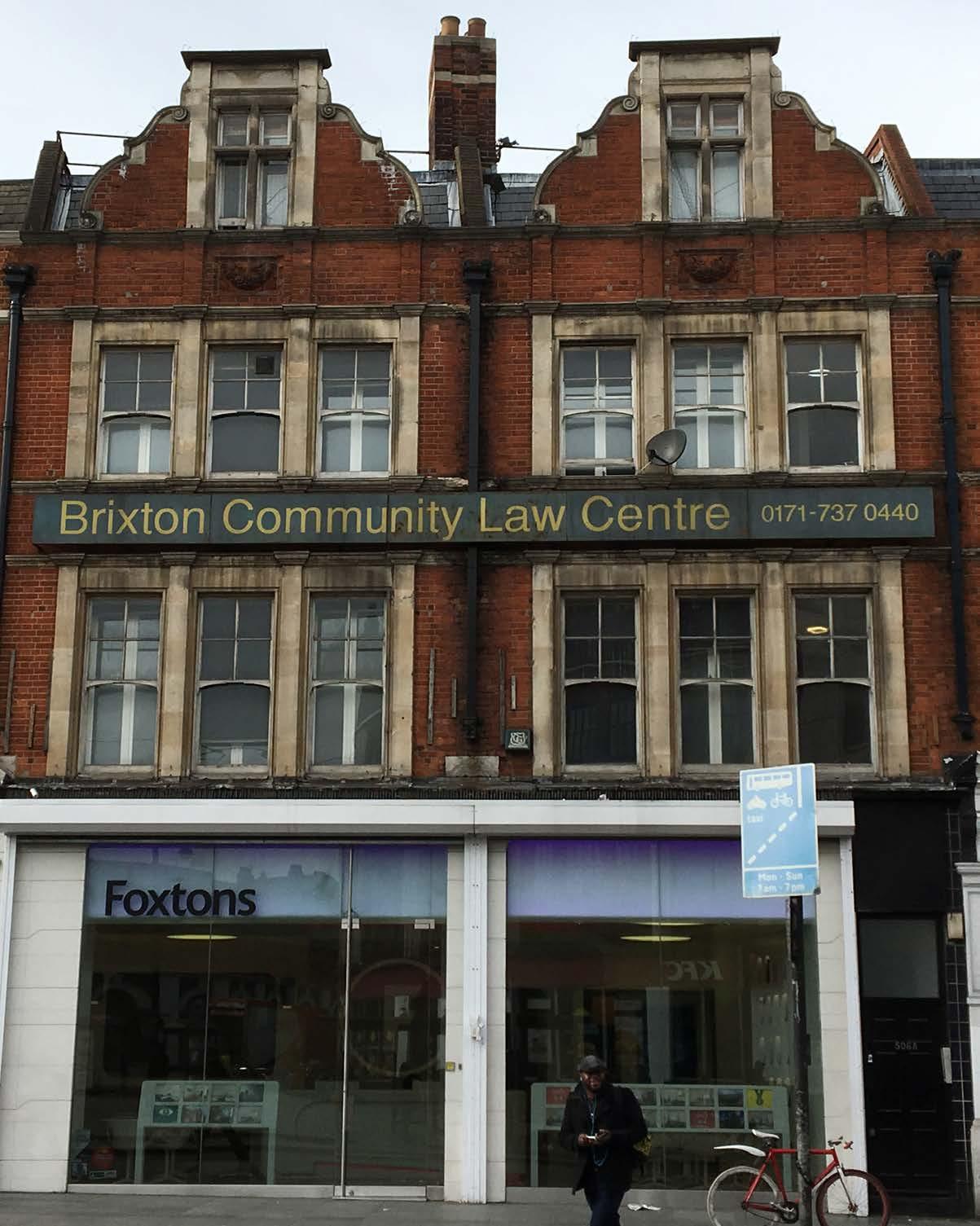
14. Policing and politicising austerity urbanism in London.
Joe Penny
Joe is currently completing his PhD at the Bartlett School of Planning, funded by the Economic and Social Research Council (ESRC). Before embarking on this, Joe worked as a researcher at the New Economics Foundation (NEF) for three years, and led a number of projects on inequality, public services, and austerity. Joe graduated from UCL Geography department in 2009, and gained an MSc from UCL Development Planning Unit (DPU) in 2010.
keywords: austerity, neoliberalism, urban entrepreneurialism, financialisation, politicisation.
email: joe.penny.09@ucl.ac.uk
Almost 10 years after the Global Financial Crisis began, this thesis explores the on-going consequences of this event on local authorities in London in the form of ‘austerity urbanism’. Far from challenging neoliberal discourses and practices, the Global Financial Crisis has strengthened and intensified neoliberal urbanism in the UK through new rounds of fiscal retrenchment, privatisation, accumulation by dispossession, entrepreneurialism, and financialisation. It is possible to read the restructuring of local government since 2010 not simply as retrenchment but as a systemic re-orientation towards a North American style model of sink-or-swim politics (or Municipal Calvinism). This represents a Trans-Atlantic Convergence.
Within this context, this thesis provides new empirical information on how local government is being restructured in England. It shows that the future of local government in England is likely to be shaped by a new set of strategic dilemmas centring around the realities of Municipal Calvinism. Two dimensions capture this changing context. The first is responsibilisation; local authorities are increasingly seeking to divest of discretionary services where politically possible by responsibilising their staff or community groups. The second is entrepreneurialism; local authorities are under pressure to find new ways of making money, in London this is playing out in the form of new real-estate special purpose vehicles (SPVs) and joint ventures (JVs). It is likely that local authorities will become increasingly entangled in financial markets as central government ceases to fund them through the Revenue Support Grant in 2020.
This research demonstrates the importance of taking a multi-scalar perspective on austerity to uncover the push and pull dynamics that explain how austerity is assembled locally as a series of governmentalities on the ground. Austerity has not simply been ‘downloaded’ onto local government; it has been pushed onto local authorities who have readily articulated with many of its central discourses – localism, communitarianism, entrepreneurialism etc. Local government has acted a mediator of neoliberal austerity; pragmatically assembling it and making it work.
Theoretically the thesis has sought to develop and operationalise a nuanced understanding of post-
foundational theory as a framework for understanding urban politics. It draws practices of policing and politicisation together as dialectically related and it seeks to sense and make sense of them across scales. Policing it is suggested can be understood as a post-politicising condition, that is embedded in complex and contradictory ways in depoliticising governance and institutional arrangements, and expressed in anti-political practices. Politicisation is understood in relation to counterconduct and resistance, as a process immanent in many expressions of urban activism and protest where equality is staged, solidarities are forged across space and place, and where space-time is condensed to universalise struggles. Neither can be fully understood without the other, and both prevent the full realisation of the other.
Local authorities in London have sought to roll-out austerity by extending collaborative, participatory and consensual modes of governance. As austerity cuts deepen and as the importance of local economic success increases, it is suggested that these consensual modes of governance are likely to unravel. Institutionally excluded from participating in economic strategy and unconvinced by the self-provisioning zeitgeist as an alternative to state funded/provided ‘discretionary’ services, participatory forms of governance face a crisis of legitimacy. In their place local politics will be polarised around local state coercion and citizen activism, resistance and politicisation.
The political horizon of places of local government in London, in this context, cannot be captured in terms of grand narratives of post-political closure or radical democratic openings. Rather, this research suggests that the contemporary moment of austerity urbanism in London is ambivalent: it is producing opportunities for openings in a context of more general closure. These openings hold the promise of politicisation, but not necessarily the promise of amounting to more than the sum of their parts – a tipping point that could change how and for whom urban governance and politics work.
Photo: Joe Penny
44

15. Fear of crime beyond the walls: Effects of gated communities in neighbouring public spaces – The case of Greater Metropolitan Area of Costa Rica.
Karla Barrantes Chaves
Karla is an associate professor at University of Costa Rica (UCR). She worked for 14 years as a researcher at the Research Program in Sustainable Urban Development (ProDUS-UCR); there, she coordinated and participated in regulatory plans and researches regarding urban planning. She founded and directed for 11 years, the urban renewal project ‘TCU Calle de la Amargura’ focused on safety strategies. She also has taught at UCR for 7 years. This institution sponsors her at UCL. Karla is an architect graduated from UCR, with a Master in Urban and Land Development from Politécnica de Cataluña University.
keywords: safety, public spaces, neighbourhoods, gated communities.
email: karla.chaves.16@ucl.ac.uk
45
The anxiety to be a victim of a crime is a feeling with a deep influence on the quality of life. It could affect the trust in others, the way that people use the city, and the behaviour in public spaces or community relations. However, evidence suggests that frequently the perception of insecurity is higher than actual victimisation (Burgess, 1994; Hassinger, 1985; PNUD, 2005). Several factors have been commonly associated as predictors of fear of crime, such as gender, age and income inequalities (Clemente & Kleiman 1976; Gray, Jackson, & Farrall, 2011; Hale, 1996). Additionally, some authors have analysed the connection of the built environment with this feeling (Brunton-Smith & Sturgis, 2011; Ferraro & LaGrange, 1987; Loukaitou-Sideris, 2012). In this regard, one might consider fear of crime a multidimensional phenomenon.
In Latin America, fear of crime seems to be a constant concern; even though crime is not necessary the first problem, it has been mentioned as the main issue since 2014 (Corporacion Latinobarometro, 2016). Costa Rica is not an exception; consequently, people have taken different types of measures to face this problem. Many of them seek to impede criminals to access their dwellings. This situation has provoked the rise of walls and railings, and the increase of precautional behaviours, such as avoiding some places and reducing walks at certain times a day. Additionally, fear of crime has also altered the urbanisation patterns, giving way to gated communities, whose expansion seems to be based on a fear discourse (Huhn, 2012; PNUD, 2005). Paradoxically, those fortresses, instead being an answer to confront the fear of crime, might be exporting this feeling outside, towards their neighbouring communities.
In this regard, this research addresses the questions of whether gated communities in the urban area of Costa Rica increase the sense of insecurity in their edges, and how this feeling is distributed along the bordering neighbourhoods. Additionally, the intention of this research is to explore if there is any difference in those neighbourhoods with different levels of social inequality. This analysis will be made considering elements of the built environment and social interaction.
Among the reasons that motivate this work is the concern about the growth of gated communities in Costa Rica,
as a response to fear, and the lack of control over their size and type of edges. This segregation of space by walls could represent more than physical barriers. These closed boundaries dominate the modern city and have created isolation and a lack of interchange between the inside with the outside (Sennett, 2018). In this regard, this research aims to support the debate about the measures that Latin America cities are adopting to face the fear of crime and their possible externalities.
The study will be conducted in the Great Metropolitan Area of Costa Rica. It will include selected neighbourhoods with different levels of inequality. The fieldwork will be conducted through exploratory walks, focus groups and some interviews. In this way, this work seeks to provide qualitative evidence, to contribute to the discussion about the relationship between fear of crime and the built environment.
46
Photo: TCU Calle de la Amargura
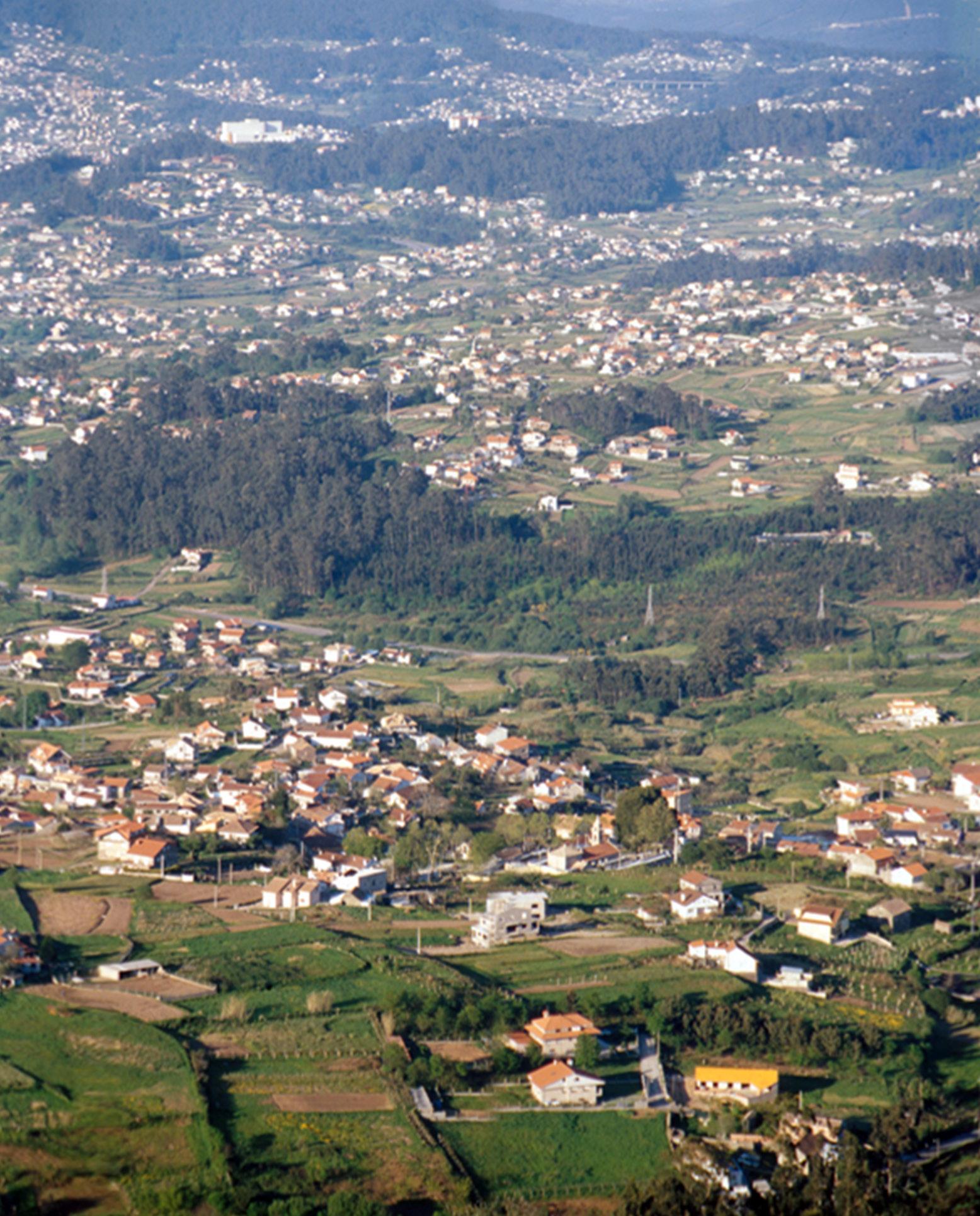
16. Everyday infrastructures in the in-between territories. The potential of decentralised infrastructures in Santiago de Compostela metropolitan area.
Lucía Cerrada Morato
Lucia is an architect and urban designer. After 6 years of working experience in Spain and the UK, she is currently undertaking a PhD under the supervision of Dr Nicholas Phelps and Dr Sonia Abaci. Her research has been awarded the British Spanish Society Scholarship, the Rafael del Pino Scholarship and is currently being funded by ‘La Caixa’.
keywords: sprawl, in-between territories, infrastructures, post-networked city, sustainable.
email:lucia.morato.14@ucl.ac.uk
47
Urban sprawl has been described as one of the most unsustainable models of urbanisation by institutions, academics and politicians (EEA, 2006; Mumford, 1938, 1961; Fulton, Pendall, Nguyen, & Harrison, 2002). Indeed, most research on the subject emphasises the need to control the low density growth of cities and focuses on how to transform and densify these territories to achieve a more sustainable model. In particular, water and sewage infrastructures are identified as the costliest for municipal public expenditure.
However, a recent line of enquiry has challenged the densification approach due to its high cost and potential environmental drawbacks (Charmes & Keil, 2015; Aedes Network Campus Berlin, 2012). These researchers call for a positive engagement with these territories and emphasise the possibilities to improve its performance taking advantage of its morphological and low-density structure. They claim infrastructures have to adapt to the territory they serve and not the other way around. The modern approach to infrastructurestandardised, centralised and monopolistic is challenged and alternative models – decentralised, self-sufficient, communitarian networks, etc. – are proposed as ways to reduce the cost of services and to boost the closed cycle of resources in these territories (Coutard & Rutherford, 2011). This approach has mainly been argued in research carried on the so-called Global South. However, the move away from a centralised, monopolistic model has been pointed out by another group of academics as the cause of the splintering urbanism character of these territories (Graham & Marvin, 2001). This second group sees equity as a requirement for equality.
This research argues that on both sides the discussion has been closed too soon, a universal solution is not possible and this will always be context dependent. Furthermore, literature has simplified the nature of these territories. ‘Sprawl’ or ‘suburb’ concepts, highly influenced by Anglo-Saxon research, depict a monofunctional, lowdensity city while the European model is much more complex and heterogeneous (Wandl, Nadin, Zonneveld, & Rooij, 2014). Despite the urgency of addressing the infrastructure provision and management beyond the compact city, there are no categories in European planning documents beyond the rural-urban classification
and, in consequence, no specific infrastructure strategies to target these particular places.
In order to contribute to this debate, research will be carried out in Galicia, a region in the north of Spain, characterised by its dispersed urban structure and where a variety of water supply and sewage systems co-exist. The research is structured around two questions. First, is there a relationship between the different typologies of sprawl and the different infrastructure models? And if so, why? The second question focuses on the sustainability of this heterogeneous infrastructure scenario; can the provision of networked and alternative forms of infrastructure be part of a sustainable scenario (environmental, economic and socially) of basic services in a metropolitan area?
The comparative case study of three municipalities in the metropolitan area of Santiago de Compostela, the capital of Galicia, with different management models – private, public, and municipal – will allow the research to compare between different governance models and to explore how each one determines wider strategic approaches to the supply of services and eventually to the planning of dispersed territories.
A sustainable future for these territories depends on our ability as urban planners to explore alternative models that are attuned to the capacities of these spaces. The aim of this research is to contribute to a better understanding on the challenges and opportunities regarding water and sewage services.
48
Photo: J.L. Dalda, 2001.
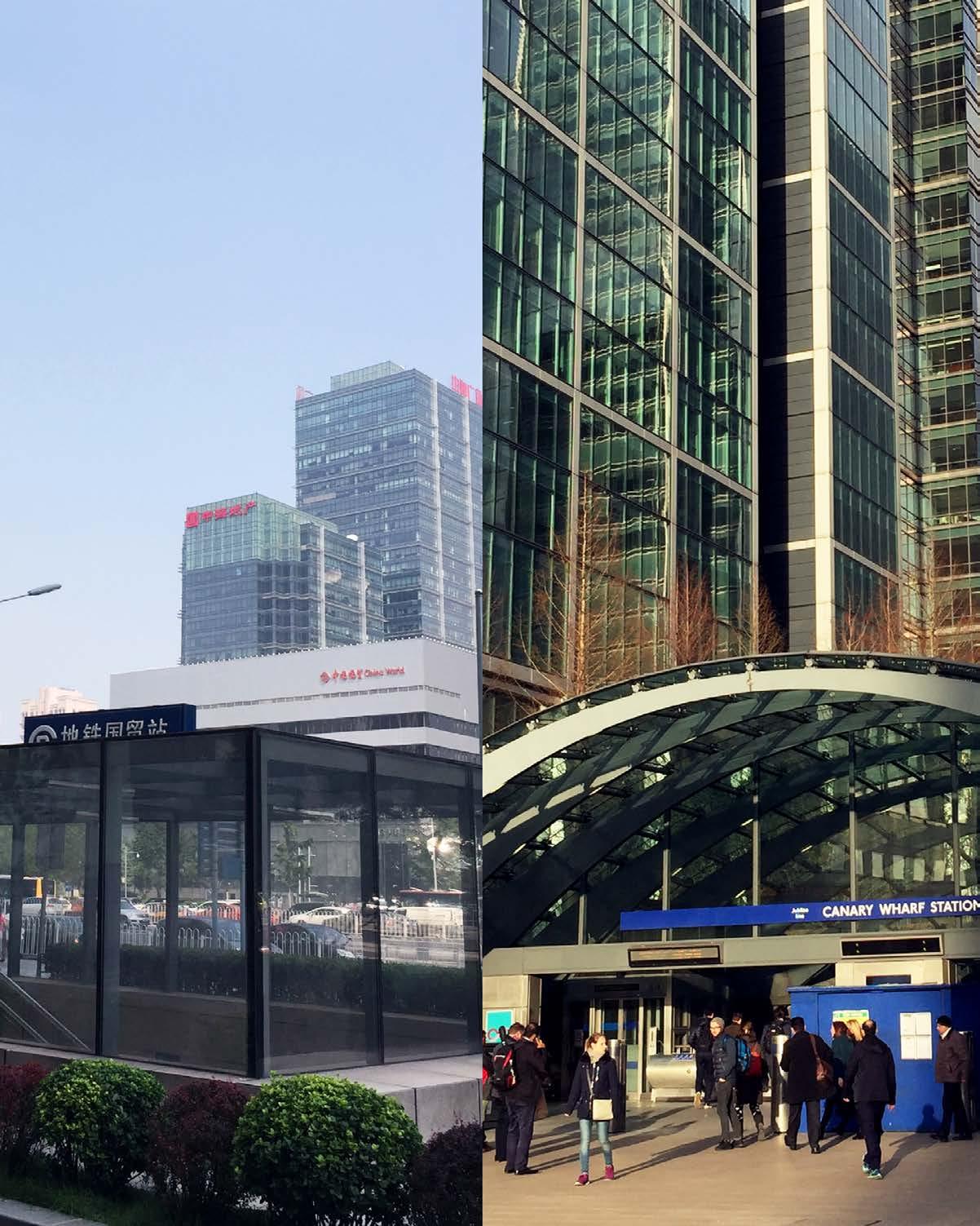
17. Exploring the relation between transport and social equity: Empirical evidence from London and Beijing.
Mengqiu Cao
Mengqiu (Matthew) Cao is a PhD candidate at the Bartlett School of Planning, working under the supervision of Dr Robin Hickman and Dr Iqbal Hamiduddin. He is also a visiting lecturer at University of Westminster and a research assistant at Birkbeck, University of London. He has an MSc in Procurement, Logistics and Supply Chain Management from University of Salford and an MSc in Transport and City Planning from UCL. He received the 2017 First Prize for the best paper at the Royal Geographical Society (with the Institute of British Geographers) Annual Conference (Transport Geography Research Group-sponsored Postgraduate Paper Prize).
keywords: Transport planning; transport modelling; social equity; the capabilities approach; London and Beijing.
email: mengqiu.cao.13@ucl.ac.uk
49
“[W]ealth is evidently not the good we are seeking; for it is merely useful and for the sake of something else”. ------ Aristotle (2015, p. 5)
“[I]f there is equality in distribution there will be no poverty; if there is harmony in society there will be no under-population, and if there is security, there will be subversion”. ------- Confucius (1990, p. 1).
In the transport context, most researchers have not previously treated social equity as a significant issue, partly because the relationship between transport and social equity has not been fully concerned. Social equity in itself is a difficult term to define, and researchers know less about quantifying the contribution that transport investment might make to improving social equity.
From a starting point of interest in social equity issues related to transport and mobility, most researchers have investigated the relationship between transport and social exclusion issues, focusing on aspects such as access to opportunities, income, reduced mobility, class, age, ethnicity, gender, social exclusion, travel poverty, and unequal accessibility. The wider social and economic effects of social exclusion in the transport context have primarily centred on addressing the imbalance in the distributional effects of transport accessibility. Issues relating specifically to social equity still remain underresearched, perhaps due to the difficulties involved in comprehensively comparing, measuring and quantifying these as socially just or unjust. Therefore, there is an urgent need for both theoretical and empirical research to be conducted to explore social equity within the field of transport planning.
The aim of the research is to explore and analyse the relation between transport and social equity, and its effects on neighbourhoods within the city. The outcome of this research could contribute to reducing social inequalities through investment in transport infrastructure and improve transport policy or targeted governance, particularly in terms of social patterns, while creating a fairer society for members of the wide array of different social groups residing within a city.
In order to achieve this aim, the following focused research objectives have been developed:
1) To investigate which parts of the city are more vulnerable to the combined problem of high car dependence and housing affordability;
2) To explore the implications of transport-related equity for individuals, depending on their different demographics, socio-economic characteristics, and geographical context;
3) To examine the key determinants affecting individual’s commuting transport mode choice, particularly from a social equity perspective;
4) To investigate any policy instruments, methods of intervention, subsidies, or other enhancement strategies/ enabling mechanisms that may be available in order to address the issues of social inequality and inequity.
This research has shed new light on the interrelationships between transport and social equity, using both quantitative and qualitative methods. It has further contributed to the existing literature and methodology in four ways. Firstly, a composite car dependence and housing affordability index (CDHA) is developed, using indices of oil vulnerability related to car travel and housing affordability in order to measure high levels of composite car dependence and housing price vulnerability in different areas within a city at an aggregate level, adding to the previous areas of social deprivation related studies (Cao & Hickman, 2017). Secondly, this research has not only focused on people’s everyday travel experiences (also called ‘functionings’ in this case), but also taken into account their expected travel opportunities (also called ‘capabilities’ in this context). Thirdly, issues specifically pertaining to transport-related social equity have been empirically measured and quantified using different types of models in the case studies. Finally, the method influenced by Sen’s capability approach (Sen, 2009) and adapted from Nussbaum’s capabilities approach (Nussbaum, 2011) has been applied in the transport field. This method enables the subjectivities associated with ambiguities in potential needs or expected travel opportunities (i.e. capabilities) to be quantified to some extent, as well as allows comparisons to be made on the capabilities and functioning of different sociodemographics and socio-spatial groupings (Hickman et al., 2017).
50
Photo: Mengqiu Cao

18.
Landscape character conservation through
local communities’ participation: The case of Colombian cultural landscapes.
Miguel Hincapié Triviño
Miguel is an architect and urban designer with more than 12 years of professional experience in both the public and private sector. Currently, he is researching on planning for conservation of cultural landscapes through local communities’ participation under the supervision of Dr Elisabete Cidre and Dr Michael Short. The Colombian Department of Science, Technology and Innovation (COLCIENCIAS) funds his research. Previously, Miguel was Deputy Director of the Heritage Institute of Bogota, where he was directing conservation and management plans for the city centre. He has a degree in Architecture from UNAL (Manizales – Bogota) and a MArch in Urban Design from the Bartlett School of Architecture – UCL (London).
keywords: Cultural landscapes, landscape character, conservation planning, communities’ participation, Colombia
email: miguel.trivino.16@ucl.ac.uk
51
The research investigates the contribution of local communities’ initiatives and practices in the conservation of landscape character in Colombian cultural landscapes. ‘Landscape character’ is usually defined as “a distinct, recognisable and consistent pattern of elements that makes one landscape different from another, rather than better or worse” (Swanwick, 2002). Likewise, ‘character’ in conservation and planning practices has been analysed and discussed by different authors using the terms of ‘spirit of place’ or ‘genius loci’ and defining it as the different characteristics that make places unique (Larkham, 1996). Different local and national governments and institutions have used this concept for the purpose of assessing and defining strategies for their conservation efforts. However, there is still a significant ground to research the elements and processes behind the physical and visual characteristics that contribute to the definition and conservation of landscape character. Furthermore, there is a need to research the possibility for policy and practice to integrate and support landscape change by actively promoting the enhancement of its character.
The conservation of ‘landscape character’ is a relevant topic for both the institutions dealing with territorial planning and development, and local communities in how they direct changes in their environment. It is a wellrepresented aspect since it ‘deals so much with values and attitudes towards past and contemporary places, and how they are to change in the future’ (Jive´N & Larkham, 2003). On a global scale, successful conservation of evolved continuing cultural landscapes is seen as one that accommodates change while retaining character, cultural traditions and economic viability (Buggey & Mitchell, 2003). It involves the work of many landowners, users, stakeholders from multiple jurisdictions, interests and conditions (Olivier, 2003). The role of public and private institutions, from different scales, acting in partnerships with local communities and stakeholders, is a key in the process.
Conserving valued aspects of landscapes is highly relevant for local communities because such landscape aspects become closely associated with the identity of individuals and with their sense of self and within a community (Jive´N & Larkham, 2003). Landscape definitions remind us that communities are the ones that ‘forge and model
landscapes historically and thus place a seal of identity upon it’ (Castiglioni, Parascandolo, & Tanca, 2015, p. 14). In this context, the research focuses on the question of how, and to what extent, local communities’ participation, in the form of initiatives and practices, actively promotes landscape character conservation in Colombian cultural landscapes. The analysis includes different relationships of place attachment, memory and significance, and emphasises the practices associated to productivity, social interaction, enjoyment and cultural identity, definitive in the development of collective and individual goals.
The research uses qualitative research methodology, multiple case study approach in particular, to analyse two paradigmatic Colombian landscapes: Santa Cruz de Mompox and The Coffee Cultural Landscape. These landscapes are located in different cultural and geographical regions, with distinctive scalar, social, economic and physical characteristics. The first landscape is a wetland or ‘cienaga’ at the scale of a municipality, and the second one is a complex system of towns and farms in the Andean mountains at the scale of a region. Both cases are predominantly rural areas and have been recognised and added to the National Heritage List and the World Heritage List. The variety of scales, contexts, as well as the diversity of communities participating, contributes to maximising the utility of information derived from different circumstances within a single national context and similar normative conservation frameworks.
The expected results from the analysis of interviews and non-participant observations will contribute to developing a policy framework for improved integration of such initiatives and practices with current conservation planning policies at the top levels. The framework will also consider the inclusion of a continuous evaluation of changing social values that determine selection criteria, objectives and strategies for conservation planning processes in similar areas.
52
Photo: Miguel Hincapié Triviño

19. Social equality in urban conservation: Housing in Mexican historic centres of Mexico City and
Guadalajara.
Mónica López Franco
Monica is an architect and urban planner. She is a PhD Candidate at the Bartlett School of Planning working under the supervision of Dr Elisabete Cidre and Dr Claudio De Magalhaes. Monica has worked in a variety of projects as an urban planner in urban and social development projects both in private and public sectors in Mexico. She has an MSc in Sites and Monuments Conservation (University of Guanajuato, Mexico) and holds a Degree in Architecture (ITESO). Her research is sponsored by a doctoral grant by Mexico’s Science and Technology Council (CONACyT). Rooted in her interest for urban conservation and social justice, her PhD research seeks to contribute to discussions and approaches to housing within urban conservation frameworks for historic areas to promote social equality.
keywords: urban conservation, housing, urban regeneration, social equality, right to housing.
email: Mónica.franco.15@ucl.ac.uk
53
As cities of developing countries in Latin America face growing urban pressure, historic centres come under increasing stress to not only address traditional cultural attributes but also spatial capacities to deal with rapid urbanisation and social inequalities (UNESCO, 2016, p. 121). This research aims to assess social equality within urban conservation frameworks for historic centres in Mexico within the scope of the right to housing by focusing on access and security of tenure in relation to current phenomena of displacement, exclusion and segregation.
Few studies in the field of urban conservation of historic areas convey the role housing to address the well-being of their local populations from the planning perspective. Therefore, this research reassesses historic centres as areas that hold not only transitional and cultural value but also occupational value and capacity to satisfy social needs without putting heritage at stake. This research looks at how frameworks for urban conservation are addressing and contributing to social equality through the right to adequate housing in Mexican historic cities.
Traditional approaches to historic areas have been promoted by UNESCO’s World Heritage Sites list and have been embedded in aesthetic and economic objectives, which have been integrated into local frameworks to promote and attract investment, largely resulting in tourism-led agendas. Meanwhile, new instruments for urban development such as the New Urban Agenda of 2016 have called for a wider integration of historic areas to address social and urban challenges. As it is, the Right to Housing is a social idea institutionalised by the Declaration of Human Rights, and while it is recognised within national (Mexican) and international laws, it is yet still to be fully recognised and integrated in the field of planning as an approach to address social and urban challenges in historic areas. Showing a gap between the considerations for planning to enhance well-being and for conservation of heritage in historic centres within cities.
Through a comparative study, this research assesses how urban conservation frameworks address and integrate access to housing and security of tenure in the historic areas of Mexico City and Guadalajara. As Mexico City holds the World Heritage Site title and Guadalajara does not, it is argued urban conservation frameworks
for each historic area manifest different approaches to address housing and urban challenges. Further stressed from the different approach historic areas in relation to the wider urban dynamics in which they are embedded. These cases confirm that urban conservation is far more complex than initially assumed (Betancur, 2014, p. 6) by international, national and local institutions and requires frameworks that address social as well as economic and cultural objectives. The research specifically aims to develop a new assessment mechanism to approach urban conservation in Mexican historic cities, also relevant to national and pan-Latin American scopes for assessing and developing new approaches to historic areas.
By concentrating on the right to housing to assess social equality within historic centres and the frameworks directed to achieve them, this research aims to address the phenomena of housing exclusion, displacement and segregation within them. To achieve these objectives, this research makes an examination of urban conservation, housing and social equality values and practical approaches to assess urban conservation frameworks for historic areas in Mexican cities. Doing this by integrating and building upon considerations of the role of historic areas within their wider urban landscape as they increasingly shift from representing a set of cultural assets for consumption to an active role in addressing social challenges and needs in global and local agendas. Further, there is a cognitive analysis of the implementation and reconstitution of urban conservation frameworks and discourses from diverse lines of knowledge at the local level (Brenner & Schmid, 2015, p. 160). This can generate new paradigms that move away from traditional urban conservation frameworks to deliver approaches and outcomes that advance social justice and equality. Thus, the assessment of social equality through housing access and security of tenure within urban conservation frameworks will inform current gaps between social well fare and economic development of historic areas in Mexican cities, and will hold significant relevance as an approach to assess and evaluate historic areas in cities. As a phenomenon that is relevant not only to Mexican cities, the findings of this research will be transferable to other Latin American cities and elsewhere.
54
Photo: Mónica López Franco

20. The construction of the housing market: National housing discourse and market mediation.
Phoebe Stirling
Phoebe Stirling is a PhD student at the Bartlett School of Planning, working under the supervision of Professor Nick Gallent and Professor John Tomaney. Her research area is housing studies. Her work looks at the motivations for ownership of housing and land including the drivers of, and local planning responses to, investment demand.
keywords: housing markets, social constructionism, house prices, market mediation
email: phoebe.stirling.14@ucl.ac.uk
55
Throughout the twentieth century, the UK, along with most developed economies, has seen a dramatic increase in the number of homeowners but also a parallel increase in the value of homes. Access to home ownership has not been accompanied by affordability. House prices have risen steadily throughout this period and in recent years have reached unsustainable levels, by which many people are excluded from the housing market.
To some degree it is broadly acknowledged that individual house purchases, particularly in the capital, are now a means towards both personal and commercial investment as much as for securing personal housing. It is also acknowledged that the role of housing as an asset increases demand for housing within a limited supply, and is thereby a driver of rising prices and deepening ‘crisis’. Mainstream understanding of this market often views its dynamics either as structural change in the housing system, or as micro-interactions at the market level. The first engages explicitly with the (social, political and economic) structure of the housing market. The political economy of the housing system — whether this is conceptualised in terms of financialisation (Aalbers, 2016), ‘more market’ (Van Gent, 2013), or ‘planning that constrains supply’ (Cheshire, 2014) — is analysed in order to argue for specific planning regimes (usually for greater or less regulation and planning control). The second approach analyses agency at market level, aiming to understand how market agents actually work and the degree to which they conform to neoclassical models of exchange. There is little cross over between these two strands of literature. While connections are made between the political restructuring of the housing market and resulting market outcomes, beyond inference, the analysis of market level exchange (the interaction between supply and demand) is largely sequestered from the broader political economy of housing.
This research project investigates a different view of the market. It outlines instead connections between the structure of the housing market and market-level devices that affect market supply and demand. Archive research on housing policy development from the 1910s to the 1980s shows how priorities in national housing strategy have changed. Consumer demand for housing has been drawn on as an active part of policy mechanisms which
have been used to implement change in the housing system. Crucially, consumer demand for housing (and the housing system itself) is found to have played a functional role in political projects not limited to the realm of housing. It is argued that the function of housing as a means towards capital investment and a safe haven for savings is a socially constructed project. Interviews with housing industry professionals and market mediators have been used to address how the construction of market-level rationality is progressed and maintained. The research outlines how mediators align their working practices and business models to shifts in national housing strategy and embed structural shifts into the market. This research highlights the structural drivers of housing consumption in the UK with the tendency to produce housing for investment, and the market level practices that reinforce this direction, through a London case study.

Photos: Phoebe Stirling/Alex Hocking 56
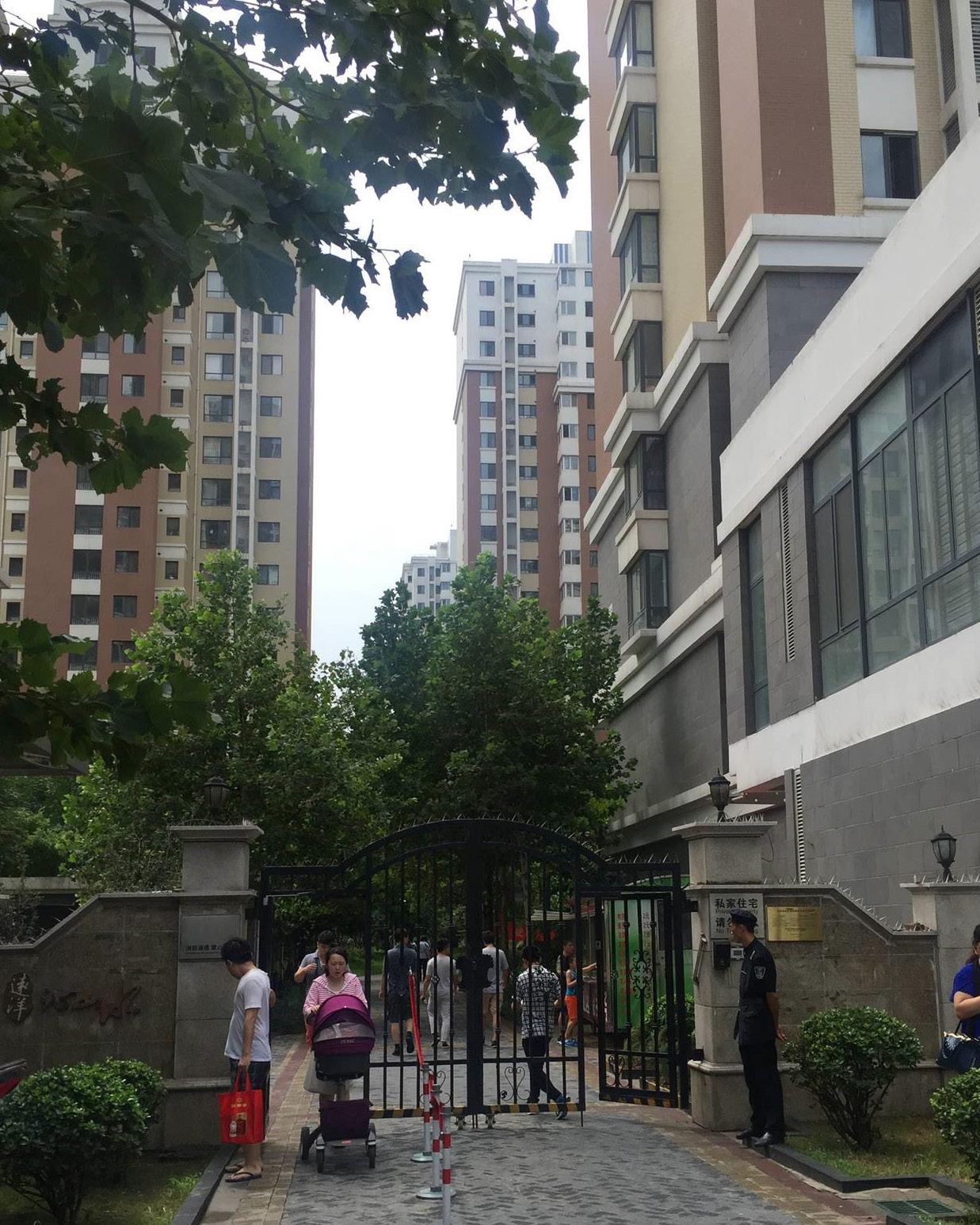
21. Migrant integration in peri-urban Beijing.
Siyao Liu
Siyao Liu is a PhD candidate under the supervision of Professor Fulong Wu, Dr Fangzhu Zhang and Professor Mike Raco. She graduated from Cardiff University in 2013 with an MSc in International Planning and Development. Before that, she completed a four-year study in ethnology and anthropology in Minzu University of China, earning a bachelor’s degree in history in 2011. Given her education background, Siyao has an interest in interdisciplinary study combining insights in urban planning and anthropology. She specialises in the use of participant observation and ethnographic narrative to decipher dynamics behind urban issues, notably those related to migrants, neighbourhood, and urban minorities.
keywords: migrant integration, segmented assimilation, Chinese migrants, neighbourhood governance, urban anthropology.
email: siyao.liu.14@ucl.ac.uk
57
Concerning what happens once immigrants arrive at the destination city and how they adapt to the host society, the dominant interpretation of this process in North America is known as assimilation, which usually involves immigrants learning, sharing and adapting to alternative, different cultures, values and lifestyles. While in Europe, scholars choose to use alternatives such as ‘adaptation’, ‘integration’ or ‘incorporation’ in order to avoid the implication of cultural submersion.
In metropolises, jobs available in labour markets either require advanced education and skills or offer low wages. As a result, a city can have a wide spectrum of migrants, from well-educated graduates, highly-skilled professionals and affluent entrepreneurs, to low-skilled workers, less-educated peasants and penniless scroungers. Diverse socioeconomic backgrounds of these migrants, combined with attributes of urban labour markets, have undoubtedly varied their integration into their receiving cities. The social mobility, upward or downward, and exclusivism from locals reduce intergroup interaction, precipitate social exclusion, increase social tension and eventually undermine stability of the society.
In China, growing rural-urban and inland-coastal disparities have also caused hundreds of millions of migrants from vast rural regions and lagging towns to migrate to the coastal metropolises in search of decent jobs and better futures. They are as vulnerable as those deprived immigrants facing obstacles when trying to integrate into the mainstream society. Not surprisingly, studies on migrant integration in urban China have been on the rise. A large volume of research on the system of household registration (hukou) system shows formidable barriers to rural migrants’ integration into cities as these people are not eligible for most state-provided opportunities, and state or employer-subsidised benefits. Their access to employment, housing, education and health care is severely constrained. Despite a considerable number of studies, researchers barely touch upon neighbourhood characteristics as another potential determinant of migrants’ integration. They overwhelmingly focus on rural migrant instead of seeing rural-urban and urbanurban migrants as a whole. Actually, 2009 census data from Beijing Statistical Information Net shows there were 7,044,553 migrants in Beijing among whom 32.31% are urban-urban migrants. As a significant component of
China’s floating population, these urban-urban migrants should not be neglected from our research.
Studies on ethno-cultural enclaves and mixed neighbourhoods have revealed a highly complicated relationship and a vague connection between integration into mainstream society and neighbourhood characteristics. However, segmented assimilation theory and empirical study in ethno-cultural enclaves and mixed residential communities provide an insight that neighbourhoods may play either positive or negative roles in internal migrants’ integration in China. This research aims to interrogate the potential correlation between migrant integration and neighbourhood types. Via an anthropological approach – participant observation, this research collects and analyse qualitative data of migrant households’ daily life in four neighbourhoods. It then draws upon ethnographic narrative to unfold the processes of their different integration approaches and clarify the dynamics behind. The results illustrate that neighbourhood type is significantly related to the outcomes of migrant integration, and different neighbourhoods provide various means for migrant to integrate into receiving city. An explanation for these findings is that neighbourhood is an important space in which economic integration and acculturation happens or social networks are knitted. The existence or absence of the foregoing upward mobility in different neighbourhoods either provides pathways for the adaptation into a new urban society or hinders integration. Meanwhile, insufficient interaction with neighbours may not necessarily mean unsuccessful integration into the city as neighbourhood is not the only place for migrants to integrate; their upward mobility might be achieved outside the residential communities they live in. As migrant integration is found to be significantly influenced by neighbourhood types, the finding expands the segmented assimilation theory to include spatial distribution as another determinant of integration. This detailed empirical investigation also fills the gap of recent research (e.g. Wu & Logan, 2016; Wu & He, 2005) which mainly focuses on the statistics without detailed neighbourhood level observation.
58
Photo: Siyao Liu
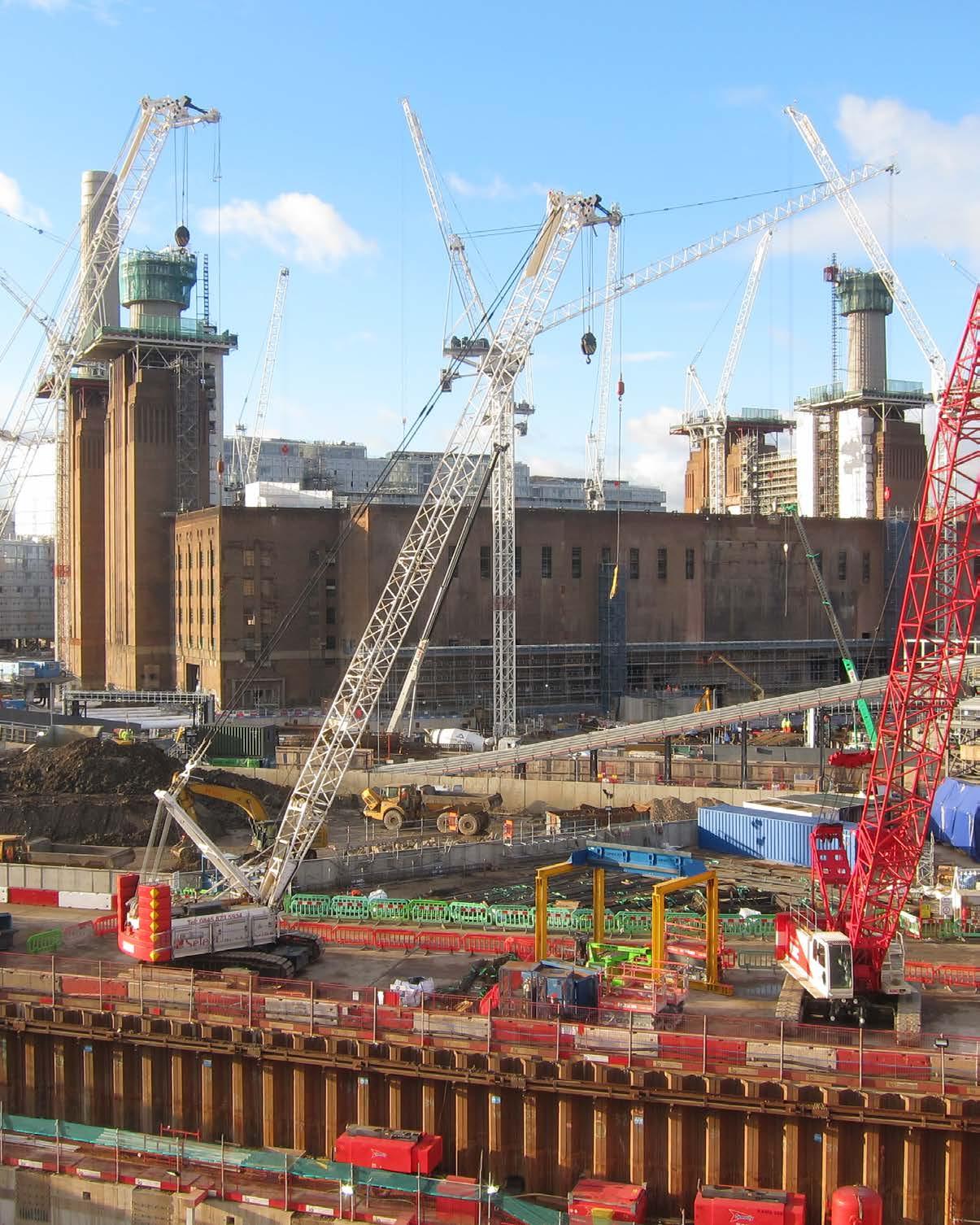
22. Vacant land in London: Narratives about people, space and time.
Sonia Freire Trigo
Sonia is a PhD researcher and teaching assistant at the Bartlett School of Planning. She is also a sessional lecturer at the School of Law and Social Sciences, London South Bank University. She has an MArch from Coruña University (UDC) and an MSc in Regional and Urban Planning from Madrid Polytechnic University (UPM). She also has several years of experience working as a planner in the private sector. Sonia has worked as a research associate in research projects funded by the European Commission, the Royal Institution of Chartered Surveyors (RICS), and the International Society of City and Regional Planners (ISOCARP).
keywords: urban regeneration, Lefebvre, thematic analysis, Battersea Power Station, Royal Docks.
email: sonia.freire.trigo@ucl.ac.uk
59
Urban vacant land is a phenomenon that has been studied worldwide. All the studies share the belief that urban land is a scarce resource and therefore, its best use is of great importance to society. However, the studies show little consensus on how bring that vacant land back to ‘optimal’ uses.
Most studies about vacant land revolve around two main concerns:
1) the amount of vacant land that exists; and 2) the best way to deal with it. In both cases, the research has identified a series of limitations that have not been considered so far.
With regards to the first group, the literature review has found that the identification process of vacant land has a subjective dimension that has never been accounted for. The factors included in most assessments, such as the minimum size and physical features, are taken as objective indicators for the identification of vacant land. But as the research shows, the consideration of these factors are ultimately dependent on someone’s personal judgement about their relevance. In addition, the subjective dimension of the vacant land problem is also evident in its definition. As the research shows, this definition has been in permanent evolution in England over the past 40 years, depending on the regeneration approach at the time.
With reference to the second group of studies, the research has found that the different models for vacant land transformation fail to account for the dynamic dimension of the process. Hence, the discussions get bogged down with how to best determine the moment when a piece of land becomes a ‘long term vacant site’ that deserves government intervention; or with what is the best sequence of actions to facilitate the transformation of these sites in the shortest amount of time.
Taking these findings into account, the research suggests to look at the problem of vacant land from a different perspective: one that uses a constructivism approach instead of the positivism approach of the previous studies. From here, the research sets out to understand to how the subjective and dynamic nature of the vacant land concept affects the way the problem is understood and therefore addressed.
The research draws on Lefebvre’s and Massey’s work to build an appropriate theoretical framework to answer the previous question. It places people’s multiple understandings of vacant land over time in its center and, through a thematic analysis of the interviews, looks for the alignment and misalignments between these understandings. Two case studies are used to grasp this process: Silvertown Quays, in the east of London, and Battersea Power Station, in the west.
The findings reveal a ‘filtering process’ of the vacant land narratives with reference to the temporal dimension (i.e. the future of vacant land on a dominant position over its past and its present) and to the social dimensions (i.e. preeminence of rights over vacant land to interests over vacant land).
Finally, the research suggests that understanding vacant land as the outcome of this particular filtering process could help redress the limitations of the identification process and consequently, bring about a different way to tackle the ‘vacant land problem’.
60
Photo: Sonia Freire Trigo
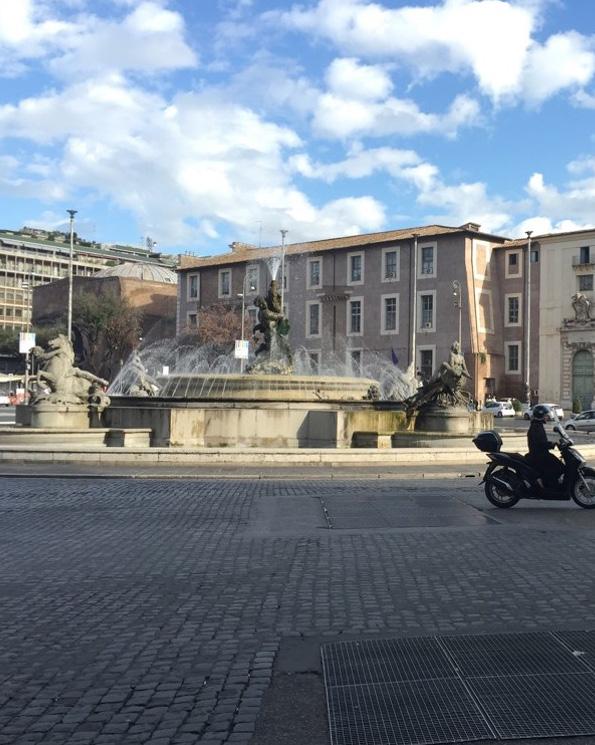
23.
Clusters
of urban renaissance and the new geography of innovation: A case study of Rome.
Stefania Fiorentino
Stefania is an architectural engineer trained jointly by University of Rome “Tor Vergata” and ENSA Paris “La Villette”. Passionate about cities, she is interested in the related socio-economic dynamics. Before teaching and researching at the Bartlett she has worked as a practitioner in Paris, Milan and Rome on architecture, urban regeneration and real estate related issues. Her PhD is undertaken under the supervision of Nick Phelps and John Tomaney, with a sponsor offered through the partnership between CNA of Rome, the Italian trade association for craftsmanship and small and medium-sized enterprises, and Studio SPF, a real estate practice.
keywords: cities, urban economies, creativity, clusters, capitalism.
email: stefania.fiorentino.14@ucl.ac.uk
61
In between top-down strategies and bottom-up processes new types of clusters of production are emerging in urban areas. This study investigates cities as the nexus point of the current geography of innovation focussing on the agglomerations of small businesses in the cognitive-cultural industry of Rome. Since the 1980s, the industrial districts (Marshall, 1920) from the ‘Third Italy’ (Bagnasco, 1977) have been the landmarks of innovation for many studies in the agglomeration theory (Gordon & McCann, 2000; Markusen, 1996) and waves of new regionalism (Storper, 1997). The Italian district model was characterised by its flexible specialisation tied up with strong institutional connections at the local scale (Piore & Sabel, 1984). However, globalisation and new information technologies triggered changes in the traditional industrial districts’ milieu, often causing their loss of competitiveness (Trigilia & Burroni, 2009). Given the crisis of that geographically decentralised district model , this research aims to investigate what is coming next.
A flourishing body of literature celebrates the central role of cities in attracting human capitals and accelerating the pace of the contemporary economic development (Florida, 2002; Glaeser, 2011; Sassen, 2005), This also enhanced by the revival of some more traditional ideas picturing cities as incubators for new activities (Hoover & Vernon, 1959; Jacobs, 1961). Yet, there is a knowledge gap in bridging these renewed incoming demographic flows with the localisation patterns of small businesses displaying some strong cultural embeddedness. On one hand, a central role for urban economies in the generative process of clusters is suggested by the urban concentration of certain bottom-up initiatives and by the rise of new professional figures linked to the creative industry. Examples could be found in the spread of shared service accommodations and the emergence of the makers’ movement, assuming the form of a network of digital artisans (Anderson, 2012; Birtchnell & Urry, 2016). On the other hand, an increasing institutional interest was registered in developing policies to enhance entrepreneurialism and start-ups especially by supporting some related major events or training programs, such as the Maker Faire of Rome. These strategies are rooted also in European Union guidelines and policy framework promoting innovation by establishing a new entrepreneurial culture. This neoliberal approach to job creation has therefore become a common tool to envision
scenarios of recovery from the current recessionary context.
The purpose of this research is to test the hypothesis of urban renaissance and cluster emergence, as well as to shed light on the related dynamics of agglomeration and industrialisation. Therefore, the investigation of the makers’ is identified as a valuable window to examine the resurgence of urban economies as well as to assess the social and industrial changes occurring in many capitalist cities. The cognitive-cultural capitalism (Scott, 2014) – embodying creativity, culture and innovation –offers some guidelines for a theoretical framework to this phenomenon. However, the objective of the current study is not only to provide empirical evidence of the geographical distribution of these clusters of innovation, but also to describe their feature and to propose an incremental contribution to the agglomeration theory. The research is based upon a survey carried out during the 2015 edition of the Maker Faire of Rome, plus the analysis of secondary data and up to 35 interviews among the key representative of the ecosystem of innovation in the same city, including entrepreneurs, practitioners and institutional actors.
These undertakings are expected to shed light on the geography and the features of this new geography of innovation, thereby explaining the shift of small innovative firms towards urban locations and identifying the key trends in the industrialisation and urbanisation of cities in a post-recession scenario. Start-ups, creative industries, Makers and some new social and business intermediaries (such as co-working spaces) all contribute to shape a new economic sector within the urban realm. The data collected so far suggest that those new softtech and creative clusters are more likely to emerge in lagging contexts such as cities in search of a new economic dedication and, more generally speaking, in countries trying to fix their broken economies. The new clusters display the same system of untraded relations and institutional embeddedness from the old industrial district model, ultimately showing the capitalisation of places and of the city itself. Based on these findings, this study propose that regional and urban planning strategies should be revised in ways which better recognise this emerging sector and acknowledge its new soft institutions and the related working spaces.
62
Photo: Stefania Fiorentino
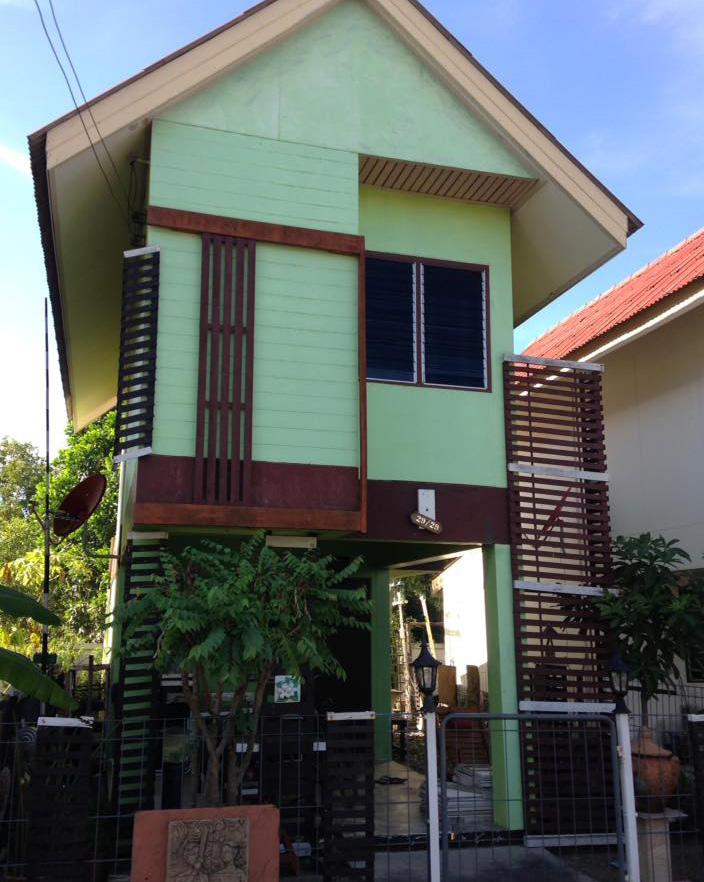
24. Governance in housing delivery networks: The case of two pathways of low-income
housing programmes in Thailand.
Umnaj Thananantachai
Umnaj is a scholarship holder of the Royal Thai Government. He has an MSc in Public Services Policy and Management from King’s College London. Before that, he completed a master’s degree in housing development and a BA in political science at Chulalongkorn University. During his graduate study, Umnaj worked as a coordinating assistant at the Center for Thailand Democracy Watch and a research assistant in Chulalongkorn University and National Institute of Development Administration, Thailand. His research interests are in the areas of governance, decentralisation, public reform, urban politics and low-income housing. His PhD project is supervised by Professor Nick Gallent and Professor Yvonne Rydin.
keywords: governance, housing, New Public Management (NPM), New Public Governance (NPG), Thailand. email: umnaj.thananantachai.14@ucl.ac.uk
63
Since the 1980s, public sectors of developed and developing countries have undertaken changes in the way in which policies and problems are governed. The reform in public sectors reflects a paradigm shift in public administration that attempts to cope with growing complexities of modern social problems. This has posed a significant pressure on the traditional topdown mode of government and meanwhile called for an advanced approach of governing taking in a wider range of actors than in the past as a ‘new’ form of governing method, which is less hierarchical, more networked, and more pluralistic.
This study attempts to explore how the networked modes of governance underpinned by two major concepts—New Public Management (NPM) and New Public Governance (NPG)—operate as the key contemporary strategies to accomplish intricate tasks in public affairs. The preferential utilisation of networked approaches is believed to enhance problem-solving capacities and improve the effectiveness of public service delivery, as the approaches are considered fluid, flexible, and more responsive to changes in dynamic environments than the traditional hierarchical approach. The logic of NPM is to replace the ‘balky and inefficient’ institutions of government by a disaggregation of operating units and an adoption of market-based approaches to improve efficiency and economic performance in the delivery of varied service programmes. From this view, the managerial idea has a great influence on administrative values and practices of the network members that reflect in the outcome and performance of the network as a whole. Similar to NPM, the NPG logic presents a collaborative arrangement and multilateral coordination of service delivery between the state and non-state actors, but its administrative value stands in stark contrast to that of the NPM. The emphasis of NPG is basically concerned with democratic values that are in favour of citizen interests rather than in favour of economic benefits subsumed under the market value in the NPM. Under a non-profit context, the practice of NPG in a way brings about a creation of social space for citizen participation to present and protect interests of their community members.
However, until the present time research on public-sector networks has often overlooked the conceptual contrast of dichotomous networks between the NPM model and the
NPG model and hardly paid attention to the outcomes and impacts of networks driven by these different governance logics. It might be due to a fuzzy boundary prevailing in the concept of networks, where the logics of NPM and NPG are overlapped and blurred. On this account, it needs to be aware that a networked approach is varying according to each value and context, rather than treating it as an undifferentiated form in the same general way. Because of this gap in the literature, there is a need to compare and contrast the practice and implementation of networked approaches based on these contrasting concepts. This underlines the importance of this study, which is to clarify the differences in the NPM and NPG networked approaches by examining the functioning of working networks and interrogating the impacts modified through divergent administrative values.
In Thailand, NPM and NPG co-exist as two different pathways for policy design and delivery. In particular, the practices of these two different networked approaches have found expression in the inter-organisation collaboration in the government housing programmes: Baan Eur-Arthorn (BEA) and Baan Mankong (BMK). This provides an opportunity to employ these policy programmes as the case studies in order to address how these two major networked approaches impact the way the policy is implemented in practice and how policy networks rely on different governance logics can explain differences in problem-solving capacities.
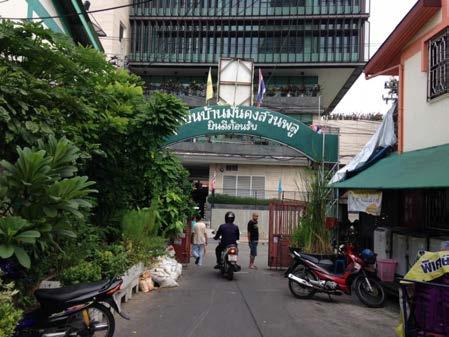
Photos: Umnaj Thananantachai 64

25. Building the entrepreneurial city: Local politics transformation and flagship culture-led redevelopment in Xi’an, China.
Yixiang Sun
Yixiang Sun is a PhD student at the Bartlett School of Planning, University College London. Prior to her PhD study, she obtained her master’s degree in cultural and creative economy at King’s College London. Her research focuses on the political context for delivering large-scale culture-led urban redevelopment projects. She has a specific interest in the Chinese post-reform urban governance transformation. She is under the supervision of Professor Mike Raco and Professor Nick Phelps. Yixiang is also a student member of a range of professional associations, including American Association of Geographers and Regional Studies Association. keywords: China, cultural-led regeneration, entrepreneurialism, local governance, urban policies. email: yixiang.sun.11@ucl.ac.uk
65
Since Harvey published his salient work three decades ago, the notion of entrepreneurial governance has been widely adopted in academic discussions on power mobilisation of contemporary regeneration practices. Concerns have been raised about flagship redevelopment plans with cultural elements that are promoted to use culture as the ‘source-ground’ (Miles & Paddison, 2005, p. 833) around which social and economic problems can be solved painlessly. Such developmental schemes, according to Hall and Hubbard (1998, p. 8), lead to ‘cultural transformations of previously productive cities into spectacular cities of and for consumption, populated by a harmonious and cosmopolitan citizenry’ and attempts to ‘generate new forms of entrepreneurialism within urban populations’ (Raco & Gilliam, 2012, p. 1426). While for a growing number of scholars, the elitist and growth-centred stance embedded in entrepreneurial policy-making inevitably incurs social injustice and marginalisation (Ong, 2007). However, theories of entrepreneurial governance are frequently built on a Western-centrism and generated from the post-War experience of countries in the Global North, while their variation in cities of the Global South with different political traditions still remains unclear. Even for studies trying to find out situations in nonWestern states, it is often the comparatively more prominent and internationalised cities in those regions, such as Hong Kong, Singapore, and Shanghai, on which scholars have focused (Jessop & Sum, 2000; Wu, 2000).
In this context, the research project is carried out with an investigation on the implementation of entrepreneurial policies in China’s culture-led flagship redevelopment. It is undertaken with the case study of Qujiang New District in Xi’an, one of China’s inland cities. The case study is taken as an example to explore how culture has been used as an alternative approach to rescale the city’s existing political structure, and how the concept of entrepreneurialism has been adopted in promoting development as a tactic to reconcile tensions and justify controversial agendas. This research has a special focus on urban entrepreneurialism theories as the conceptual framework to examine the negotiation, collaboration and confrontation between multiple actors in delivering this culture-led redevelopment project and the implication on local political ecosystem. Drawing on data collected from semi-structured interviews with regional and city policy
makers, private business leaders and local residents, it argues that the mobilisation of entrepreneurial policies in this case bears significant difference from that in the Western context. As has been identified in this case, urban redevelopment in post-reform China has a combination of government dominance and penetration of the power of private sectors and local citizens. In this way, the research contributes to the existing literature on China’s contemporary regional and urban governance transformation, culture-led redevelopment and comparative urbanism. It also helps to deepen the understanding of political mobilisation in the non-Western context with a focus on factors in less globalised cities in China. It concludes that there is no universal framework of entrepreneurialism fitting all circumstances and therefore it is the task for policy-makers and academia to think about how to tailor it for the best practice in a specific context.
66
Photo: Yixiang Sun

26. We are designing transport resilience for whom and for what? Understand public transport system resilience from joint perspectives.
Yuerong Zhang
Yuerong Zhang is a second-year PhD student at the Bartlett School of Planning under the supervision of Professor Stephen Marshall and Dr Ed Manley. She is interested in quantitative and topological understanding street networks and metro networks through spatio-network analysis in the aim of guiding resilient transport planning.
keywords: transport resilience, percolation, efficiency, socio-economic effects.
email: yuerong.zhang.14@ucl.ac.uk
67
In recent years, the popularity of ‘resilience’ has exploded in both academic and policy discourse, with numerous explanations for this dramatic rise. Transport resilience is defined as the ability of transport system to withstand a malfunction and maintain or quickly return to normal function, which can be measured by a composite of efficiency cost, reallocation ability and its socio-economic effects. Two main lines (structural and functional resilience) of transport studies have been devoted to investigate the optimal strategy to enable transport infrastructures to meet the travel demand after disruptions. Nevertheless, current transport studies treat structural and functional resilience separately, and no study tells us we are designing resilience of what and for whom, which is essential in resilient planning. Thus, the research here introduces joint perspectives to gain further understanding of resilience performance of transport system through addressing above two limitations.
To reinforce our understanding of public transport resilience performance, the structural-functional resilience (SFR) indicator is introduced to characterise the criticality of stations within the whole system. Furthermore, to answer the question of which we design resilience of what and for whom, the paper combines urban and transport perspectives to investigate the characteristics of vulnerable population group and places. Several socioeconomic and built environment indicators (i.e., young, old population density, income, ownerships of car or van, land use mix, density) are compared with SFR to explore their interactions and thus guide redevelopment of both transport and urban areas.
This research reaches four primary results of significance in reinforcing our understanding of transport resilience. First, the research proposes to use a structural and functional combined approach to investigate the public transport resilience performance that could help us identify the most critical components and thus provide a theoretical foundation for strategic planning. Secondly, the urban and transport planning joint perspectives could bridge the gap between the infrastructure and its serving areas in reference to resilience, as knowing the features of places and populations group is more conducive to giving guidance for redevelopment. Thirdly, the research introduces a new indicator called ‘critical value’ borrowed from network science, which provides
a common language enabling comparison of resilience level between different transport systems. Fourthly, the research provides a retrofit of efficiency estimation. The presumption of efficiency calculation of current studies is that they assume each transport station or intersection having the same interactions possibility, while in effect there is a large difference. The research embeds the spatial interaction model into efficiency calculation to achieve a more accurate understanding of the structural and functional resilience. Therefore, we suggest to analyse the metro system from joint perspectives (structural and functional, transport and urban planning), which might be used as a strategic planning tool for development of metro system and their serving areas into a more resilient state.
68
Photo: Yuerong Zhang
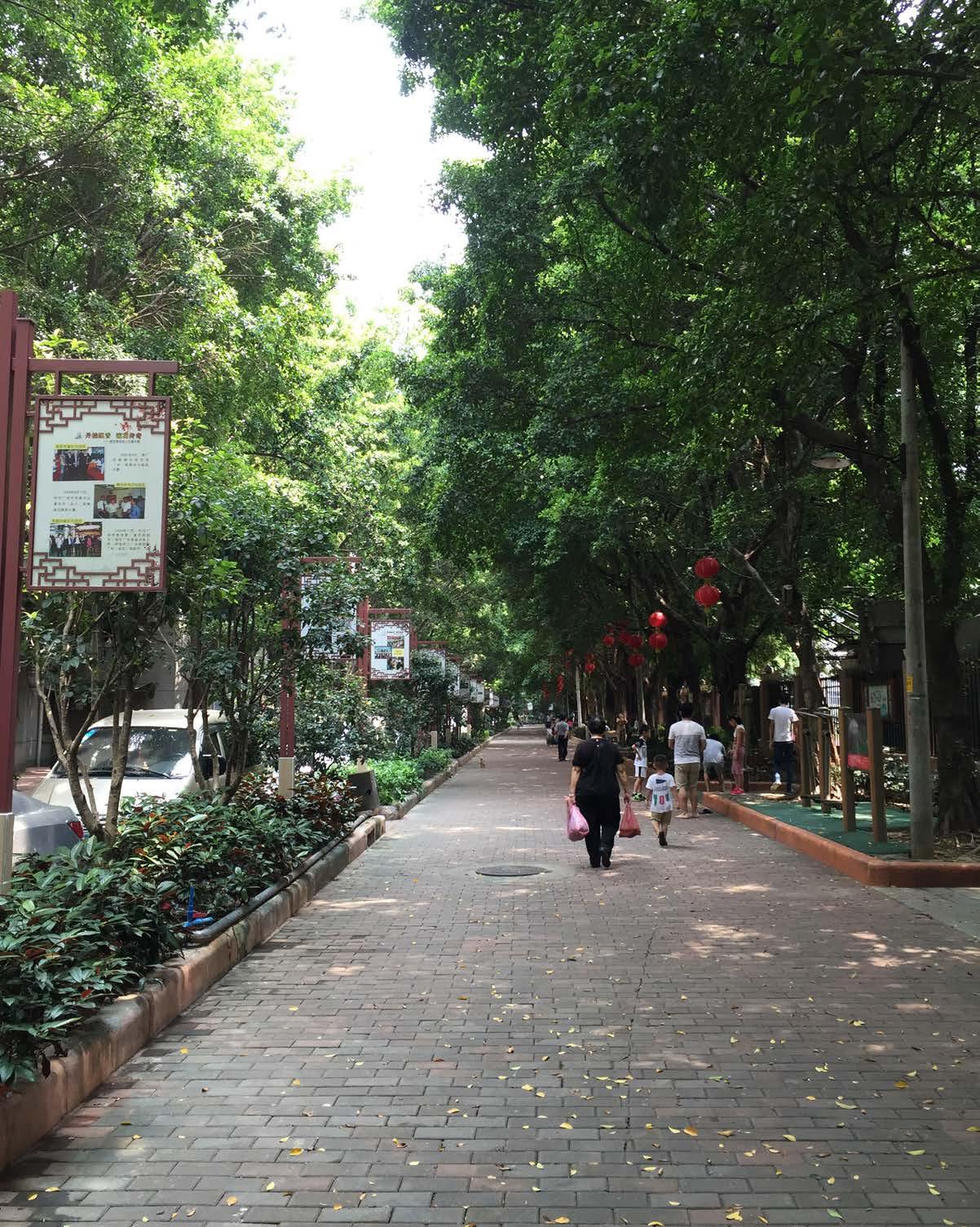
27. Migrants’ subjective wellbeing in urban China.
Yuqi Liu
Yuqi is a PhD student supervised by Professor Fulong Wu and Dr Fangzhu Zhang in the Bartlett School of Planning. Her doctoral study, sponsored by the China Scholarship Council, examines how institutional, socioeconomic, and spatial factors influence migrants’ subjective wellbeing in Chinese cities. Years of field work in the metropolis of Guangzhou has led her to publish in peer-reviewed journals on various themes in social geography, including socioeconomic dynamics and implications of migrant enclaves (Urban Studies, 2015), neighbourhood cohesion under urban redevelopment (Urban Geography, 2017) and socio-environmental determinants of migrant’s subjective wellbeing (Cities, 2017).
keywords: subjective wellbeing, rural migrants, neighbourhood deprivation, sustainable development, urban China.
email: yuqi.liu.13@ucl.ac.uk
69
The last three decades have witnessed a dramatic growth of migrants in Chinese cities. Although a plethora of literature has indicated that migrants have a low standard of living in host cities (Fan, 2008; Gui, Berry, & Zheng, 2012; Li & Wu, 2013; Wang & Fan, 2012), it is only recently that a subjective evaluation of their lives has received academic attention (Jin, Wen, Fan, & Wang, 2012; Knight & Gunatilaka, 2010). For migrants, having a low level of subjective wellbeing not only has a detrimental effect on their work efficiency, social relationships, and health, but also reduces their willingness to settle down and integrate into the host city. In an extreme case, migrants with a very low level of subjective wellbeing may perform deviant behaviours and have conflicts with local residents and the local authority.
This study aims to contribute to the existing literature by particularly focusing on the extent to which, and the ways in which migrants’ socioeconomic status and residential environment influence their subjective wellbeing. Empirically, we take subjective wellbeing as a multidimensional concept that consists of life satisfaction and temporary affects. We use multilevel linear models to identify the factors influencing each component of migrants’ subjective wellbeing. The questionnaire data were collected in 23 neighbourhoods in Guangzhou via a survey during April to August in 2015. This study goes beyond earlier studies on the subjective wellbeing in China by focusing on migrants temporarily living in cities and studying the effect of migrants’ residential environment on their subjective wellbeing (Liu, Zhang, Wu, Liu, & Li, 2017).
The results from descriptive analysis show that migrants are less satisfied with their life and have more negative emotions as compared to local residents. Regression model analysis reveals that the social support migrants can receive and the residential environment in the host city have some effects on migrants’ life satisfaction (i.e. the cognition component of their subjective wellbeing) but have no impact on the positive affect and negative affect (i.e. the emotion component of migrants’ subjective wellbeing).
Existing research have indicated that internal migrants often ask their relatives, friends, native-place fellows (laoxiang), and neighbours (most of whom are native-
place fellows) for help, mostly because they are excluded from social support provided by government and local residents (Liu, Li, & Breitung, 2012; Wang, Zhang, & Wu, 2016). Our findings also confirm this point and further suggest that migrants’ limited access to social support is detrimental to their subjective wellbeing. Thus, policy reforms should prioritise the elimination of discriminatory practices against migrants through providing more social support. Practically, it is advisable to build a cohesive and supportive community and to help migrants to integrate into their neighbourhoods. First of all, migrants should be taken into account in the planning of public services provision. These public services should be allocated spatially based on the number of de facto population (including migrants and local residents) rather than the number of de jure population (which includes local residents only) (Liu et al., 2017). Then, well-trained social workers should be assigned to neighbourhoods/ communities with a huge number of migrants. These social workers are responsible for developing local (i.e. neighbourhoods/communities) networks to help migrants to overcome life challenges and enhance wellbeing (Liu et al., 2017).

Photos: Yuqi Liu 70
TOPIC SCALE LOCATION
71 Asia Europe UK Americas Jorge Martín Sainz de los Terreros Jihyun Kim Umnaj Thananantachai Justinien Tribillon Tingting Lu Nan Li Ine Steenmans Derry O'Connell Karla Barrantes Chaves Alizara Juangbhanich Stefania Fiorentino Dimitris Panayotopoulos Phoebe Stirling Alejandro Rivero Sonia Freire Trigo Calvin King Lam Chung David Kingman Monica López Franco Lucía Cerrada Morato Alexandra Gomes Yingcheng Li Yixiang Sun João Ferreira Bento Zheng Wang Hiroaki Ohashi Hyunji Cho Yuqi Liu Miguel Hincapié Triviño Beatriz Mella Lira Ilwon Seo Joe Penny Siyao Liu City Neighbourhood/District Region Jorge Martín Sainz de los Terreros Jihyun Kim Umnaj Thananantachai Justinien Tribillon Tingting Lu Nan Li Ine Steenmans Derry O'Connell Karla Barrantes Chaves Alizara Juangbhanich Stefania Fiorentino Dimitris Panayotopoulos Phoebe Stirling Alejandro Rivero Sonia Freire Trigo Calvin King Lam Chung David Kingman Monica López Franco Lucía Cerrada Morato Alexandra Gomes Yingcheng Li Yixiang Sun João Ferreira Bento Zheng Wang Hiroaki Ohashi Hyunji Cho Yuqi Liu Miguel Hincapié Triviño Beatriz Mella Lira Ilwon Seo Joe Penny Siyao Liu Conceptual/theoretical Empirical Methodological Jorge Martín Sainz de los Terreros Jihyun Kim Umnaj Thananantachai Justinien Tribillon Tingting Lu Nan Li Ine Steenmans Derry O'Connell Karla Barrantes Chaves Alizara Juangbhanich Stefania Fiorentino Dimitris Panayotopoulos Phoebe Stirling Alejandro Rivero Sonia Freire Trigo Calvin King Lam Chung David Kingman Monica López Franco Lucía Cerrada Morato Alexandra Gomes Yingcheng Li Yixiang Sun João Ferreira Bento Zheng Wang Hiroaki Ohashi Hyunji Cho Yuqi Liu Miguel Hincapié Triviño Beatriz Mella Lira Ilwon Seo Joe Penny Siyao Liu Urban regeneration Housing Urban infrastructures Urban sustainability Regional development Governance Urban transport & mobility Suburban development Urban design Jorge Martín Sainz de los Terreros Jihyun Kim Umnaj Thananantachai Justinien Tribillon Tingting Lu Nan Li Ine Steenmans Derry O'Connell Karla Barrantes Chaves Alizara Juangbhanich Stefania Fiorentino Dimitris Panayotopoulos Phoebe Stirling Alejandro Rivero Sonia Freire Trigo Calvin King Lam Chung David Kingman Monica López Franco Lucía Cerrada Morato Alexandra Gomes Yingcheng Li Yixiang Sun João Ferreira Bento Zheng Wang Hiroaki Ohashi Hyunji Cho Yuqi Liu Miguel Hincapié Triviño Beatriz Mella Lira Ilwon Seo Joe Penny Siyao Liu
CONTRIBUTION
References
1. THE CONTRIBUTION OF SOCIAL CAPITAL TO THE URBAN ECOLOGICAL RESILIENCE OF SELF-HELP SETTLEMENTS. THE CASE OF NEZAHUALCOYOTL, IN THE METROPOLITAN AREA OF MEXICO CITY.
Adger, W. N. (2000). Social and ecological resilience: Are they related? Progress in Human Geography, 24(3), 347-364.
Adger, W. N. (2003). Social capital, collective action, and adaptation to climate change. Economic Geography, 79(4), 387-404.
Ahern, J. (2011). From fail-safe to safe-to-fail: Sustainability and resilience in the new urban world. Landscape and Urban Planning, 100(4), 341-343.
Bahadur, A., & Tanner, T. (2014). Transformational resilience thinking: Putting people, power and politics at the heart of urban climate resilience. Environment and Urbanization, 26(1), 200-214.
Bolos, S. (2003). Organizaciones sociales y gobiernos municipales: Construcción de nuevas formas de participación [Social organizations and municipal governments: Building new forms of participation]. Mexico City: Universidad Iberoamericana.
Davoudi, S. (2012). Resilience: A bridging concept or a dead end? Planning Theory & Practice, 13(2), 299-307.
Espinosa Castillo, M. (2008). Procesos y actores en la conformación del suelo urbano en el ex lago de Texcoco. [Processes and agents in the conformation of the urban land in the former Texcoco Lake]. Economía, Sociedad y Territorio, VIII(27), 769-798.
Gilbert, A. (2007). The return of the slum: Does language matter? International Journal of Urban and Regional Research, 31(4), 697-713.
Gilbert, A. (2013). Housing the urban poor. In V. Desai & R. B. Potter (Eds.), The companion to development studies (3rd ed., pp. 306-310). New York, NY: Routledge.
Google Maps (Cartographer). (2017). Map of Ciudad Nezahualcóyotl. Retrieved from https://www.google. co.uk/maps/@19.3978706,-99.0245565,1701m/ data=!3m1!1e3
Hardoy, J., & Romero Lankao, P. (2011). Latin American cities and climate change: Challenges and options to mitigation and adaptation responses. Current Opinion in Environmental Sustainability, 3(3), 158-163.
Leichenko, R. (2011). Climate change and urban resilience. Current Opinion in Environmental Sustainability, 3(3), 164-168.
Pickett, S. T. A., Cadenasso, M. L., & Grove, J. M. (2004). Resilient cities: Meaning, models, and metaphor for integrating the ecological, socio-economic, and planning realms. Landscape and Urban Planning, 69(4), 369-384.
Platt, H. L. (2010). Exploding cities: Housing the masses in Paris, Chicago, and Mexico City, 1850-2000. Journal of Urban History, 36(5), 575-593.
Satterthwaite, D. (2013a). Urbanization and environment in low- and middle-income nations. In V. Desai & R. B. Potter (Eds.), The companion to development studies (3rd ed., pp. 310-318). New York, NY: Routledge.
Satterthwaite, D. (2013b). Urbanization in low- and middleincome nations in Africa, Asia and Latin America. In V. Desai & R. B. Potter (Eds.), The companion to development studies (3rd ed., pp. 279-285). New York, NY: Routledge.
Selee, A. D. (2011). Decentralization, democratization, and informal power in Mexico. University Park: Pennsylvania State University Press.
Shaw, K. (2012). “Reframing” resilience: Challenges for planning theory and practice. Planning Theory & Practice, 13(2), 308-312.
Szreter, S. (2002). The state of social capital: Bringing back in power, politics, and history. Theory and Society, 31(5), 573-621.
UN-HABITAT. (2006). The state of the world’s cities report 2006/2007: 30 years of shaping the Habitat Agenda. London, England: Earthscan.
UNGA. (2015). Draft outcome document of the United Nations summit for the adoption of the post-2015 development agenda (A/69/L.85). Retrieved from http:// www.un.org/ga/search/view_doc.asp?symbol=A/69/ L.85&Lang=E
Woolcock, M. (1998). Social capital and economic development: Toward a theoretical synthesis and policy framework. Theory and Society, 27(2), 151-208.
3. HOW AND WHY DO PRIVATE DEVELOPERS ENGAGE IN GREEN BUILDING PRACTICE? THE CASE OF BANGKOK, THAILAND
BCI Asia. (2014). Green building market report. Retrieved from http://www.bciasia.com/wp-content/uploads/2015/03/ Green.Building.Market.Report.2014.pdf
Hoffman, A.J. & Bazerman, M.H. (2005). Changing environmental practice: Understanding and overcoming the organizational and psychological barriers (Harvard Business School Working Paper No. 05-043). Retrieved from https://papers.ssrn.com/ sol3/Delivery.cfm/SSRN_ID663564_code254274. pdf?abstractid=663564&mirid=1
Hoffman, A. J., & Henn, R. (2008). Overcoming the social and psychological barriers to green building. Organization & Environment, 21(4), 390–419.
72
UNEP. (2014). Climate finance for cities and buildings – A handbook for local governments. Paris, France: UNEP Division of Technology, Industry and Economics.
Samari, M., Ghodrati, N., Esmaeilifar, R., Olfat, P., & Shafiei, M. W. M. (2013). The investigation of the barriers in developing green building in Malaysia. Modern Applied Science, 7(2), 1–10.
Shafii, F., Ali, Z. A., & Othman, M. Z. (2006). Achieving sustainable construction in the developing countries of Southeast Asia. In Proceedings of the 6th Asia-Pacific Structural Engineering and Construction Conference, Kuala Lumpur, Malaysia, 5-6 September (pp. C-29–C-44).
4. THE URBAN DESIGN PRINCIPLES FOR SOUTHEAST ASIAN CITIES: AN APPROACH FROM THE METAPHOR OF URBAN FOOTPRINTS
Amin, A., & Thrift, N. (2002). Cities: Reimagining the urban. Cambridge, UK: Polity Press.
Askew, M. (2002). Bangkok, place, practice and representation. London, UK: Marc Askew Routledge.
Augé, M. (1995). Non-places: An introduction to an anthropology of supermodernity. London, UK: Verso
Canter, D. (1977). The psychology of place. London, UK: Architectural Press.
Chifos, C., & Yabes, R. (2000). Southeast Asian urban environments: Structured and spontaneous. Tempe, AZ: Arizona State University.
Forbes, D. K. (1996). Asian metropolis: Urbanisation and the southeast Asian city. Melbourne, AU: Oxford University Press
Hayden, D. (1997). The power of place. Cambridge, MA: MIT Press.
Lynch, K. (1960). The image of the city. Cambridge, MA: MIT Press.
Lynch, K. (1981). A theory of good city form. Cambridge, MA: MIT Press.
Massey, D. (1999). Space-time, ‘science’ and the relationship between physical geography and human geography. Transactions of the Institute of British Geographers, 24(3), 261–276.
McGee, G., & Yeung, M. (1977). Hawkers in southeast Asian cities: Planning for the bazaar economy. Ottawa, CA: International Development Research Centre.
Oranratmanee, R., & Sachakul, V. (2014). Streets as public spaces in southeast Asia: Case studies of Thai pedestrian streets. Journal of Urban Design, 19(2), 211–229.
Relph, E. (1976). Place and placelessness. London, UK: Pion.
Ricklefes M, et al. (2010). A new history of southeast Asia. London, UK: Palgrave Macmillan.
Rigg, J. (1991). Southeast Asia: A region in transition. London, UK: Unwin Hyman Ltd.
Sopranzetti, C. (2009). Cars and carts: Marketing, circulation, and fluidity in Bangkok’s central business district. Rian Thai, International Journal of Thai Studies, 2(2009), 71–93.
5. URBAN AND SOCIAL EQUIT Y IMPACTS FROM TRANSPORT: EVIDENCE AND APPROACHES FROM SANTIAGO DE CHILE
Anand, P., Hunter, G., & Smith, R. (2005). Capabilities and wellBeing: Evidence based on the Sen–Nussbaum approach to welfare. Social Indicators Research, 74(1), 9–55.
Beyazit, E. (2015). Are wider economic impacts of transport infrastructures always beneficial? Impacts of the Istanbul Metro on the generation of spatio-economic inequalities. Journal of Transport Geography, 45, 12-23.
Kronlid, D. (2008). Mobility as capability. In T. P. Uteng, & T. Cresswell (Eds.), Gendered mobilities (pp. 15–34). Aldershot, UK: Ashgate.
Nussbaum, M. (2011). Capabilities as fundamental entitlements: Sen and social justice. Feminist Economics, 9(2–3), 33–59.
Sen, A. (1985). Commodities and capabilities. Oxford, UK: Oxford University Press.
Sen, A. (2009). The idea of justice. London, UK: Penguin.
6. SEARCHING FOR AN URBAN SUSTAINABILITY FIX IN CHINA: A CASE STUDY OF THE PEARL RIVER DELTA GREENWAY PROJECT
Caprotti, F. (2014). Eco-urbanism and the eco-city, or, denying the right to the city? Antipode, 46(5), 1285–1303.
Chang, I. C. C., Leitner, H., & Sheppard, E. (2016). A green leap forward? Eco-state restructuring and the Tianjin-Binhai eco-city model. Regional Studies, 50(6), 929–943.
Economy, E. (2013). The environment. In C. Odgen (Ed.), Handbook of China’s governance and domestic politics (pp. 199–209). New York, NY: Routledge.
Pow, C. P., & Neo, H. (2013). Seeing red over green: Contesting urban sustainabilities in China. Urban Studies, 50(11), 2256–2274.
While, A., Jonas, A. E. G., & Gibbs, D. (2004). The environment and the entrepreneurial city: searching for the urban ‘sustainability fix’ in Manchester and Leeds. International Journal of Urban and Regional Research, 28(3), 549–569.
73
While, A., Jonas, A. E. G., & Gibbs, D. (2010). From sustainable development to carbon control: Ecostate restructuring and the politics of urban and regional development. Transactions of the Institute of British Geographers, 35(1), 76–93.
Wu, F. (2012). China’s eco-cities. Geoforum, 43(2), 169–171.
7. IS ENGLISH DEVOLUTION FIT FOR PURPOSE?
Krugman, P. (1991) ‘Increasing Returns and Economic Geography’ The Journal of Political Economy, 99, 3, 483499
8. ASSESSING THE POTENTIAL OF URBAN VOIDS FOR COHESION: THE CASE OF ELEONAS IN ATHENS.
Augé, M. (1992). Non-lieux: Introduction à une anthropologie de la surmodernité [Non-places: Introduction to an anthropology of supermodernity]. Paris, France: La Librairie du XXIe Siècle.
Biris, K. (1966). Αι Αθήναι: Από του 19ου εις τον 20ον αιώνα [Athens: from the 19th to the 20th century]. Athens, Greece: ΜΕΛΙΣΣΑ.
Castells, M. (2010). The rise of the network society. Malden, MA: Blackwell Publishers.
de Certeau, M. (1980). L’invention du quotidien, I, Arts de faire [The practice of everyday life]. Paris, France: Gallimard, Folio Essais.
Doron, G. M. (2000). The dead zone and the architecture of transgression. City, 4(2), 247–263.
Foo, K., Martin, D., Wool, C., & Polsky, C. (2014). The production of urban vacant land: Relational placemaking in Boston, MA neighborhoods. Cities, 40, 175–182.
Foucault, M. (1984). Des espaces autres [Of other spaces: Utopias and heterotopias]. Architecture, Mouvement, Continuité, (5), 46–49.
Graham, S., & McFarlane, C. (2014). Infrastructural lives: Urban infrastructure in context. New York, NY: Routledge.
Graham, S., & Marvin, S. (2001). Splintering urbanism: Networked infrastructures, technological mobilities and the urban condition. London, England: Routledge.
Dennis, M., & Aristodimos, K. (2013). Hellinikon and the question of the large urban void. Unpublished master’s thesis, Massachusetts Institute of Technology, Cambridge, MA.
Law, R., & Wolch, J. (1993). Social reproduction in the city: Restructuring in time and space. In P. Knox (Ed.), The restless urban landscape (pp. 165–206). Englewood, NJ: Prentice Hall.
Mingione, E. (1996). Urban poverty and the underclass: A reader. Oxford, England: Blackwell.
Oswald, F., Baccini, P., & Michaeli, M. (2003). Netzstadt: Designing the urban. Basel, Switzerland: Birkhäuser.
Pope, A. (1997). Ladders. Houston, TX: Rice School of Architecture.
Secchi, B., & Viganò, P. (2011). La ville poreuse: Un projet pour le grand Paris et la métropole de l’après-Kyoto [The porous city: A project for Paris and the Post-Kyoto metropolis]. Geneva, Switzerland: Métispresses.
Talocci, G. (2011, May). A semiotics of urban voids and their resistance. The case of Istanbul. Paper presented at ‘Urban Conflicts: Ethno-National Divisions, States and Cities’ conference, Belfast, Northern Ireland.
9. TRANSIT ORIENTED DEVELOPMENT LAND POLICY FOR PUBLIC TRANSPORT FUNDING
Alterman, R., (2012), Land use regulations and property values: The “Windfalls Capture” Idea Revisited. Invited Chapter 33, pp. 755-786 in: The Oxford Handbook of Urban Economics and Planning. Edited by Brooks, N., Donaghy K.,and Knaap, G.J..
Bernick, M. & Cervero, R. (1997). Transit villages in the 21st century McGraw-Hill, New York.
Medda, F. (2012). Land value capture finance for transport accessibility: a review. Journal of Transport Geography, 25, 154-161.
Suzuki, H., Murakami, J., Hong, Y. H., & Tamayose, B. (2015). Financing transit-oriented development with land values: Adapting land value capture in developing countries. World Bank Publications.
11. THE MECHANISM OF SOCIAL CAPITAL IN THE PARTICIPATORY PLANNING WITH DIVERSITY: THE FOUNDATION PHASE OF COMMUNITY-LED REGENERATION OF SEOUL, SOUTH
KOREA.
Beebeejaun, Y. (2006). The participation trap: The limitations of participation for ethnic and racial groups. International Planning Studies, 11(1), 3–18.
Beebeejaun, Y. (2012). Including the excluded? Changing the understandings of ethnicity in contemporary english planning. Planning Theory & Practice, 13, 529–548.
Beebeejaun, Y., & Vanderhoven, D. (2010). Informalizing participation: Insights from chicago and johannesburg. Planning Practice & Research, 25(3), 283–296.
Brownill, S., & Carpenter, J. (2007). Participation and planning: Dichotomies, rationalities and strategies for power. Town Planning Review, 78(4), 401–428.
Coaffee, J., & Healey, P. (2003). ‘My voice: My place’: Tracking transformations in urban governance. Urban Studies, 40(10), 1979–1999.
74
Fincher, R., & Iveson, K. (2008). Planning and diversity in the city: Redistribution, recognition and encounter. New York, NY: Palgrave Macmillan.
Harriss, J. (2002). Depoliticizing development: The world bank and social capital. London, UK: Anthem Press.
Portes, A. (1998). Social capital: Its origins and applications in modern sociology. Annual Review of Sociology, 24(1), 1–24.
Vigar, G., Gunn, S., & Brooks, E. (2017). Governing our neighbours: Participation and conflict in neighbourhood planning. Town Planning Review, 88(4), 423–442.
15. FEAR OF CRIME BEYOND THE WALLS. EFFECTS OF GATED COMMUNITIES IN NEIGHBOURING PUBLIC SPACES. THE CASE OF GREATER METROPOLITAN AREA OF COSTA RICA.
Brunton-Smith, I., & Sturgis, P. (2011). Do neighborhoods generate fear of crime? An empirical test using the British crime survey. Criminology, 49(2), 331–369.
Burgess, J. (1994). The politics of trust: Reducing fear of crime in urban parks (Working Paper No. 8). London, UK: Comedia in association with Demos.
Clemente, F., & Kleiman, M. (1976). Fear of crime among the aged. Gerontology, 16(3), 207–210.
Corporacion Latinobarometro. (2016). Latinobarometro [Latinobarometer]. Retrieved from http://www. latinobarometro.org/latContents.jsp
Ferraro, K., & LaGrange, R. (1987). The measurement of fear of crime. Sociological Inquiry, 57(1), 70–101.
Gray, E.; Jackson, J.; & Farrall, S. (2011). Feelings and functions in the fear of crime: applying a new approach to victimisation insecurity. The British Journal of Criminology, 51(1), 75–94.
Hale, C. (1996). Fear of crime: A review of the literature. International Review of Victimology, 4(2), 79–150.
Huhn, S. (2012). Criminalidad y discurso en Costa Rica: reflexiones críticas sobre un problema social [Criminality and discourse in Costa Rica: critical reflexions about a social issue]. San José, C.R: Flasco.
Hassinger, J. (1985). Fear of crime in public environments. Journal of Architectural and Planning Research, 2(4), 289–300.
Loukaitou-Sideris, A. (2012). Safe on the move: The importance of the built environment. In V. Ceccato (Ed.), The urban fabric of crime and fear. (pp. 85–110). London, UK: Springer.
PNUD. (2005). Venciendo el temor. (In) seguridad ciudadana y desarrollo humano en Costa Rica, Informe Nacional de Desarrollo Humano, 2005. [Overcoming fear: Citizen
(In) security and human development in Costa Rica. National Human Development Report 2005]. Retrieved from: http://www.cr.undp.org/content/costarica/es/ home/library/human_development/informe-nacionaldesarrollo-humano-2005.html.
Sennett, R. (2018). Building and dwelling. Ethics for the city. London, UK: Penguin.
16. EVERYDAY INFRASTRUCTURES IN THE INBET WEEN TERRITORIES. THE POTENTIAL OF DECENTRALISED INFRASTRUCTURES IN SANTIAGO DE COMPOSTELA METROPOLITAN AREA.
Aedes Network Campus Berlin. (2012). Public debate. New Dialogues 1 - Lars Lerup & Thomas Sieverts - Lacunas - The middle landscape - Podium discussion [Video File]. Retrieved from https://vimeo.com/42182708.
Charmes, E., & Keil, R. (2015). The politics of post-suburban densification in Canada and France. International Journal of Urban and Regional Research, 39(3), 581–602.
Coutard, O., & Rutherford, J. (2011). The rise of post-networked cities in Europe? Recombining infrastructural, ecological and urban transformations in low carbon transitions. In H. Bulkeley, V. C. Broto, M. Hodson, & S. Marvin (Eds.), Cities and low carbon transitions (pp. 107–125). London, England: Routledge.
EEA. (2006). Urban sprawl in Europe (Report No. 11/2016). Copenhagen, Denmark: European Environment Agency.
Fulton, W., Pendall, R., Nguyen, M., & Harrison A. (2001.) Who sprawls most? How growth patterns differ across the U.S. Washington, DC: The Brookings Institution.
Graham, S., & Marvin, S. (2001). Splintering urbanism: Networked infrastructures, technological mobilities and the urban condition. London, England: Routledge.
Mumford, L. (1938). The culture of cities. New York, NY: Harcourt Brace.
Mumford, L. (1961). The city in history: Its origins, its transformations, and its prospects. New York, NY: Harcourt Brace.
Wandl, A., Nadin, V., Zonneveld, W., & Rooij, R. (2014). Beyond urban-rural classifications: Characterising and mapping territories-in-between across Europe. Landscape and Urban Planning, 130(1), 50–63.
17. EXPLORING THE RELATION BETWEEN TRANSPORT AND SOCIAL EQUITY: EMPIRICAL EVIDENCE FROM LONDON AND BEIJING
Aristotle. (1999). Nicomachean ethics (W.D. Ross, Trans.). Retrieved from https://ebooks.adelaide.edu.au/a/ aristotle/nicomachean/
75
Cao, M. and Hickman, R. (2017). Car dependence and housing affordability: an emerging social deprivation issue in London. Urban Studies, Online First, 1–18.
Confucius. (1990). Analects of Confucius (C. Muller, Trans.). Retrieved from http://www.acmuller.net/con-dao/ analects.html
Hickman, R., Cao, M., Mella-Lira, B., Fillone, A., & Biona, J.B. (2017). Understanding capabilities, functionings and travel in high and low income neighbourhoods in Manila. Social Inclusion, 5(4), 161–174.
Nussbaum, M. (2011). Creating capabilities: The human development approach. Cambridge, MA: The Belknap Press of Harvard University Press.
Sen, A. (2009). The idea of justice. Cambridge, MA: The Belknap Press of Harvard University Press.
18. LANDSCAPE CHARACTER CONSERVATION THROUGH LOCAL COMMUNITIES’ PARTICIPATION: THE CASE OF COLOMBIAN CULTURAL LANDSCAPES.
Buggey, S., & Mitchell, N. (2003). Cultural landscape management challenges and promising new directions in the United states and Canada. In U. W. H. Centre (Ed.), Cultural landscapes: The challenges of conservation (Vol. 7, pp. 92–100). Paris, France: UNESCO World Heritage Centre.
Castiglioni, B., Parascandolo, F., & Tanca, M. (2015). Landscape as a mediator, landscape as commons: an introduction. In B. Castiglioni, F. Parascandolo, & M. Tanca (Eds.), Landscape as mediator, landscape as commons: International perspectives on landscape research. Padova, Italy: CLEUP SC (Coop. Libraria Editrice Università di Padova).
Jive´N, G., & Larkham, P. J. (2003). Sense of place, authenticity and character: A commentary. Journal of Urban Design, 8(1), 67–81.
Larkham, P. (1996). Conservation and the city. London, UK: Routledge.
Olivier, M. (2003). Cultural landscape conservation experiences in Canada. Paris, France: UNESCO.
Swanwick, C. (2002). Landscape character assessment: guidance for England and Scotland. London, UK: Countryside Agency
19. SOCIAL EQUALITY IN URBAN CONSERVATION: HOUSING IN MEXICAN HISTORIC CENTRES OF MEXICO CITY AND GUADALAJARA.
Banderin, F., & Van Oers, R. (2012). The historic landscape: Managing heritage in an urban century. Chichester, UK: Wiley-Blackwell.
Betancur, J. (2014). Gentrification in Latin America: Overview and critical analysis. Urban Studies Research, 2014, 1–14.
Brenner, N., & Schmid, C. (2015). Towards a new epistemology for the urban? City: Analysis of Urban Trends, Culture, Theory, Policy, Action, 19(2–3), 151–182.
Carrión, F. (2005). El centro histórico como proyecto y objeto de deseo. Eure (Santiago), 31(93), 89–100.
Cidre, E. (2004). The significance of urban heritage. In L. Deben, W. Salet, & M.-T. van Thoor (Eds.), Cultural heritage and the future of the historic inner city of Amsterdam (pp. 284–297). Amsterdam, Netherlands: Aksant.
Colomb, C., & Novi, J. (Eds.). (2017). Protest and resistance in the tourist city. New York, NY: Routledge.
Labadi, S., & Logan, W. (2016). Urban heritage, development and sustainability. International frameworks, national and local governance. Abingdon, UK: Routledge.
Schneider, T. (2001). From monuments to urban renewal: How different philosophies of historic preservation impact the poor. Georgetown Journal on Poverty, Law & Policy, VIII(1), 257–281.
UNESCO. (2011). Recommendation on the historic urban landscape. Paris, France: UNESCO.
UNESCO. (2016). Culture: Urban future – Global report on culture for sustainable urban development. Paris, France: UNESCO.
United Nations. (2016). New urban agenda – Quito declaration on sustainable cities and human settlements for all. Retrieved from http://habitat3.org/wp-content/ uploads/New-Urban-Agenda-GA-Adopted-68th-PlenaryN1646655-E.pdf
20. THE CONSTRUCTION OF THE HOUSING MARKET: NATIONAL HOUSING DISCOURSE AND MARKET MEDIATION.
Aalbers, M. B. (2016). The financialization of housing: A political economy approach. London, UK: Routledge.
Cheshire, P. (2014, Spring). Turning houses into gold: The failure of British planning. CentrePiece, 19(1), 14–18.
Van Gent, W.P.C. (2013). Neoliberalization, housing institutions and variegated gentrification: How the ‘third wave’ broke in Amsterdam. International Journal of Urban and Regional Research, 37(2), 503-522.
76
23. CLUSTERS OF URBAN RENAISSANCE AND THE NEW GEOGRAPHY OF INNOVATION: A CASE STUDY OF ROME.
Anderson, C. (2012). Makers: The new industrial revolution. London, UK: Random House.
Bagnasco, A. (1977). Tre Italie. La problematica territoriale dello sviluppo italiano [Three Italies: The territorial issues of Italian economic development]. Bologna, Italy: Il Mulino.
Birtchnell, T., & Urry, J. (2016). A new industrial future?: 3D printing and the reconfiguring of production, distribution, and consumption. New York, NY: Routledge.
Florida, R. (2002). The rise of the creative class. New York, NY: Basic Books.
Glaeser, E. (2011). Triumph of the city: How our greatest invention makes us richer, smarter, greener, healthier and happier, New York, NY: Penguin Press.
Gordon, I. R., & McCann, P. (2000). Industrial clusters: Complexes, agglomeration and/or social networks?
Urban Studies, 37(3), 513–532.
Hoover, E. M., & Vernon, R. (1959). Anatomy of a metropolis: The changing distribution of people and jobs within the New York metropolitan region. Cambridge, MA: Harvard University Press.
Jacobs, J. (1961). The death and life of great American cities. New York, NA: Random House.
Markusen, A. (1996). Sticky places in slippery space: A typology of industrial districts. Economic Geography, 72(3), 293–313.
Marshall, A. (1920). Principles of economics. Palgrave Classics in Economics. London, UK: Palgrave Macmillan.
Piore, M., & Sabel, C. (1984). The second industrial divide: Possibilities for prosperity. New York, NY: Basic Books.
Sassen, S. (2005). The global city: Introducing a concept. The Brown Journal of World Affairs, 11(2), 27–43.
Scott, A. J. (2014). Beyond the creative city: Cognitive-cultural capitalism and the new urbanism. Regional Studies, 48(4), 565–578.
Storper, M. (1997). The regional world: Territorial development in a global economy. New York, NY: Guilford Press.
Trigilia, C., & Burroni, L. (2009). Italy: Rise, decline and restructuring of a regionalized capitalism. Economy and Society, 38(4), 630–653.
25. BUILDING THE ENTREPRENEURIAL CIT Y: LOCAL POLITICS TRANSFORMATION AND FLAGSHIP CULTURE-LED REDEVELOPMENT IN XI’AN, CHINA.
Hall, T., & Hubbard, P. (1998). The entrepreneurial city: Geographies of politics, regime, and representation. Chichester, UK: John Wiley & Sons.
Jessop, B., & Sum, N. L. (2000). An entrepreneurial city in action: Hong Kong’s emerging strategies in and for (inter) urban competition. Urban Studies, 37(12), 2287–2313.
Miles, S., & Paddison, R. (2005). Introduction: The rise and rise of culture-led urban regeneration. Urban Studies, 42(5/6), 833-839.
Ong, A. (2007). Neoliberalism as a mobile technology. Transactions of the Institute of British Geographers, 32(1), 3–8.
Raco, M., & Gilliam, K. (2012). Geographies of abstraction, urban entrepreneurialism, and the production of new cultural spaces: The West Kowloon Cultural District, Hong Kong. Environment and Planning A, 44(6), 1425–1442.
Wu, F. (2000). Place promotion in Shanghai. Cities, 17(5), 349–361.
27. MIGRANTS’ SUBJECTIVE WELLBEING IN URBAN CHINA.
Fan, C. C. (2008). China on the move: Migration, the state, and the household. Abingdon, UK: Routledge.
Gui, Y. X., Berry, J. W., & Zheng, Y. (2012). Migrant worker acculturation in China. International Journal of Intercultural Relations, 36(4), 598–610.
Jin, L., Wen, M., Fan, J. X., & Wang, G. X. (2012). Trans-local ties, local ties and psychological well-being among rural-to-urban migrants in Shanghai. Social Science & Medicine, 75(2), 288–296.
Knight, J., & Gunatilaka, R. (2010). Great expectations? The subjective well-being of rural–urban migrants in China. World Development, 38(1), 113–124.
Li, Z., & Wu, F. (2013). Residential satisfaction in China’s informal settlements: A case study of Beijing, Shanghai, and Guangzhou. Urban Geography, 34(7), 923–949.
Liu, Y., Li, Z., & Breitung, W. (2012). The social networks of new-generation migrants in China’s urbanized villages: A case study of Guangzhou. Habitat international, 36(1), 192–200.
Liu, Y., Zhang, F., Wu, F., Liu, Y., & Li, Z. (2017). The subjective wellbeing of migrants in Guangzhou, China: The impacts of the social and physical environment. Cities, 60, Part A, 333–342.
77
Wang, W. W., & Fan, C. C. (2012). Migrant workers’ integration in urban China: Experiences in employment, social adaptation, and self-identity. Eurasian Geography and Economics, 53(6), 731–749.
Wang, Z., Zhang, F., & Wu, F. (2016). Intergroup neighbouring in urban China: Implications for the social integration of migrants. Urban Studies, 53(4), 651–668.
78
79
Credits
This publication has been produced in an edition of 200 for the for the BSP Expo 2018, 9th - 13th May 2018.
Edited by Karla Barrantes Chaves, Calvin King Lam Chung, Miguel Hincapie Trivino, Alizara Juangbhanich, Dimitris Panayotopoulos.
Printed in England by Printed.com
2 Arcot Court, Nelson Road
Cramlington
Northumberland NE23 1BB
Published by the PhD Community at Bartlett School of Planning
http://www.bartlett.ucl.ac.uk/bartlett/ planning/people/mphil-phd-students
Central House, 14 Upper Woburn Place London WC1H 0NN
Unless stated, this work is licensed under a Creative Commons Attribution-NonCommercialNoDerivatives 4.0 International License. See individual images and texts for alternative licensing statements.
Financial support for the production of Taking Planning Forward: PhD Research Projects at the Bartlett School of Planning, 2017/18 comes from the annual PhD Budget offered by The Bartlett School of Planning.
80




































































